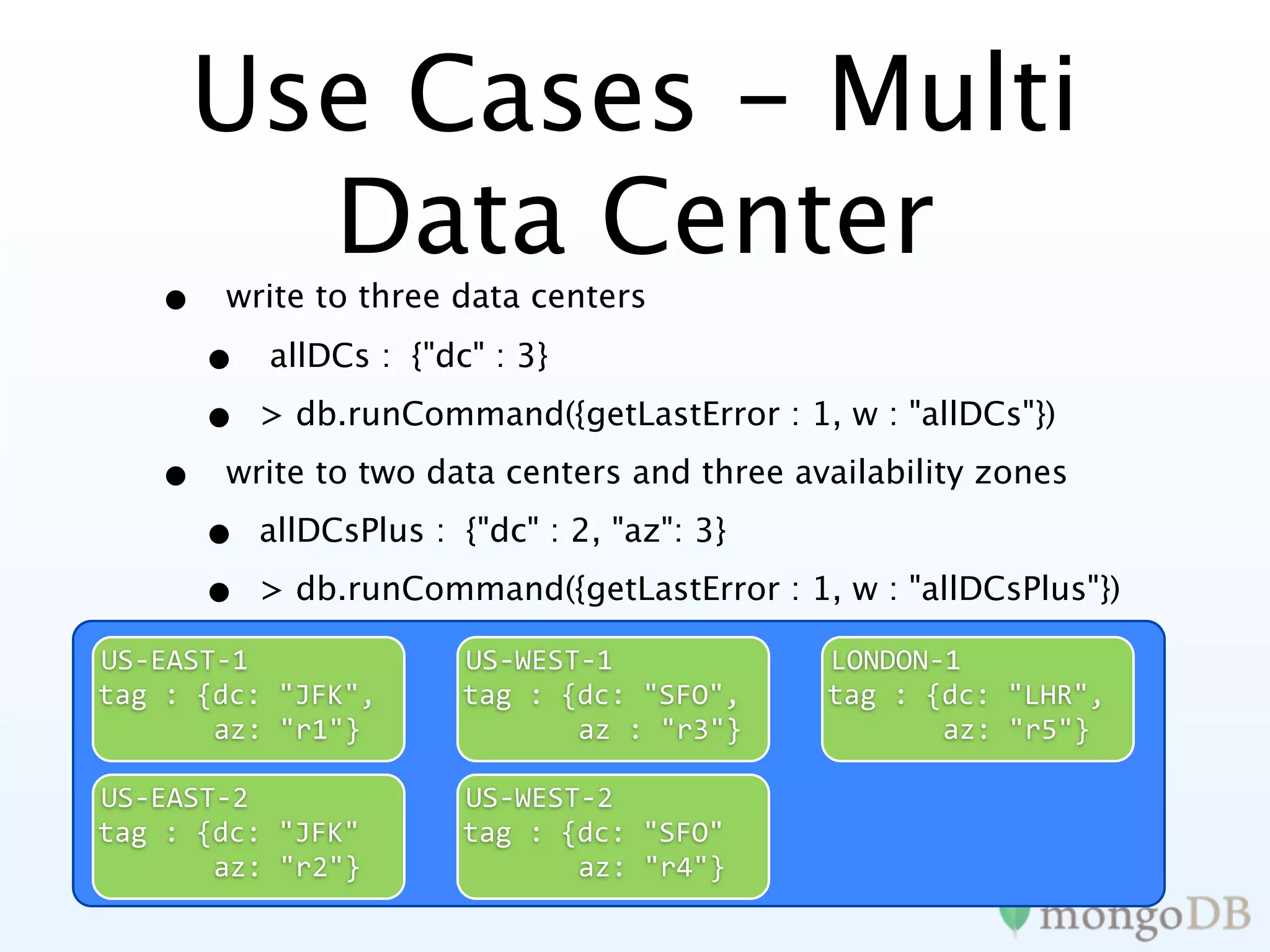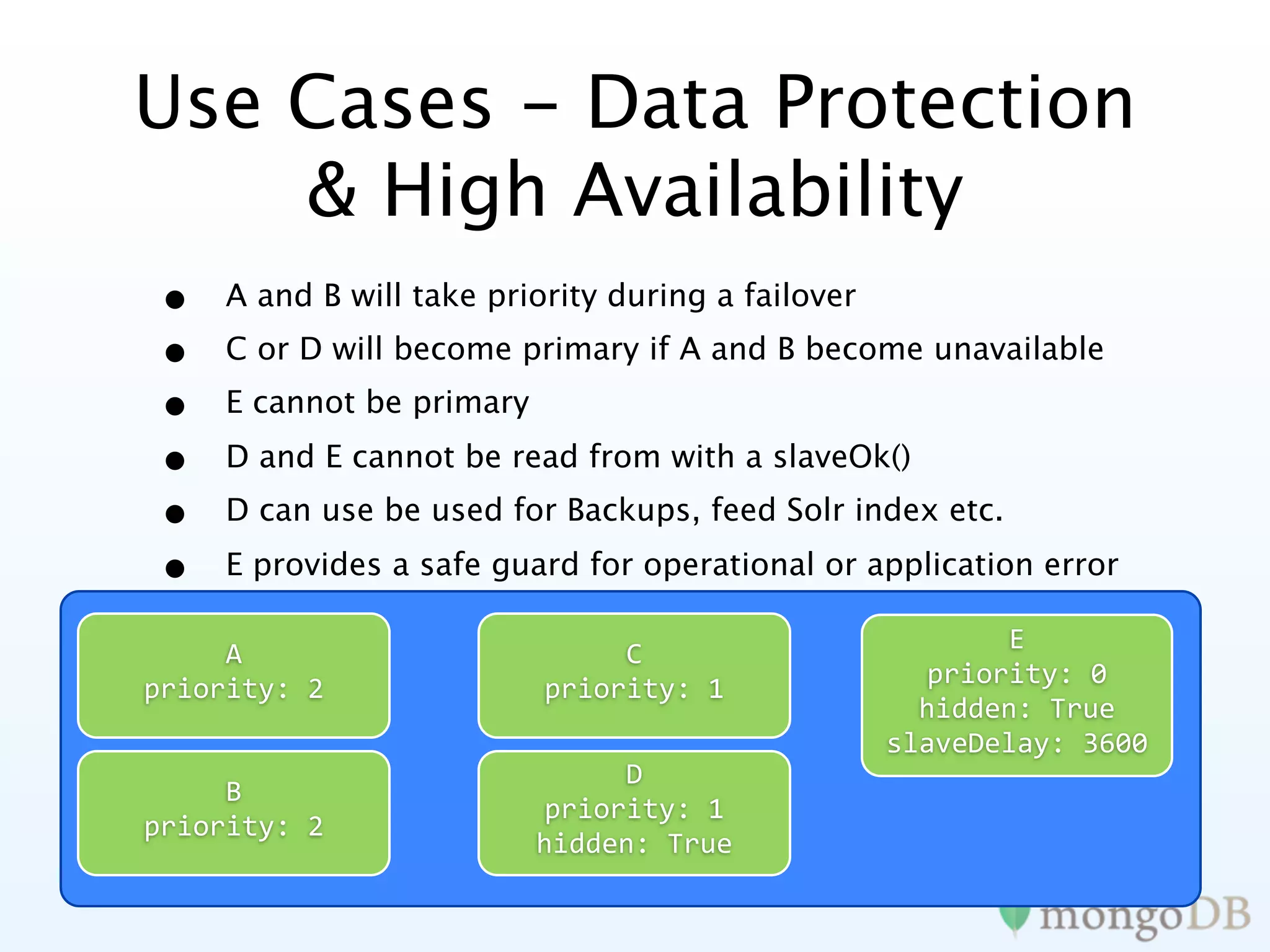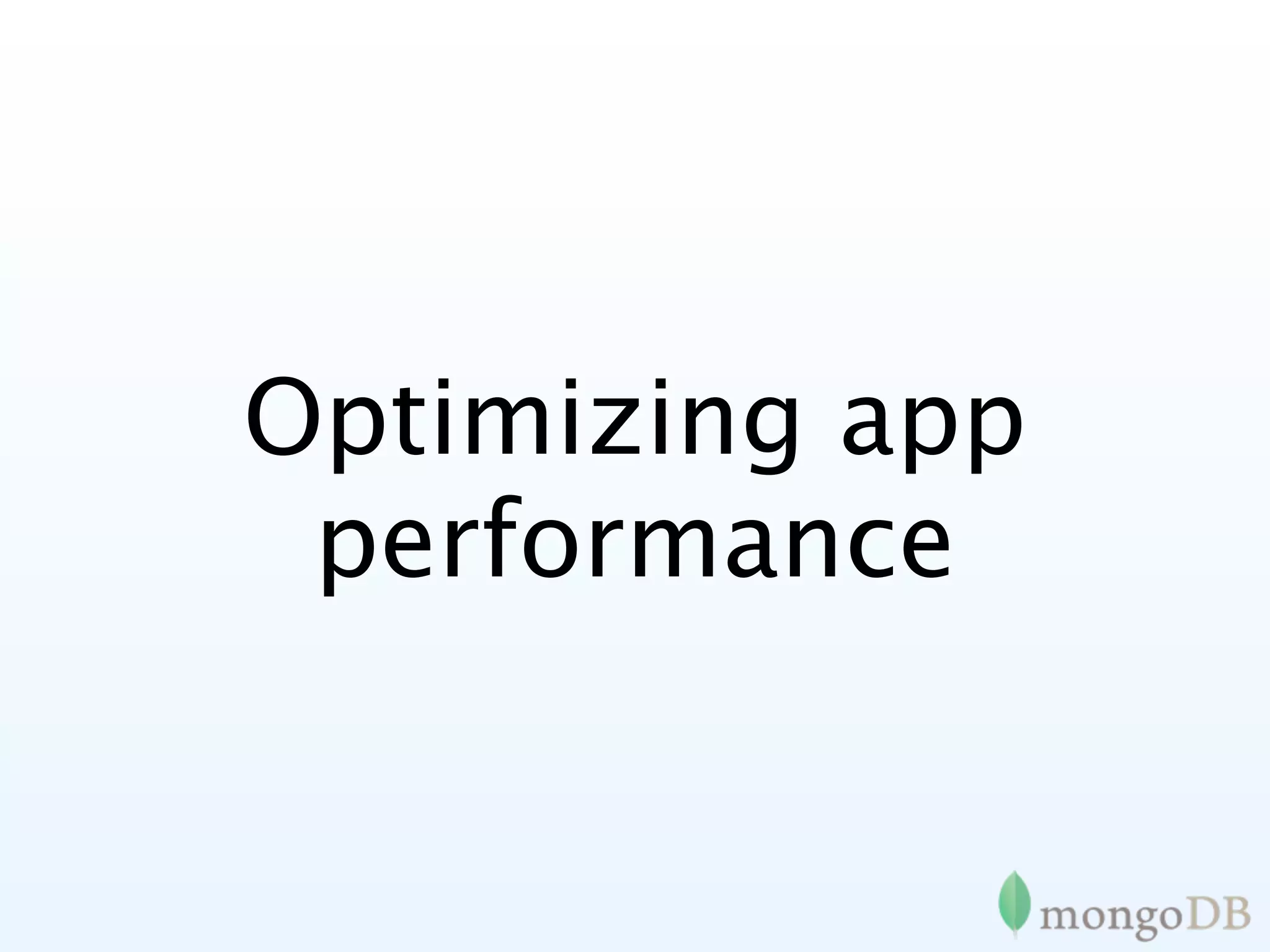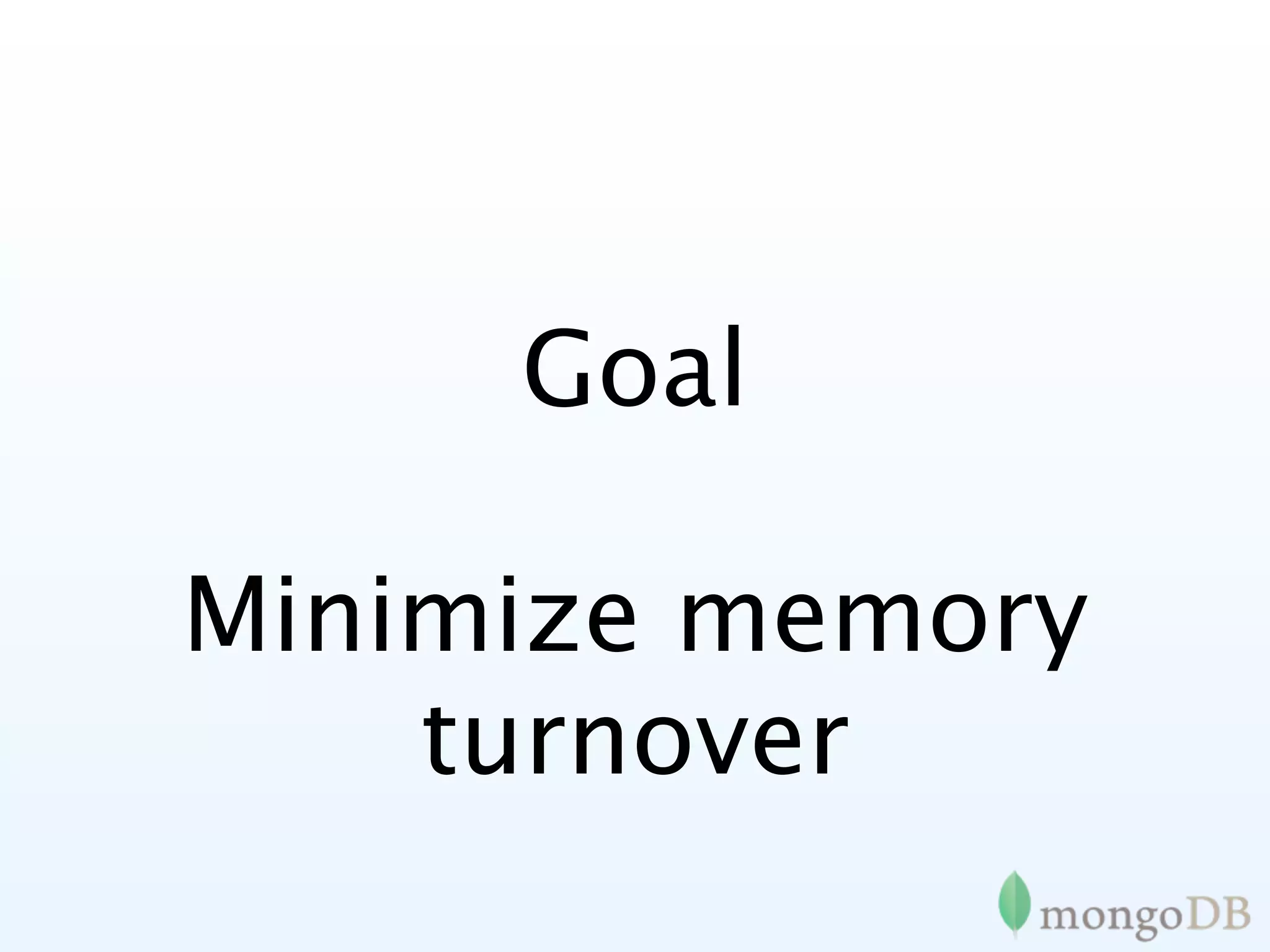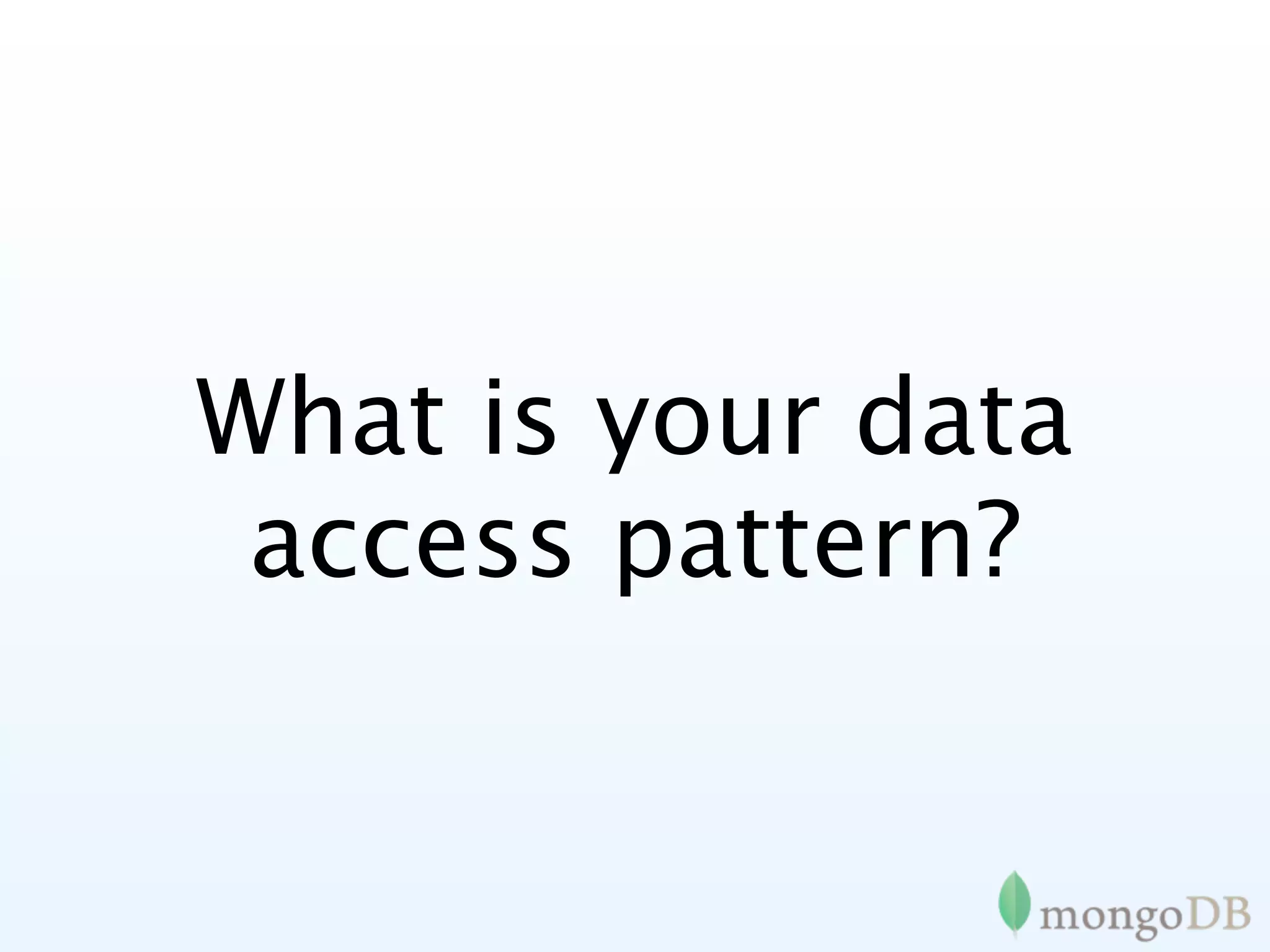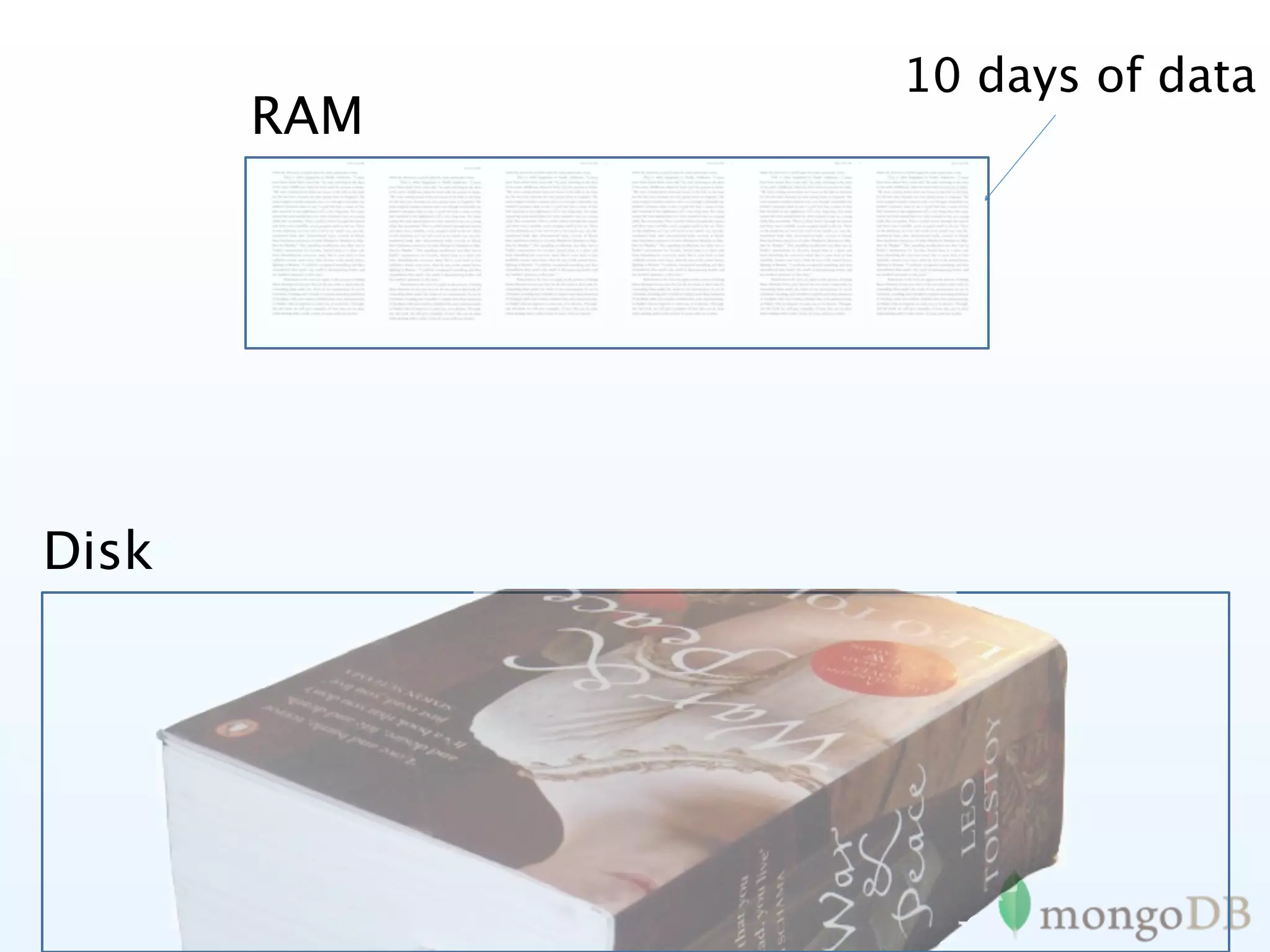The document provides an overview of MongoDB, detailing its advantages such as agility from a schemaless data model, scalability for handling large datasets, and cost-effectiveness. It discusses MongoDB's architecture, including features like replication, sharding, and its compatibility with various programming languages. Additionally, it highlights use cases demonstrating significant performance and cost improvements over traditional relational databases.
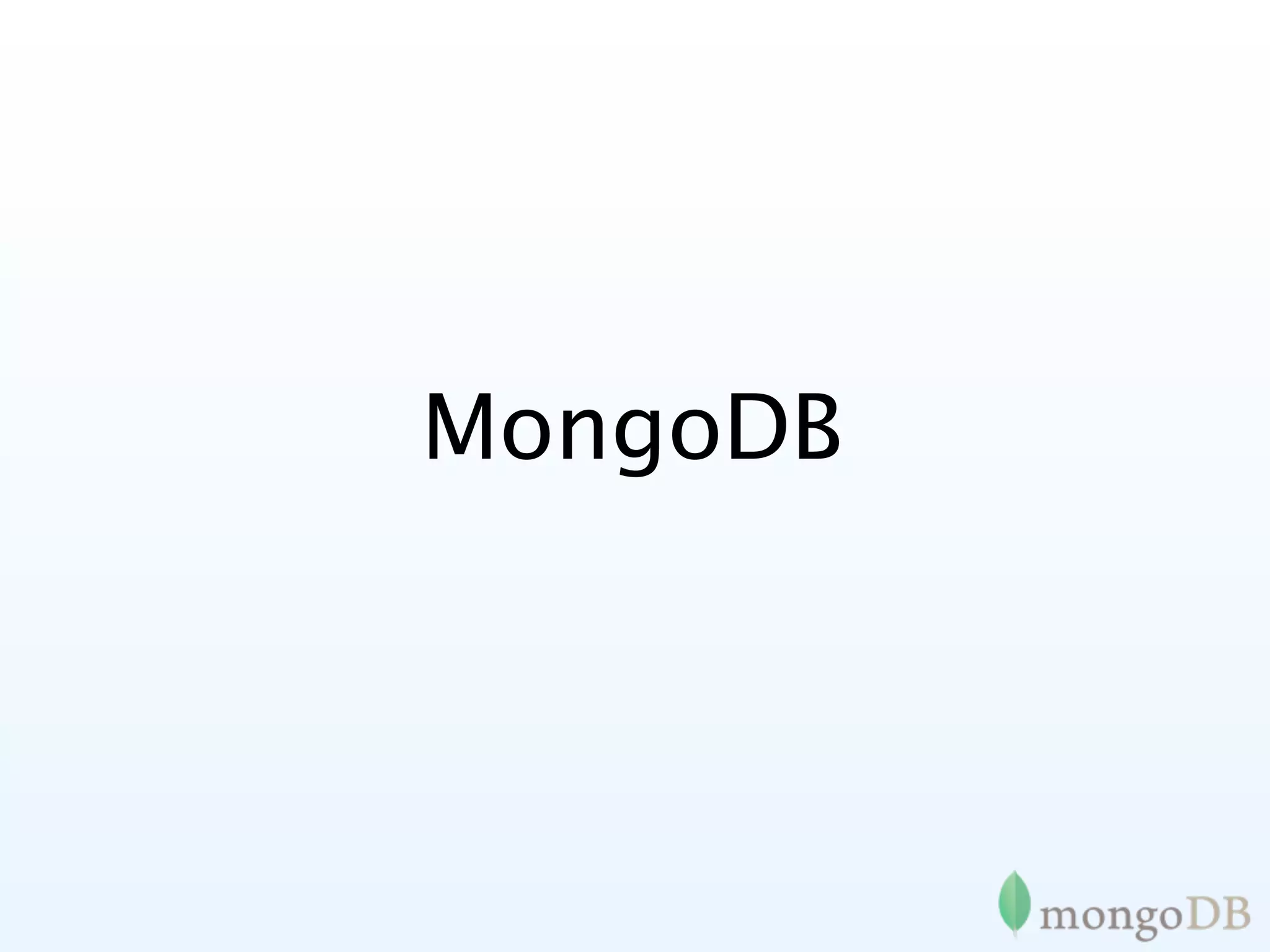
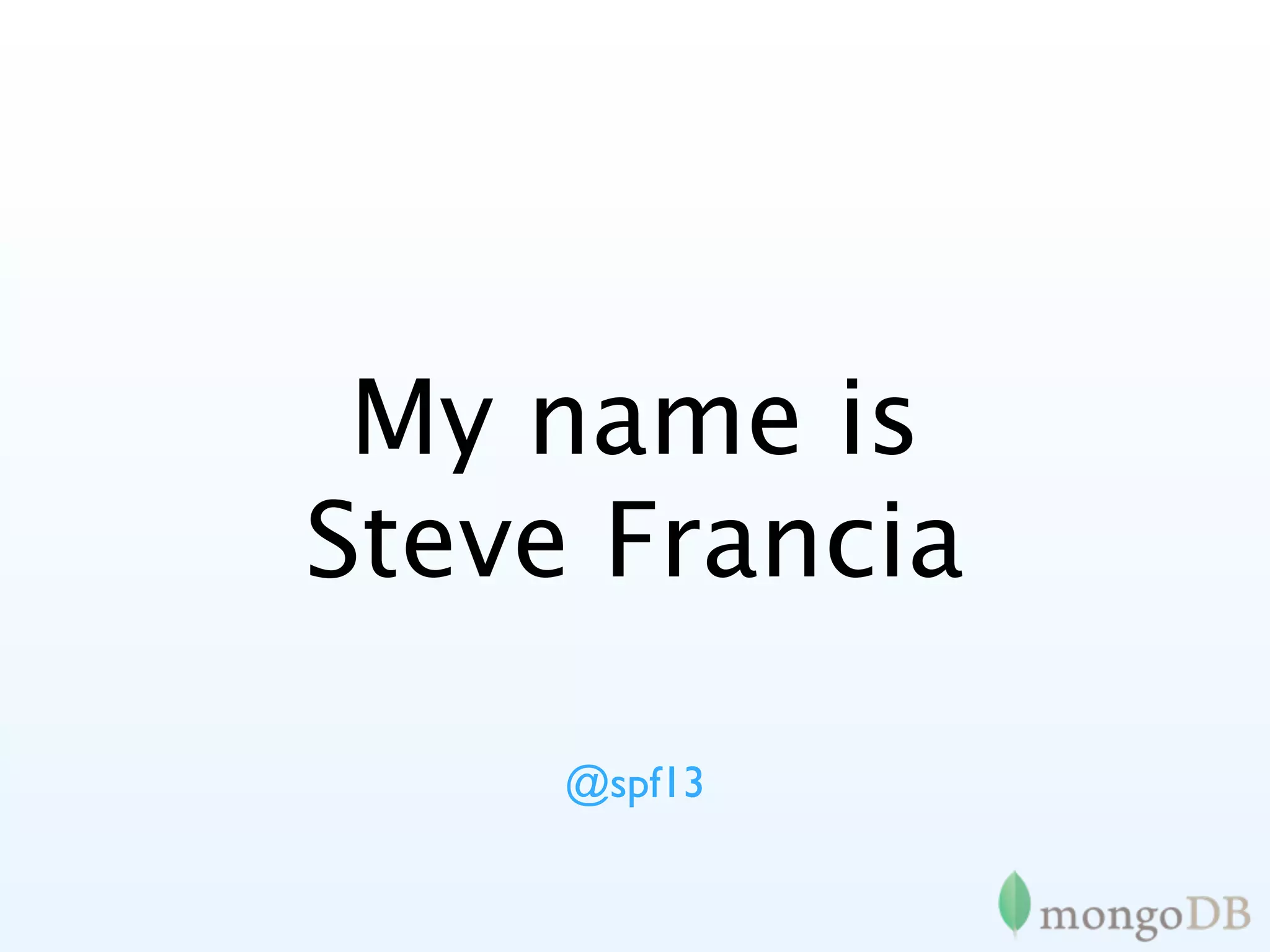

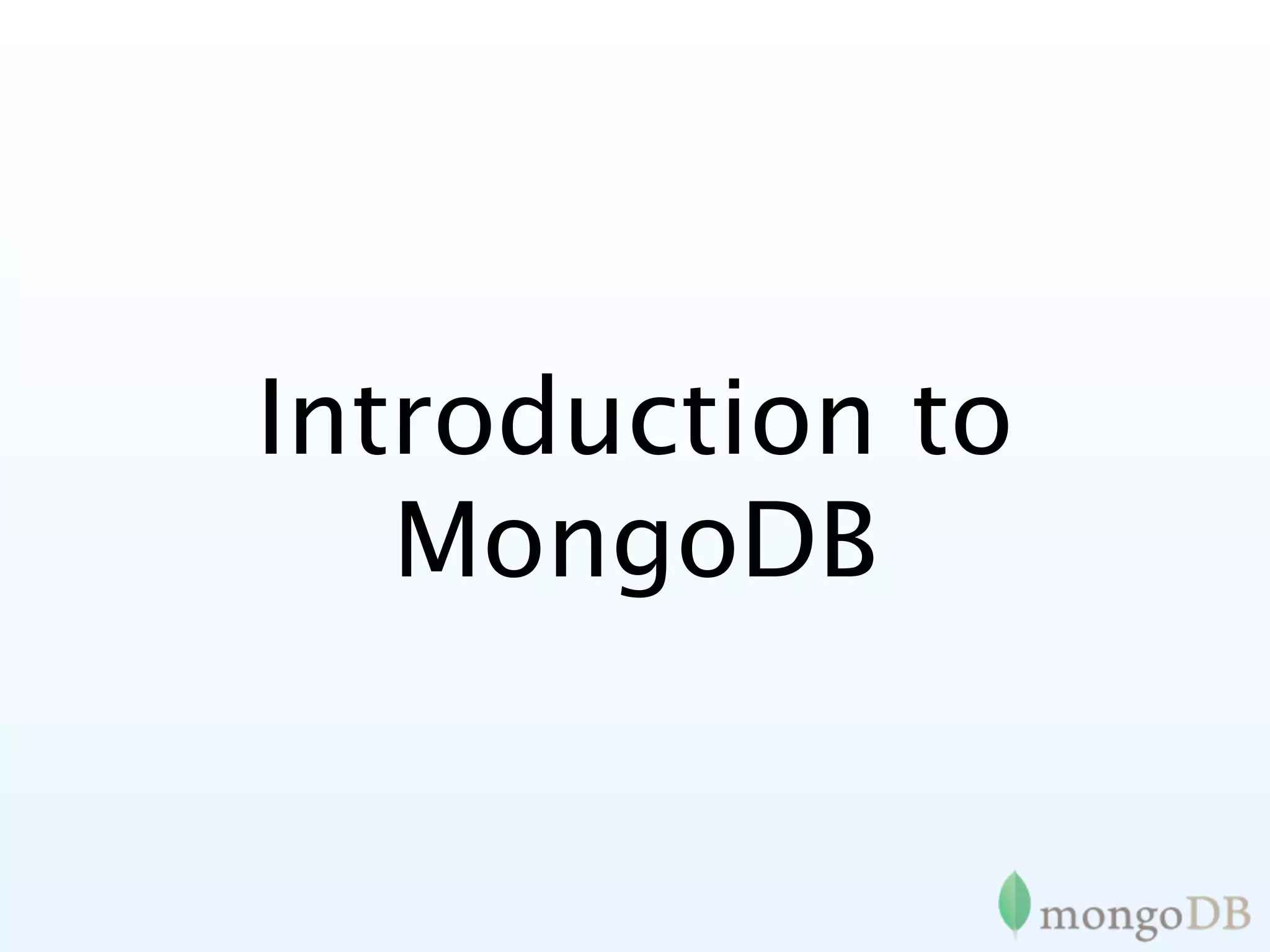
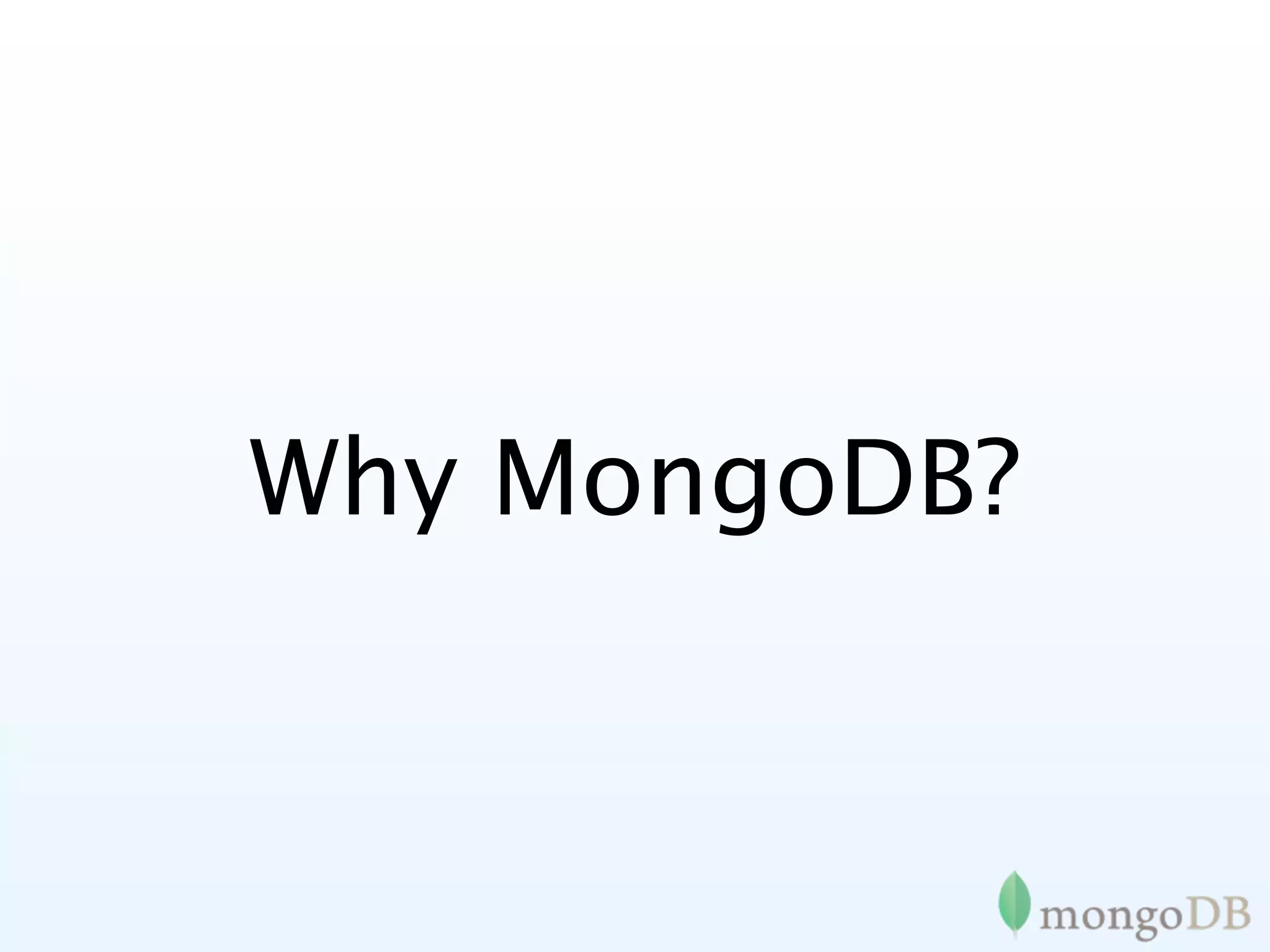
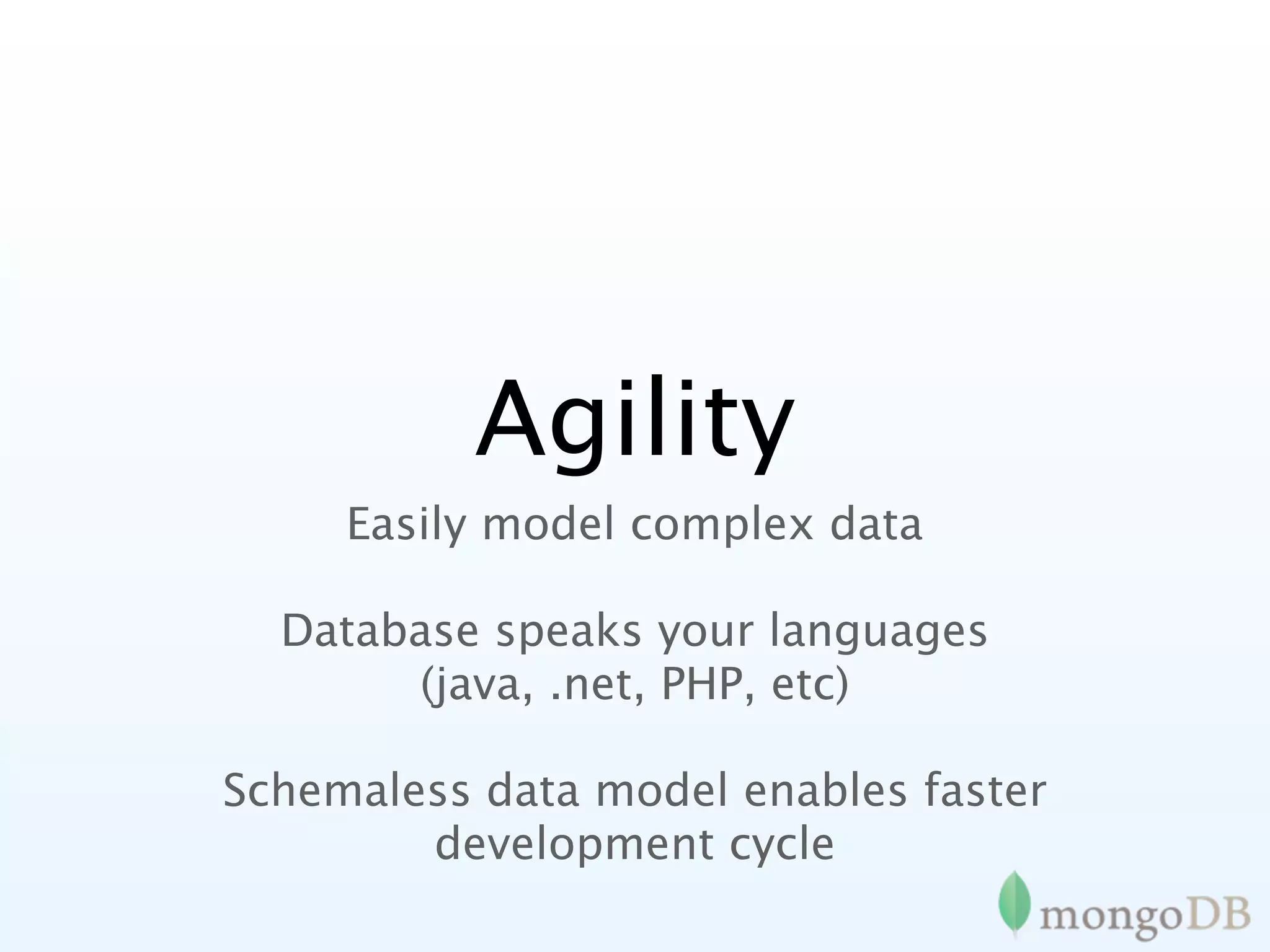
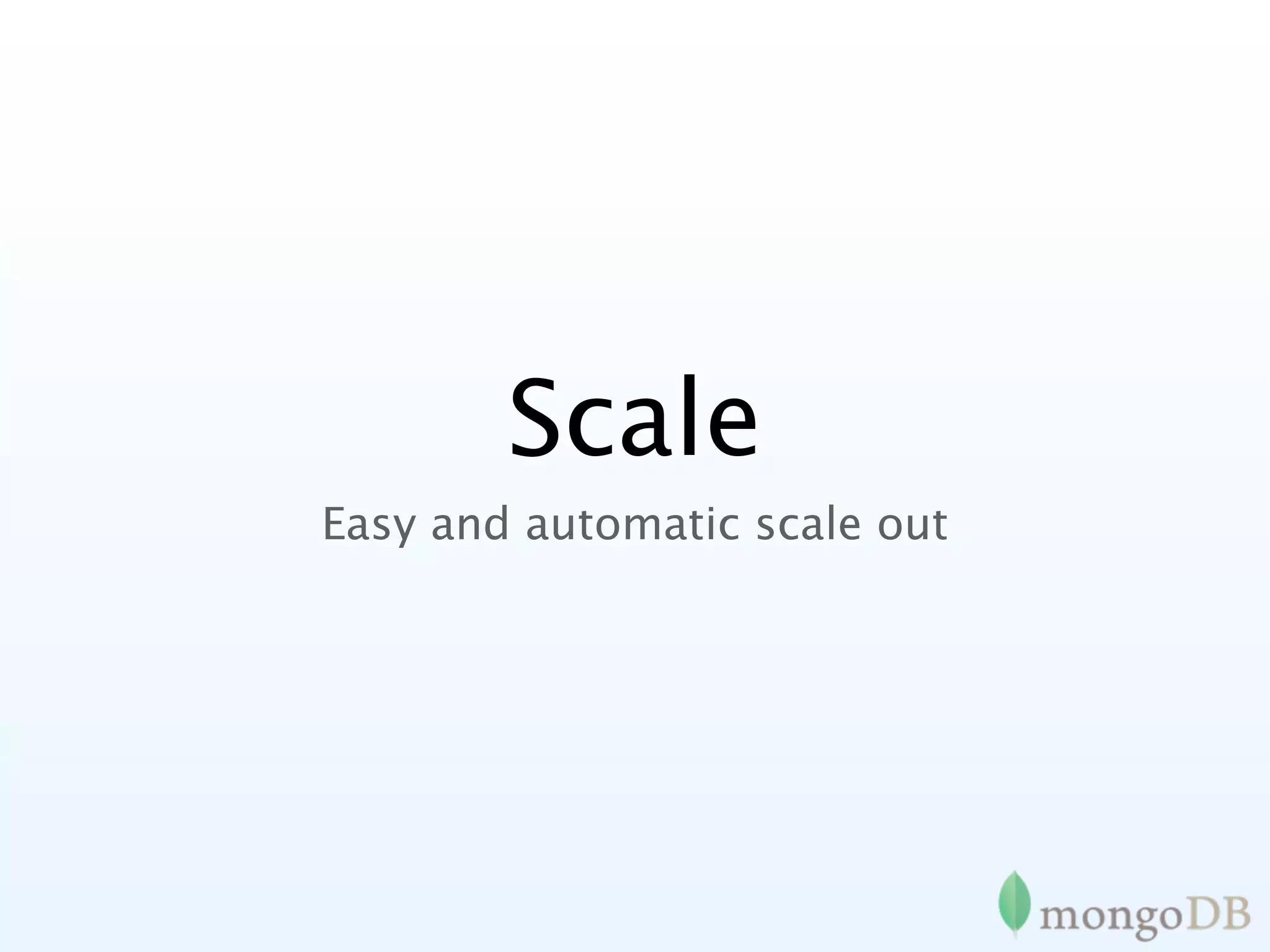
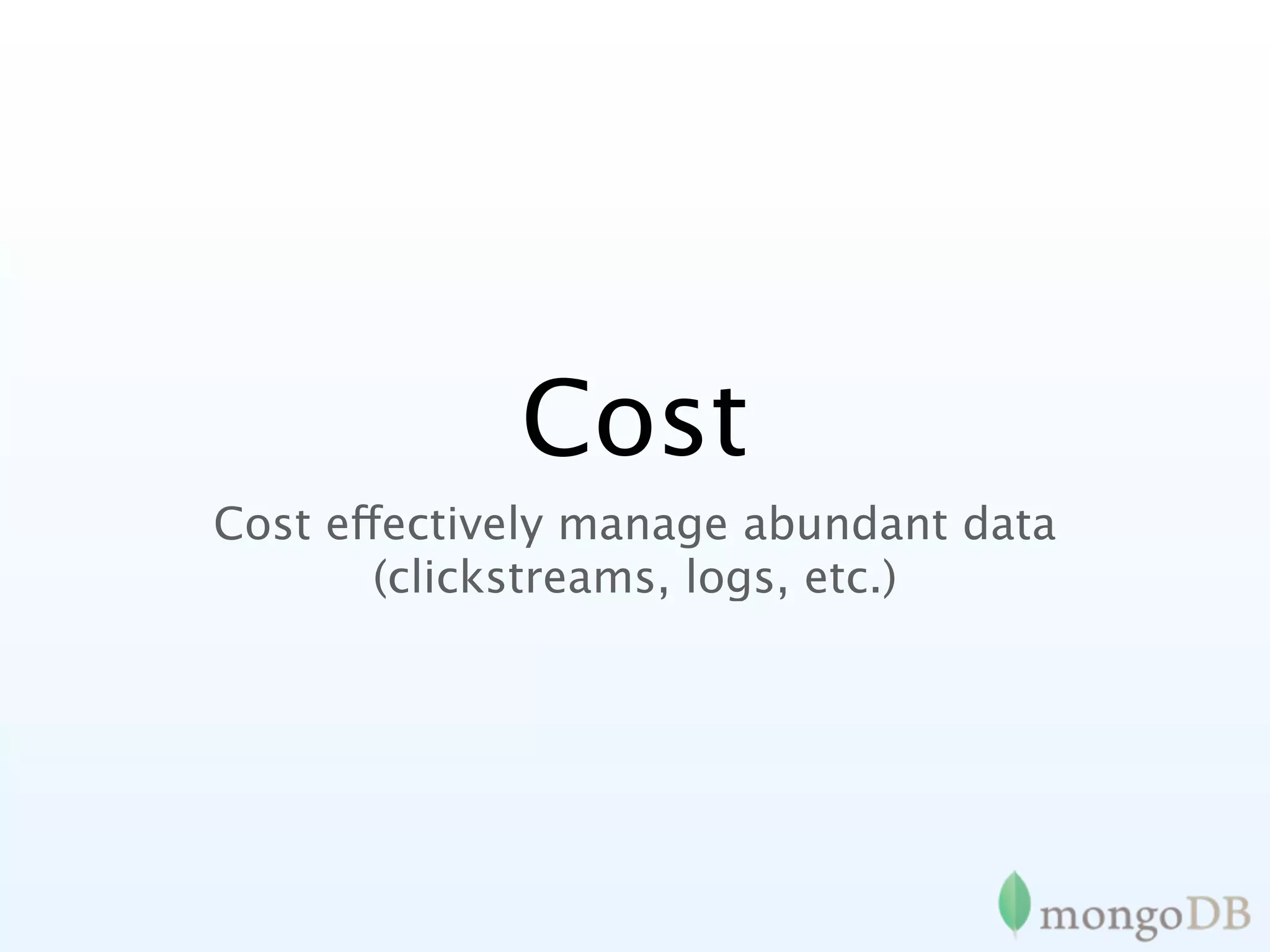
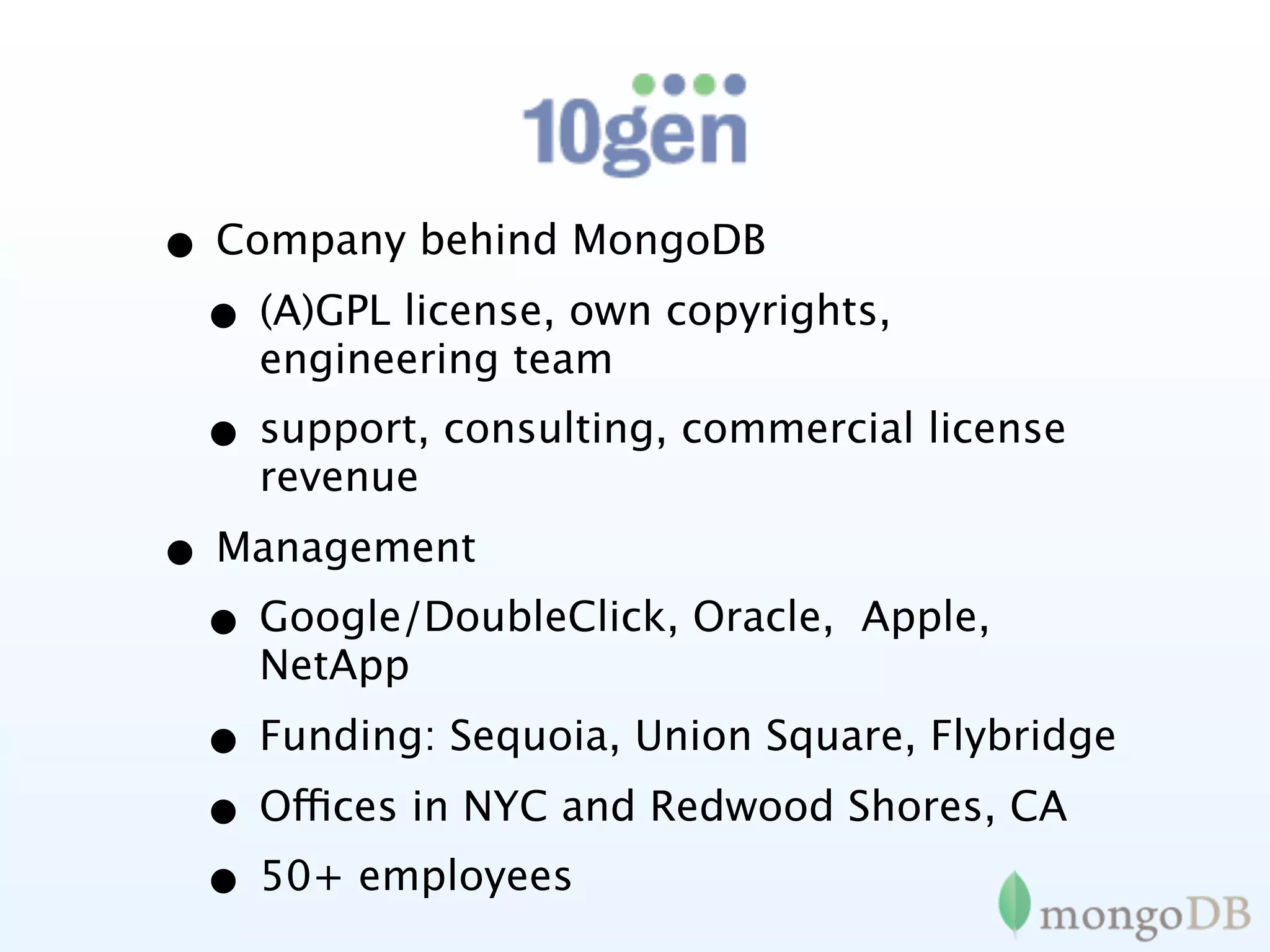
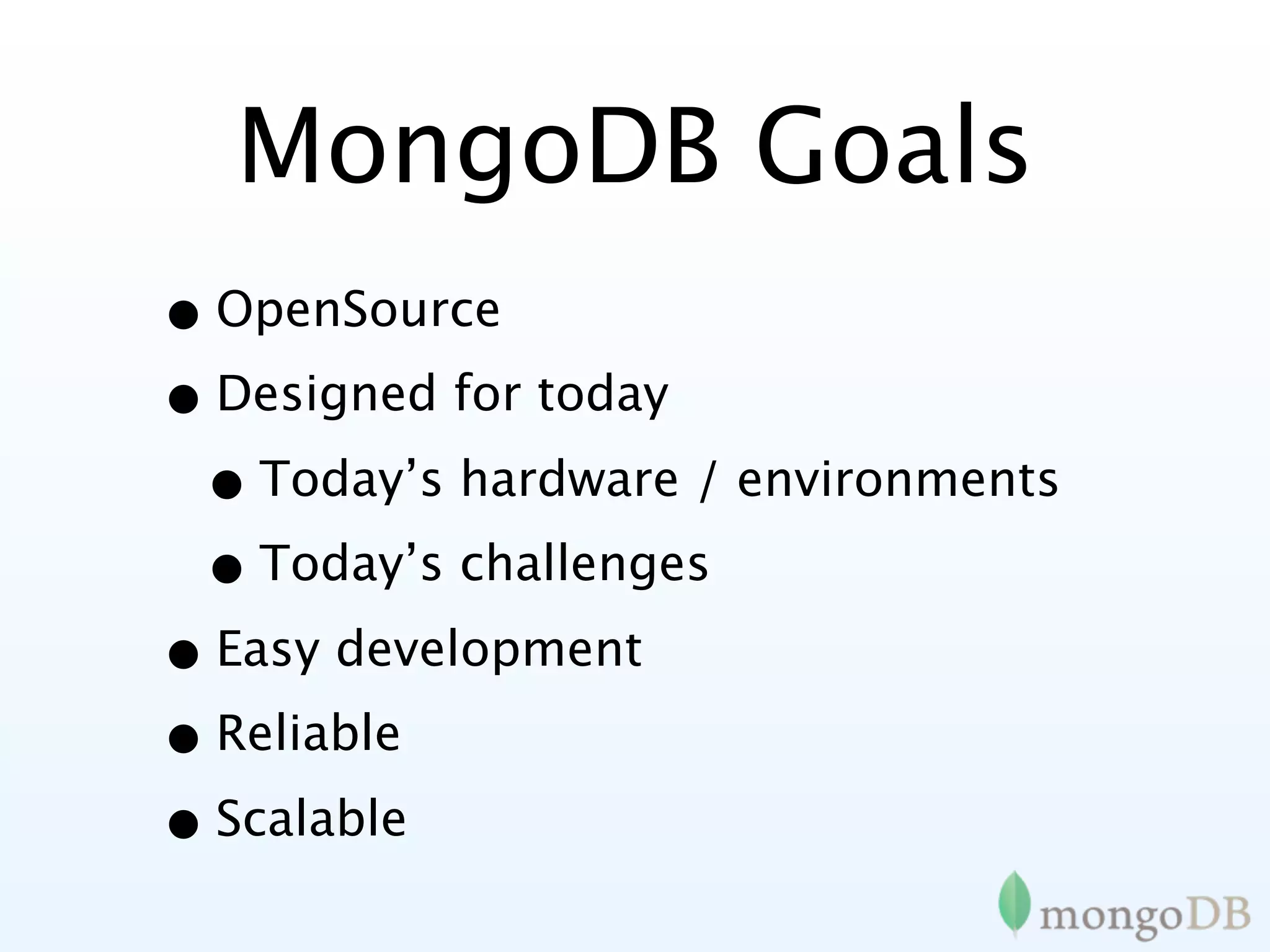
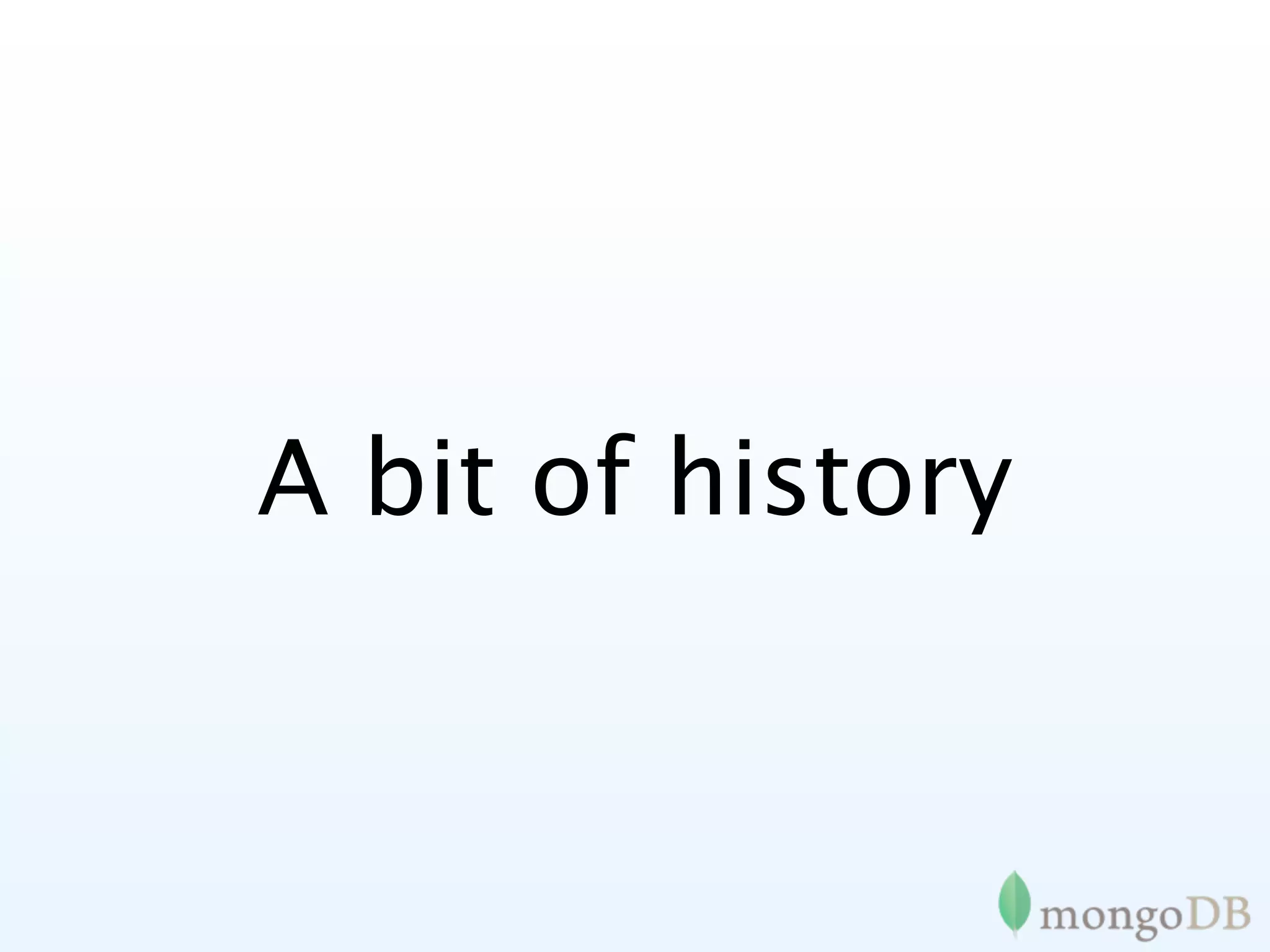





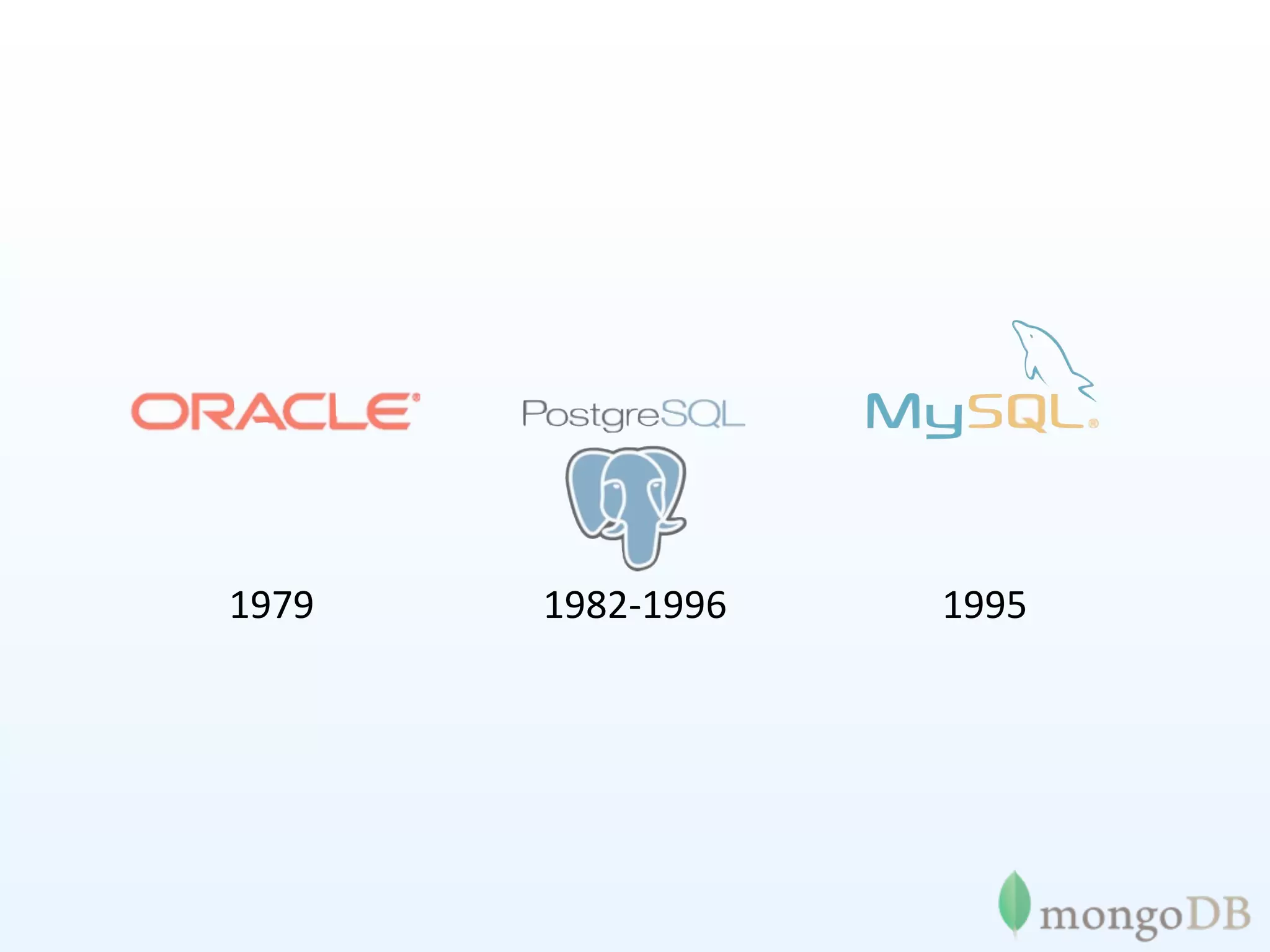
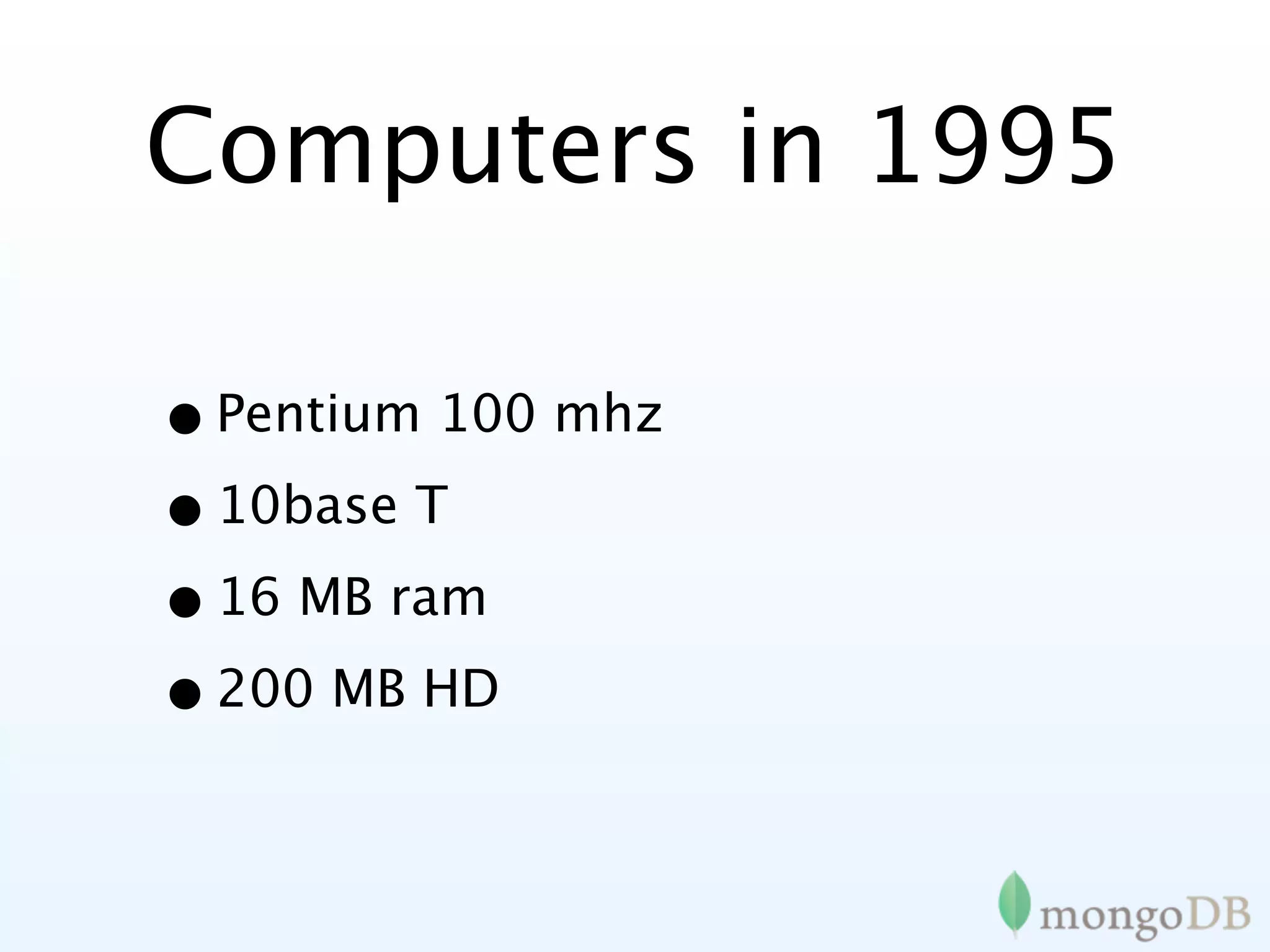
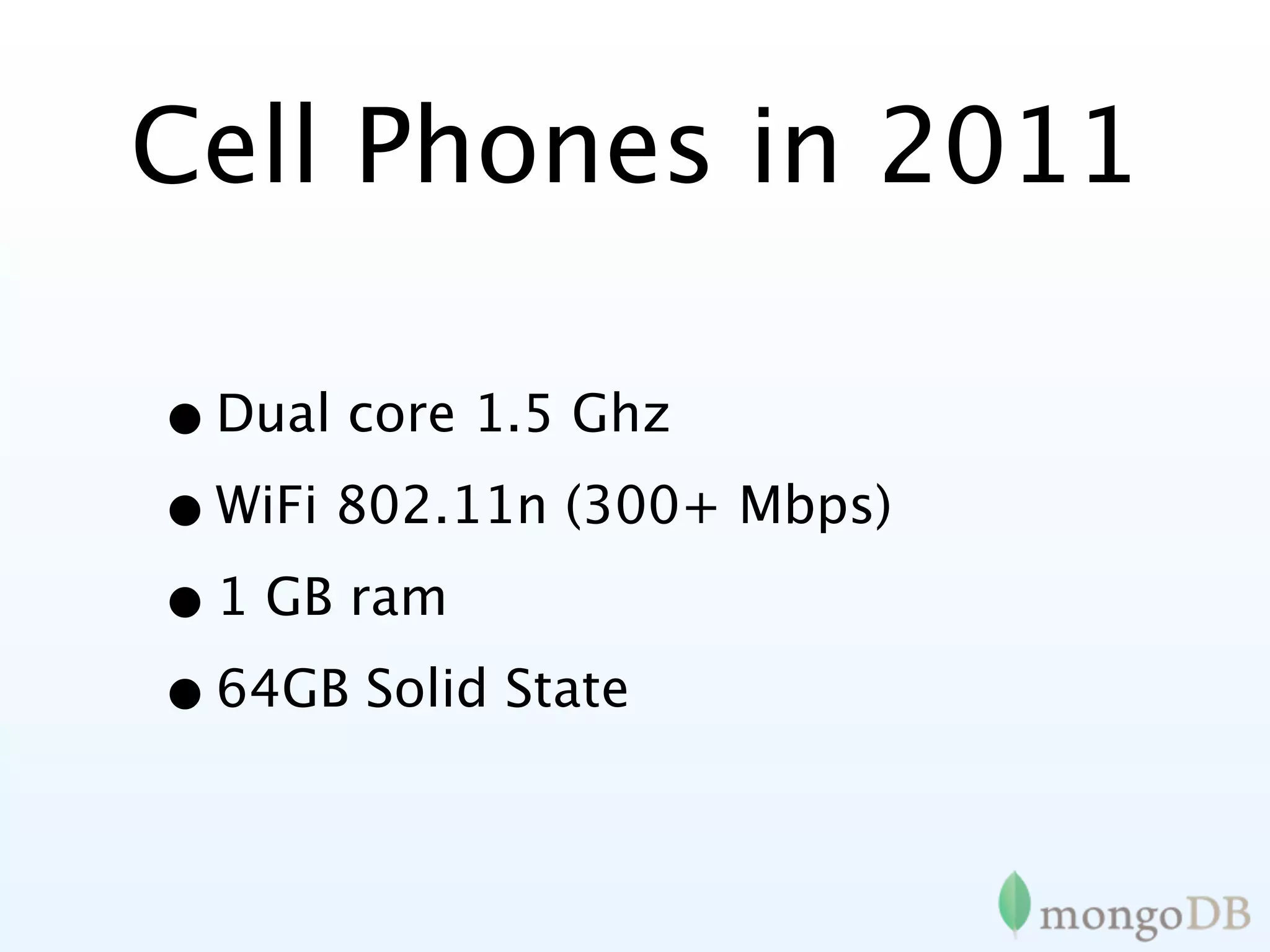

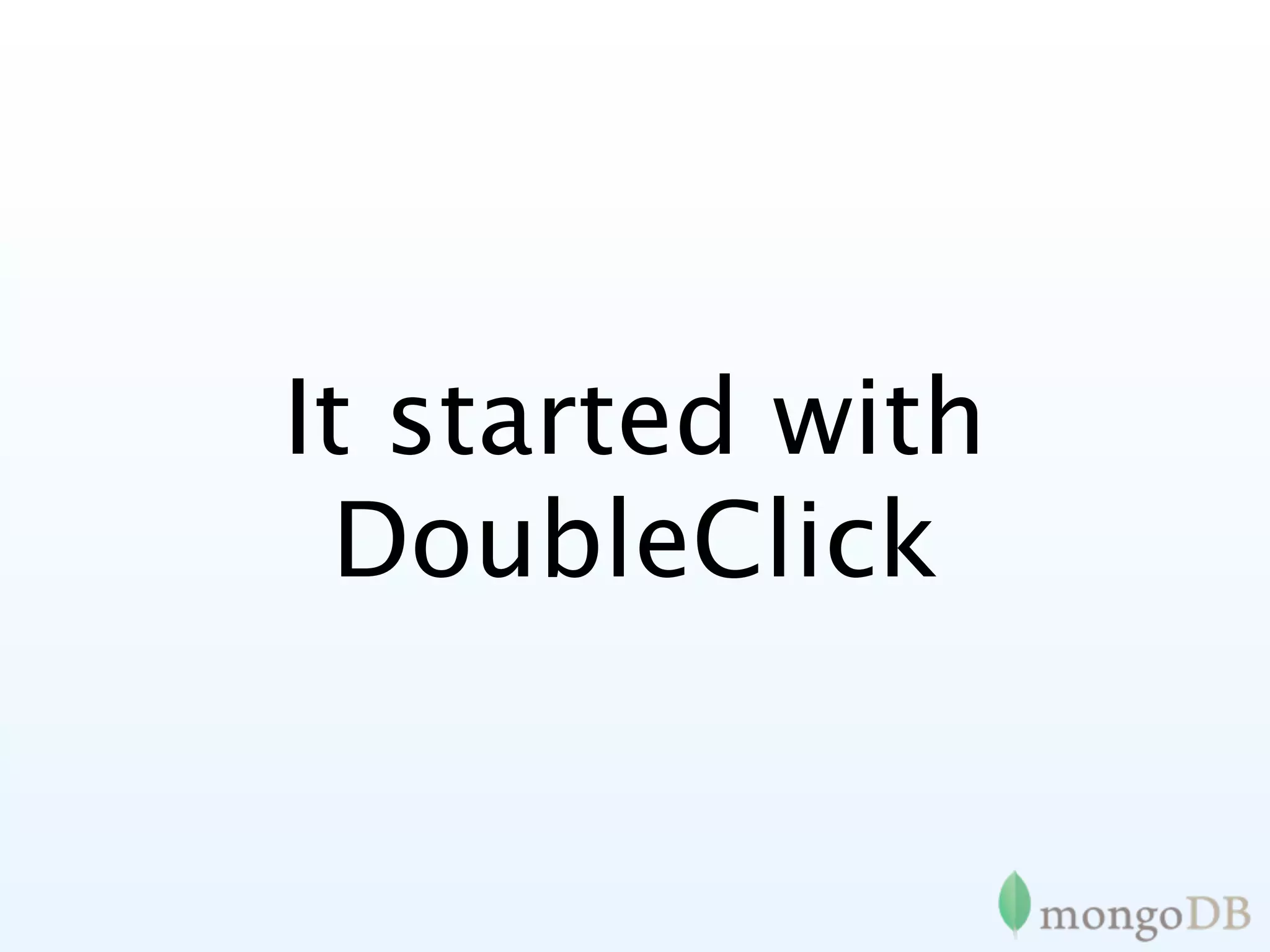

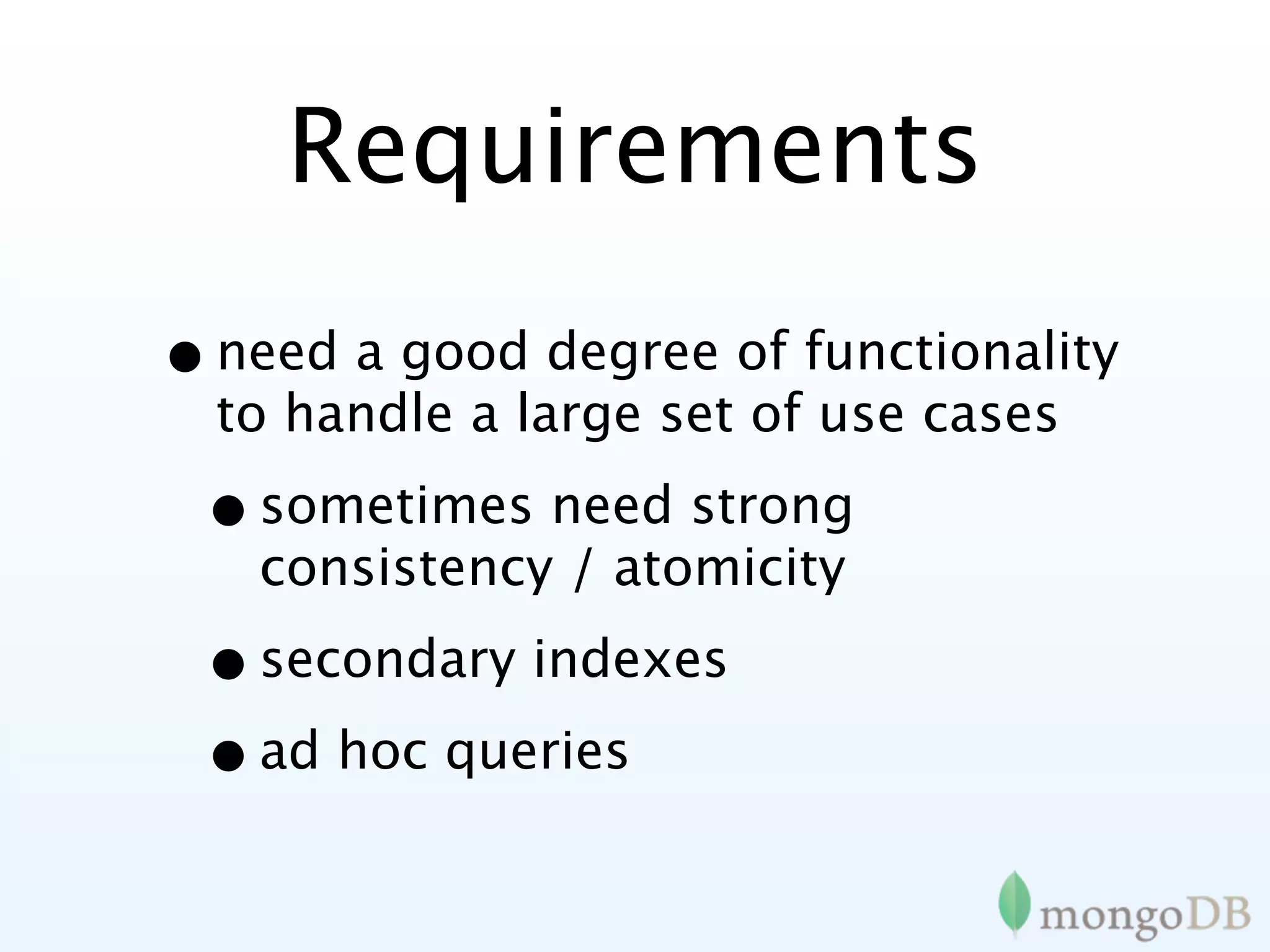
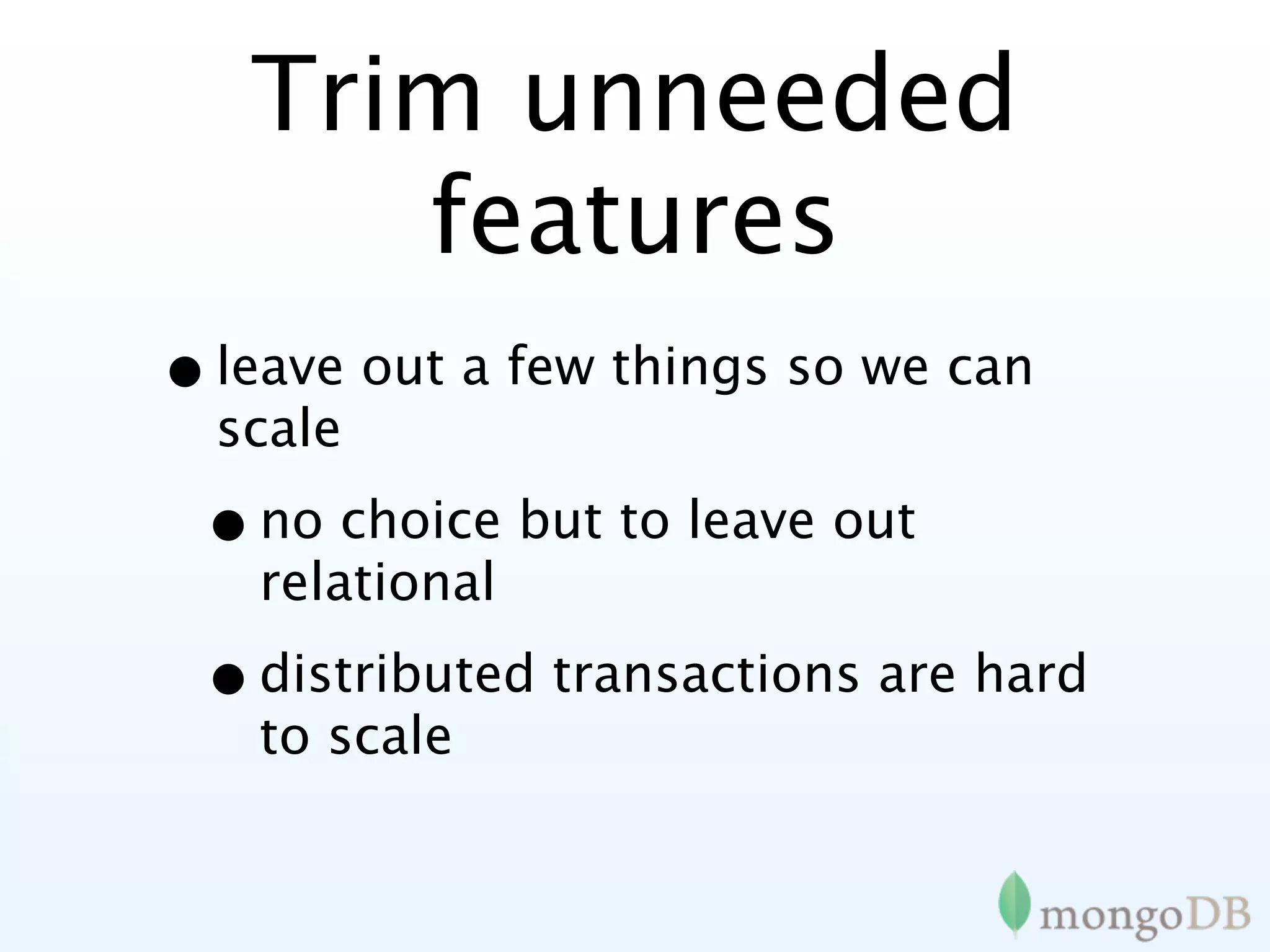

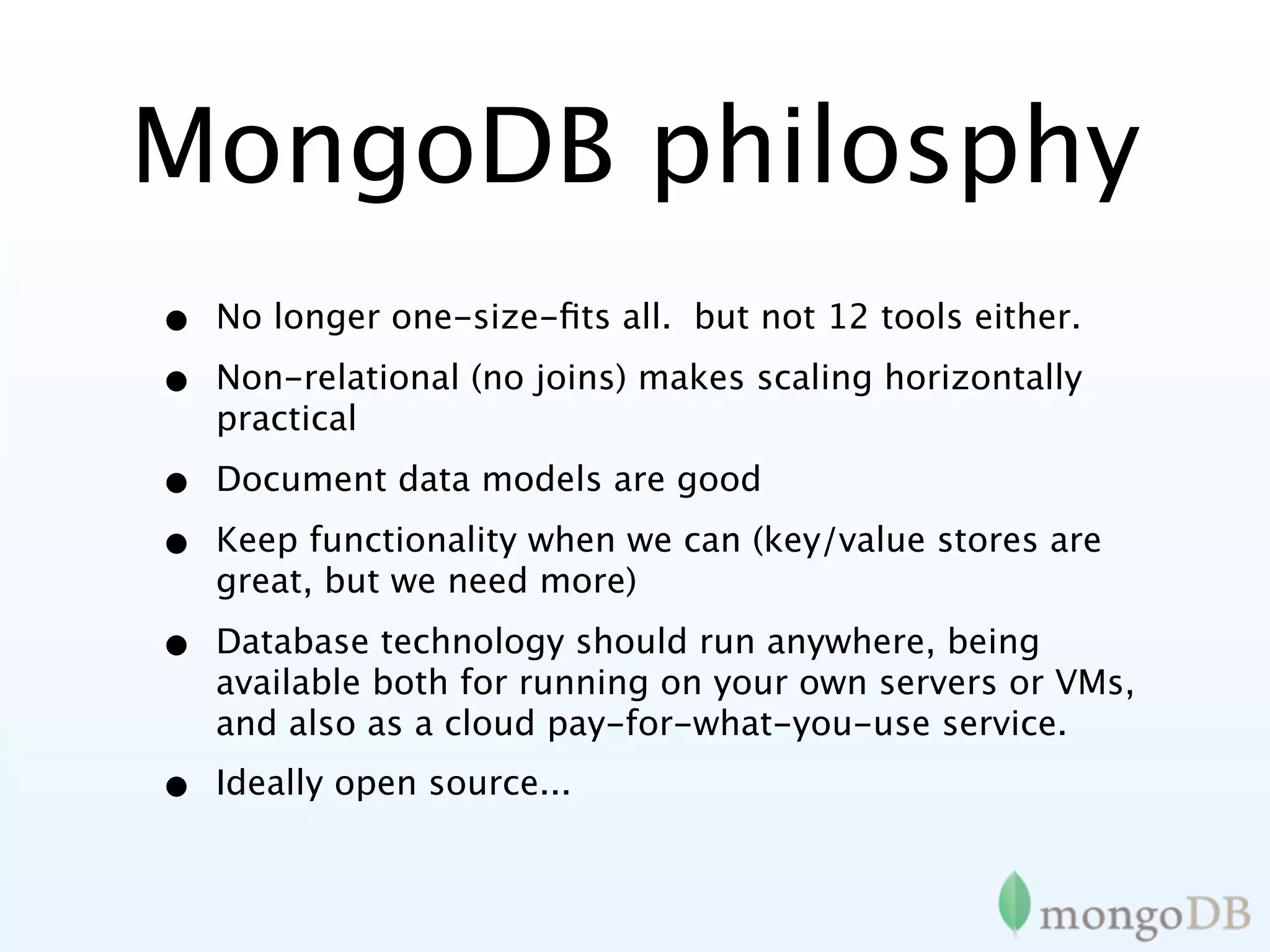
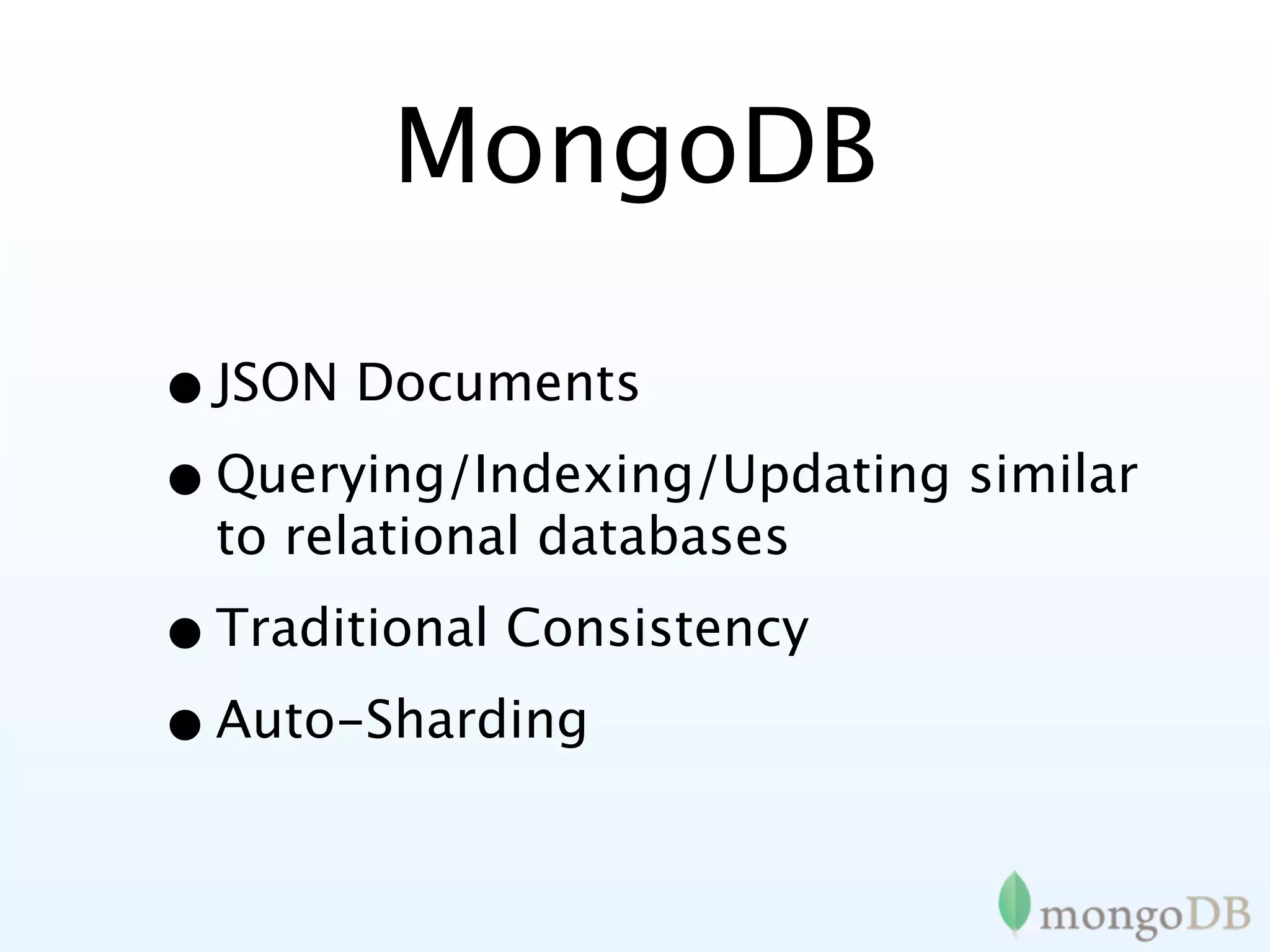
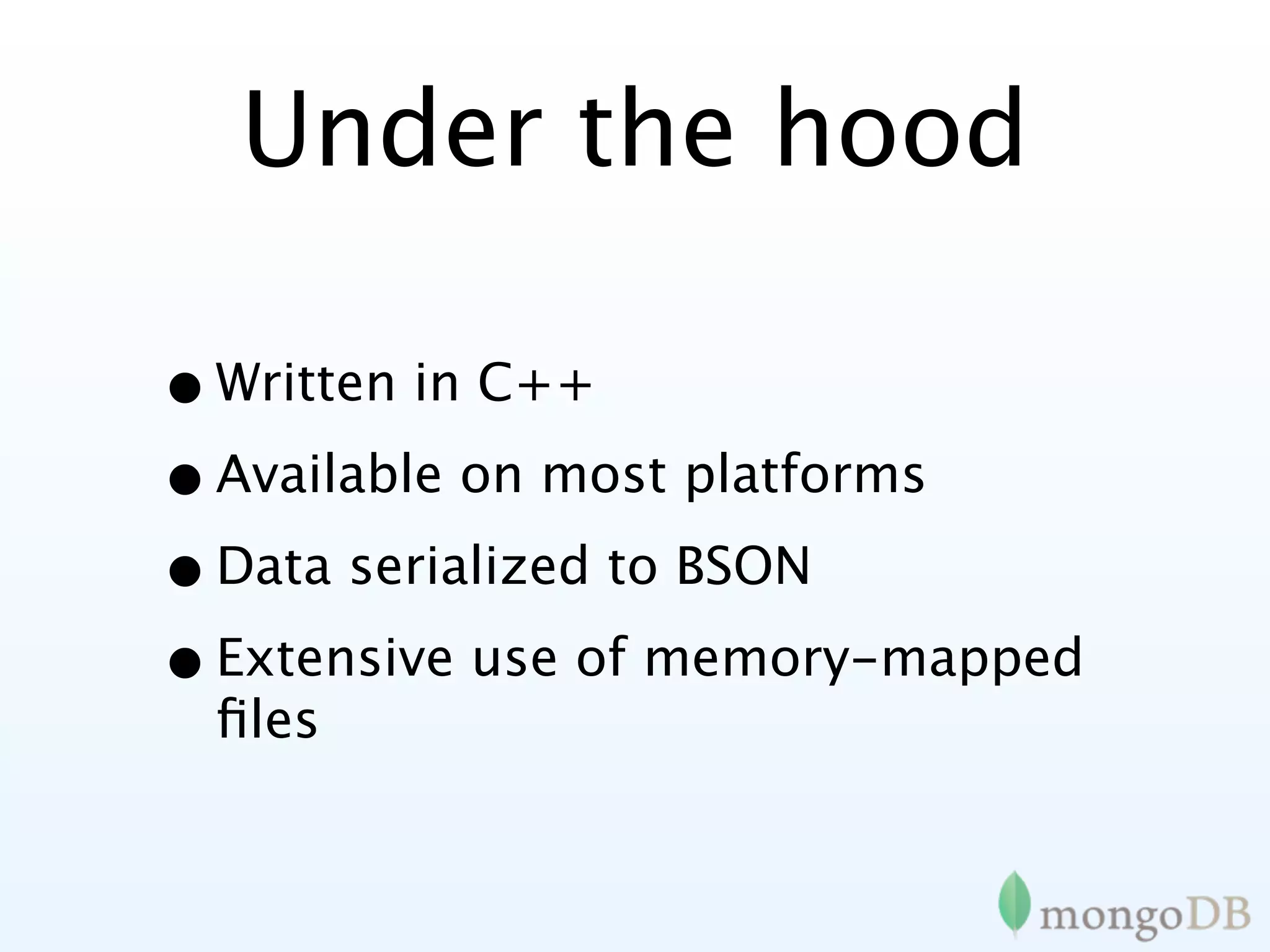
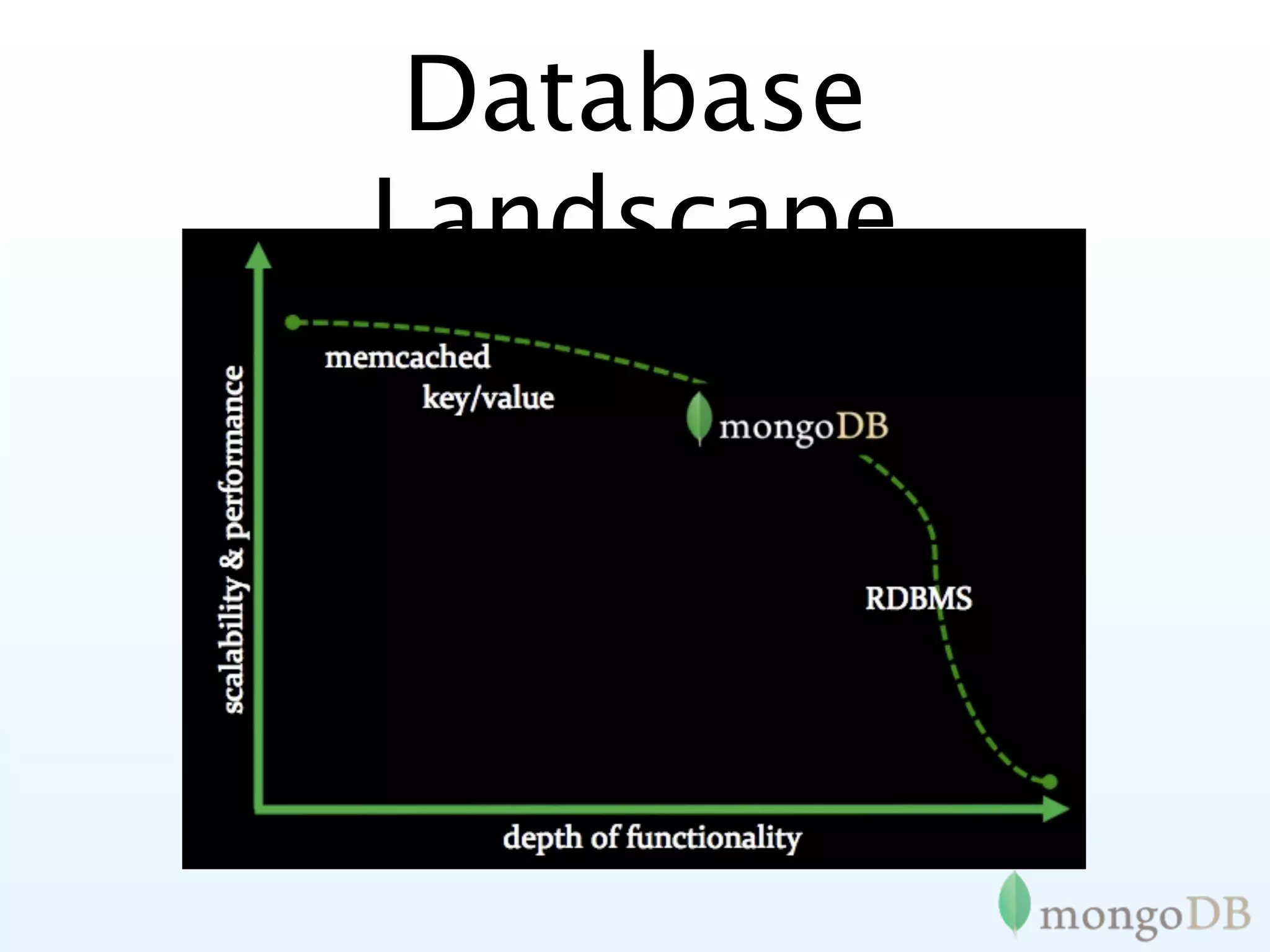
![MongoDB is:
Application Document
Oriented
High { author: “steve”,
date: new Date(),
Performanc
text: “About MongoDB...”,
tags: [“tech”, “database”]}
e
Horizontally Scalable](https://image.slidesharecdn.com/mongodb-slc2011-111020102909-phpapp01/75/MongoDB-30-2048.jpg)
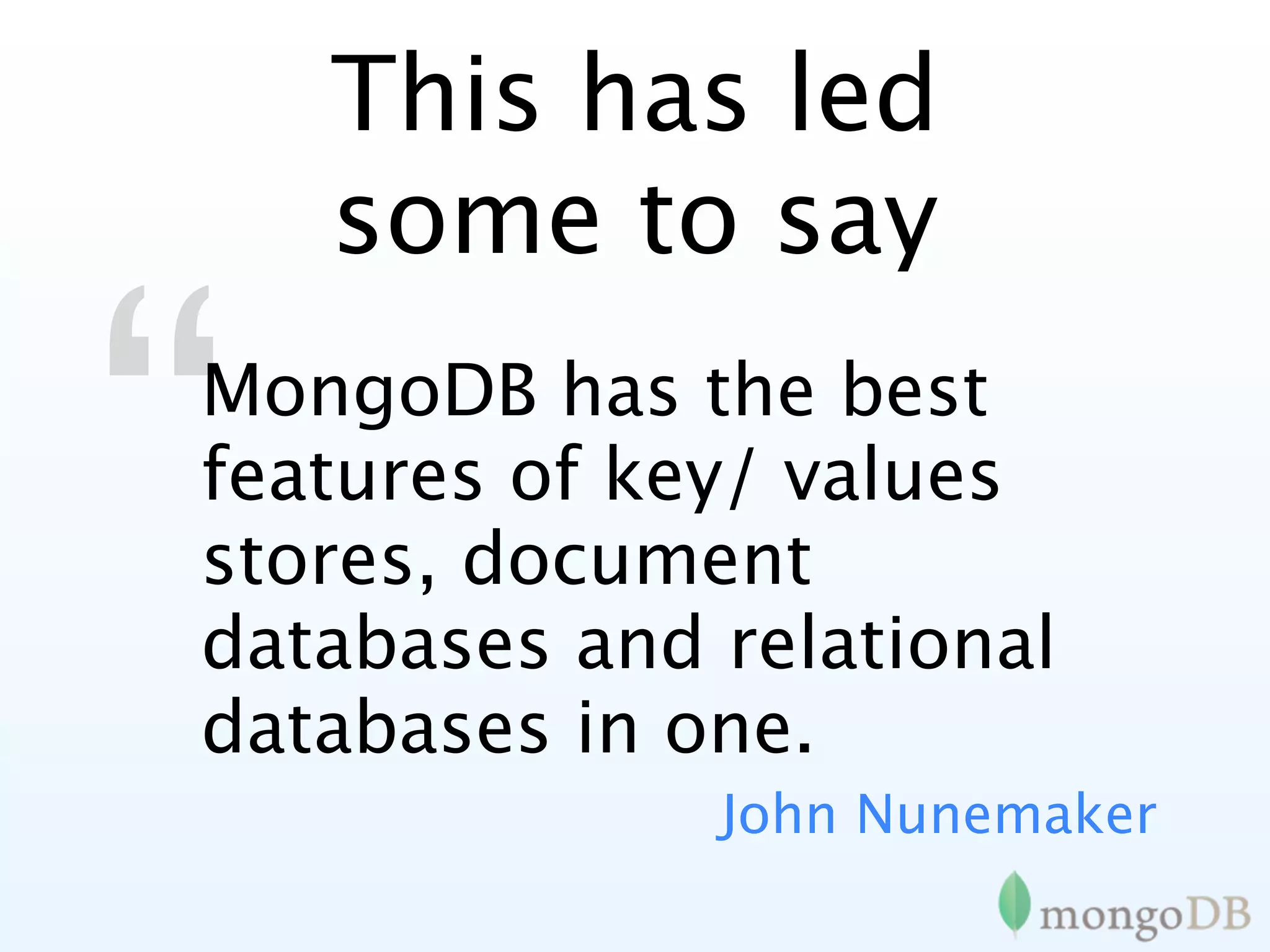

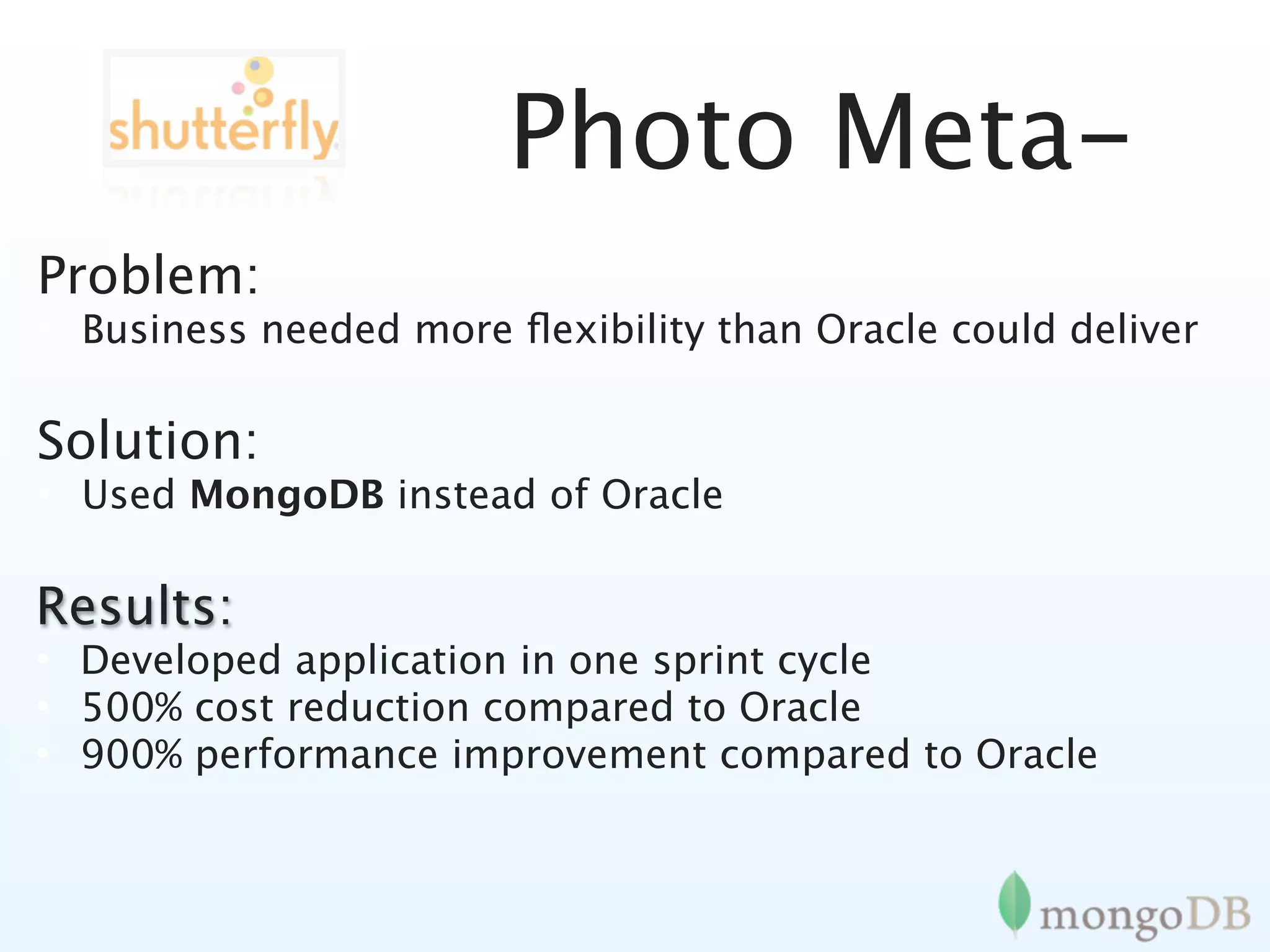
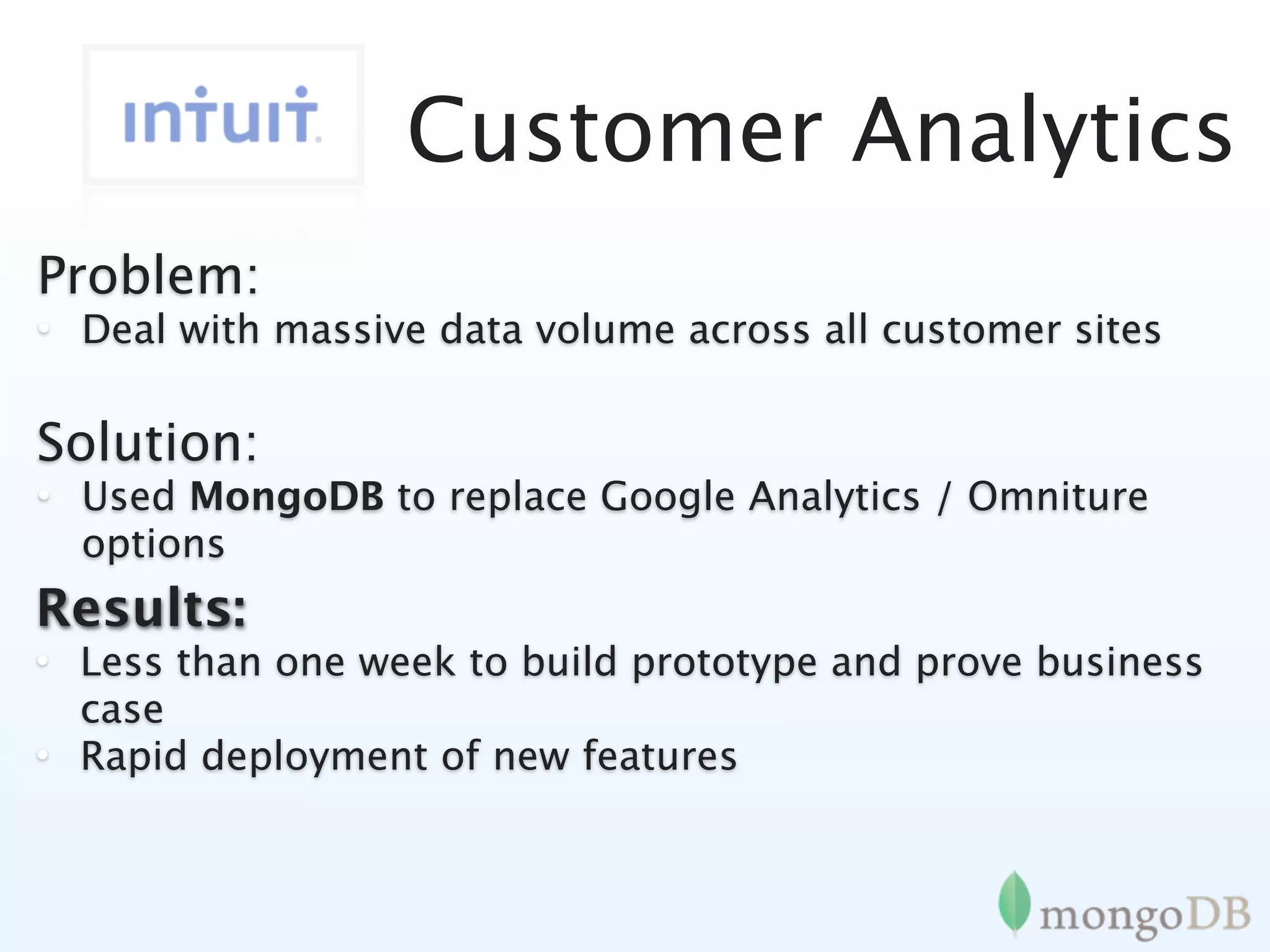
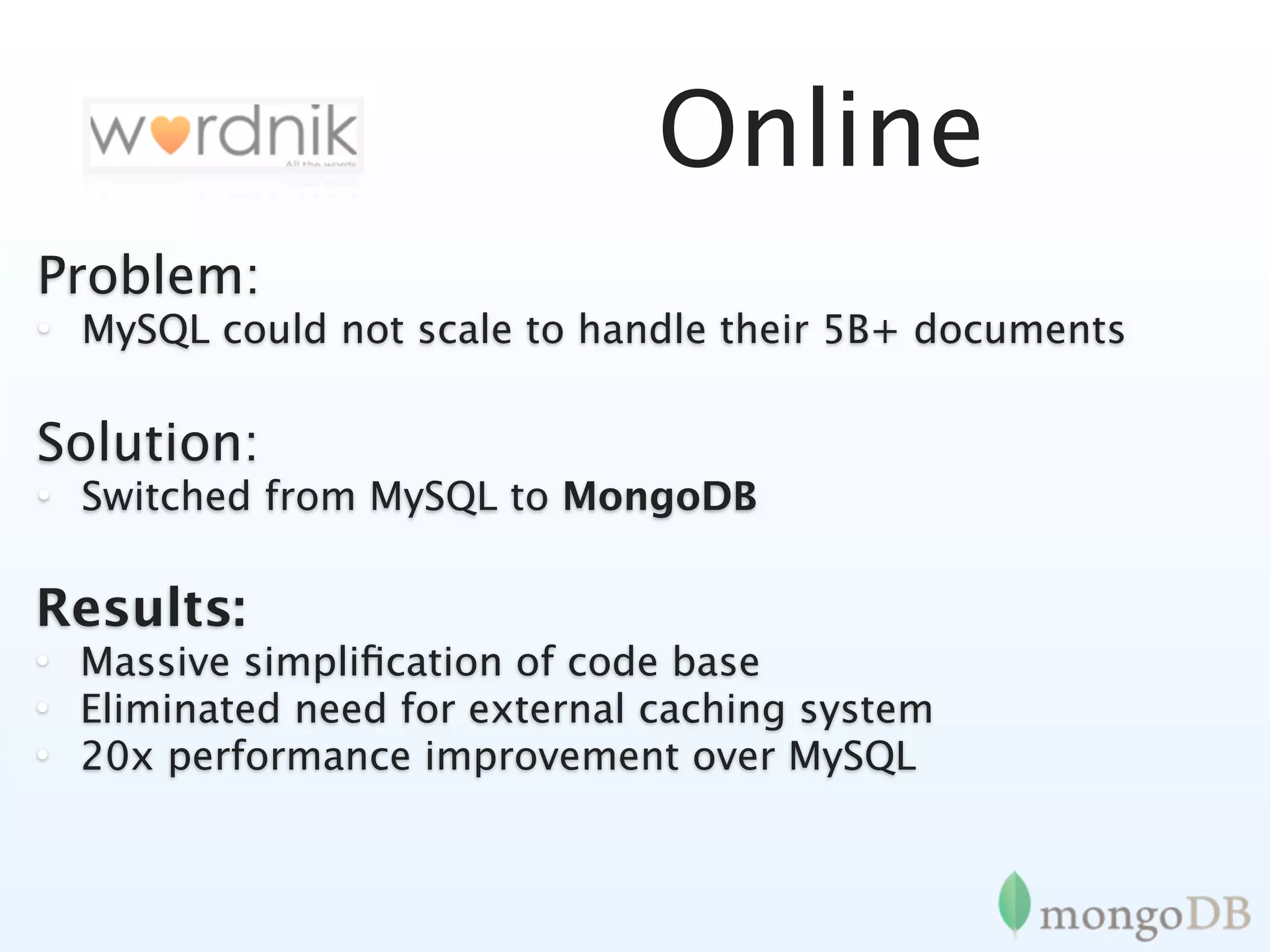
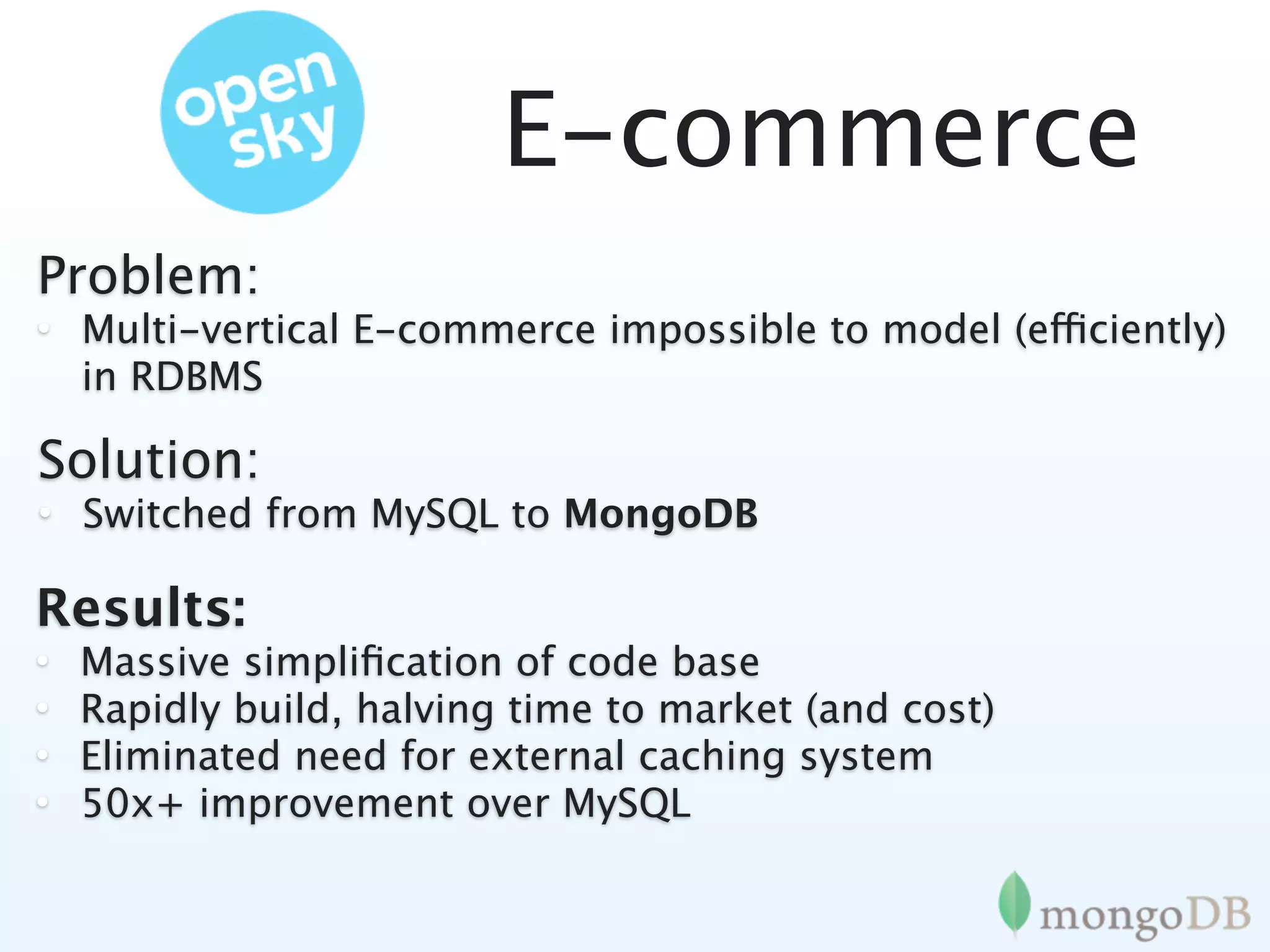
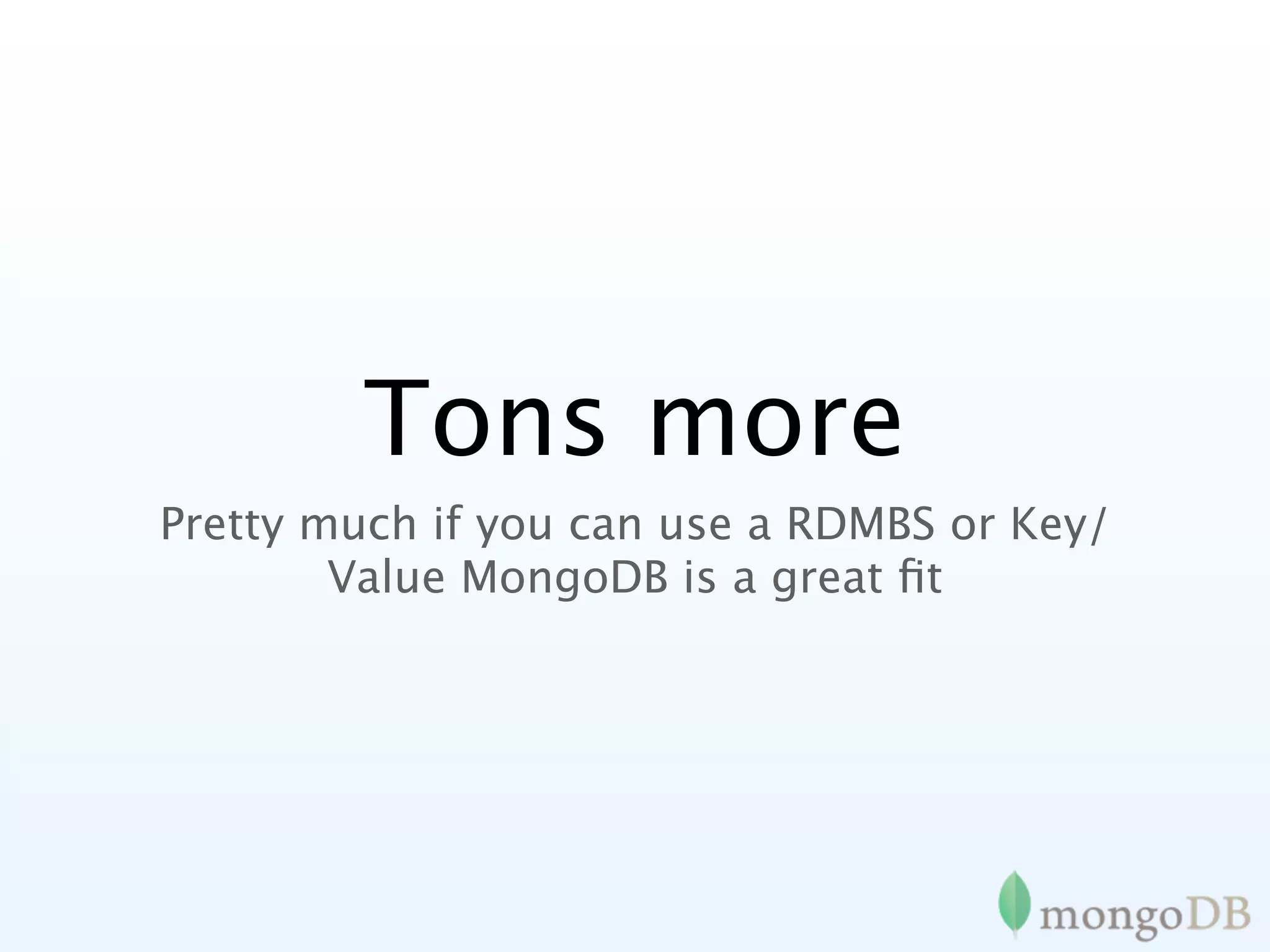
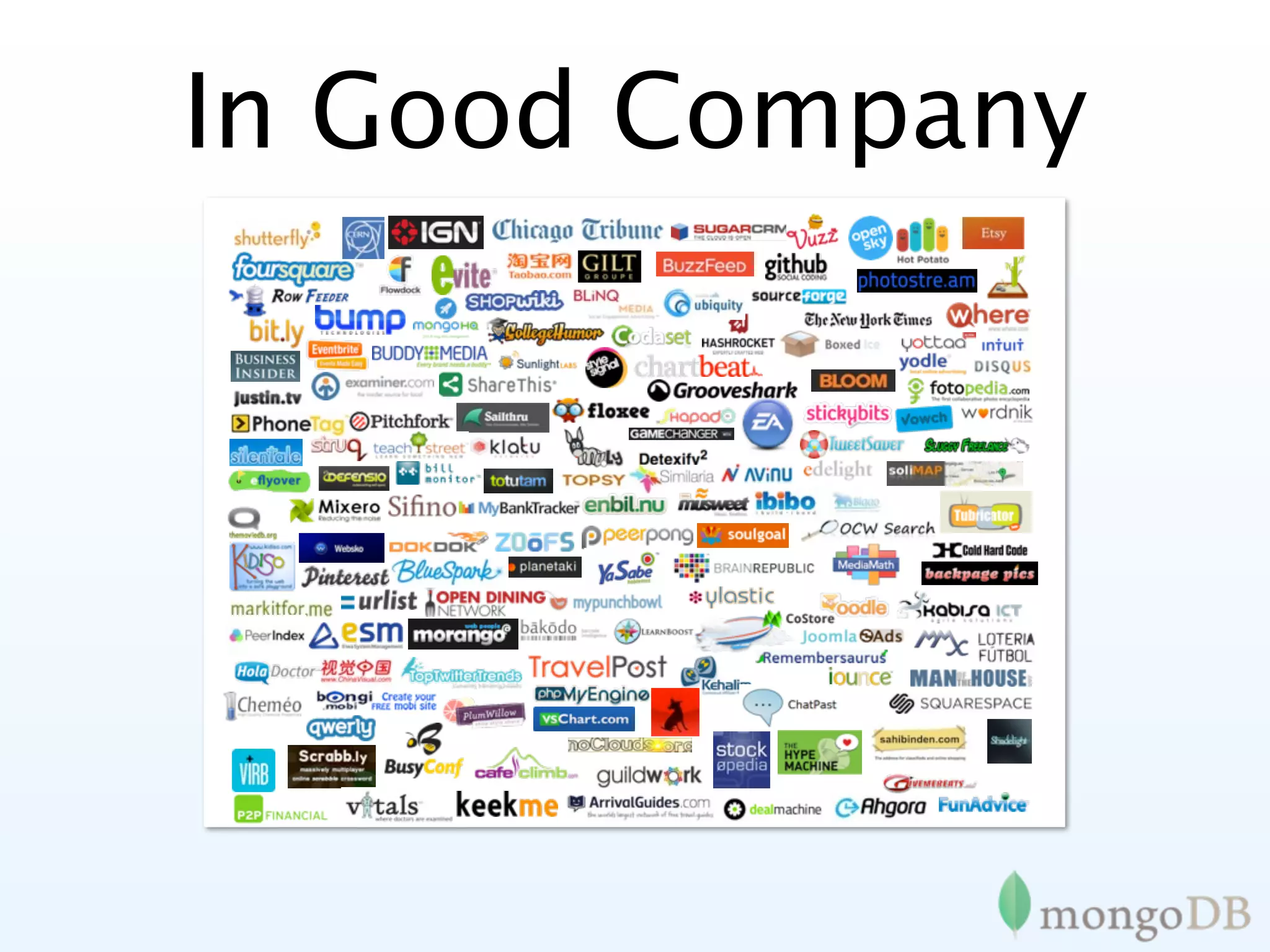

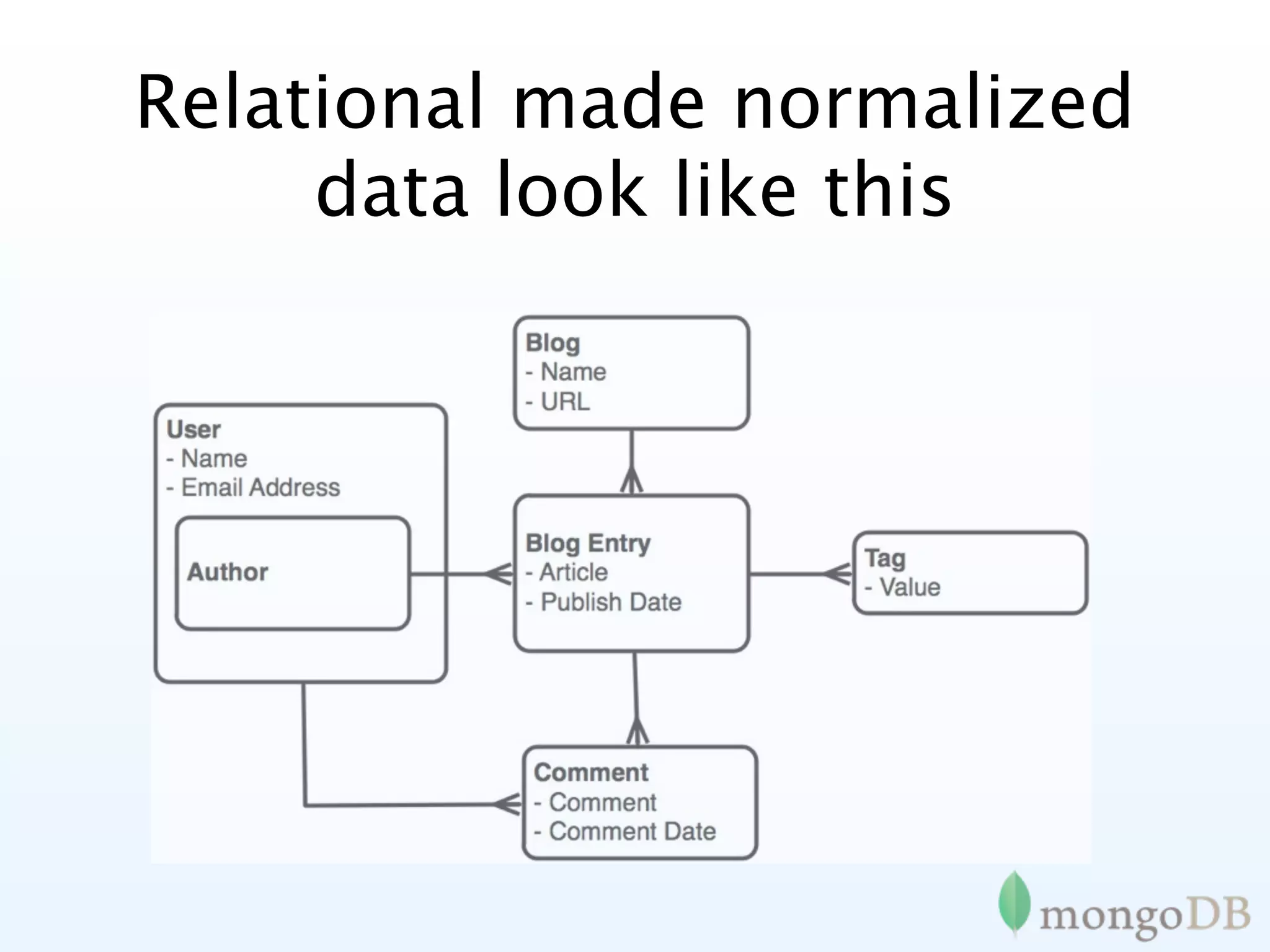

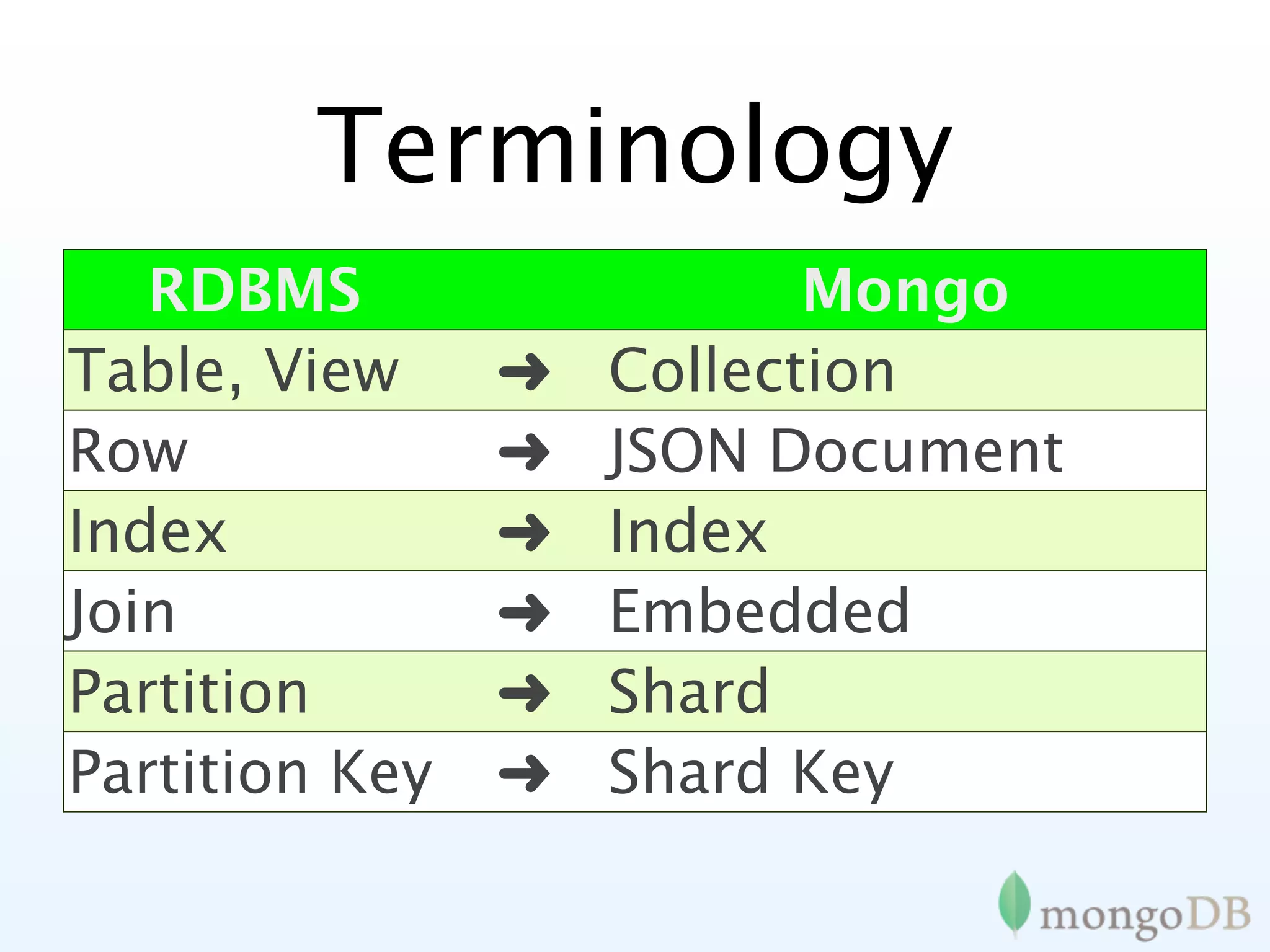
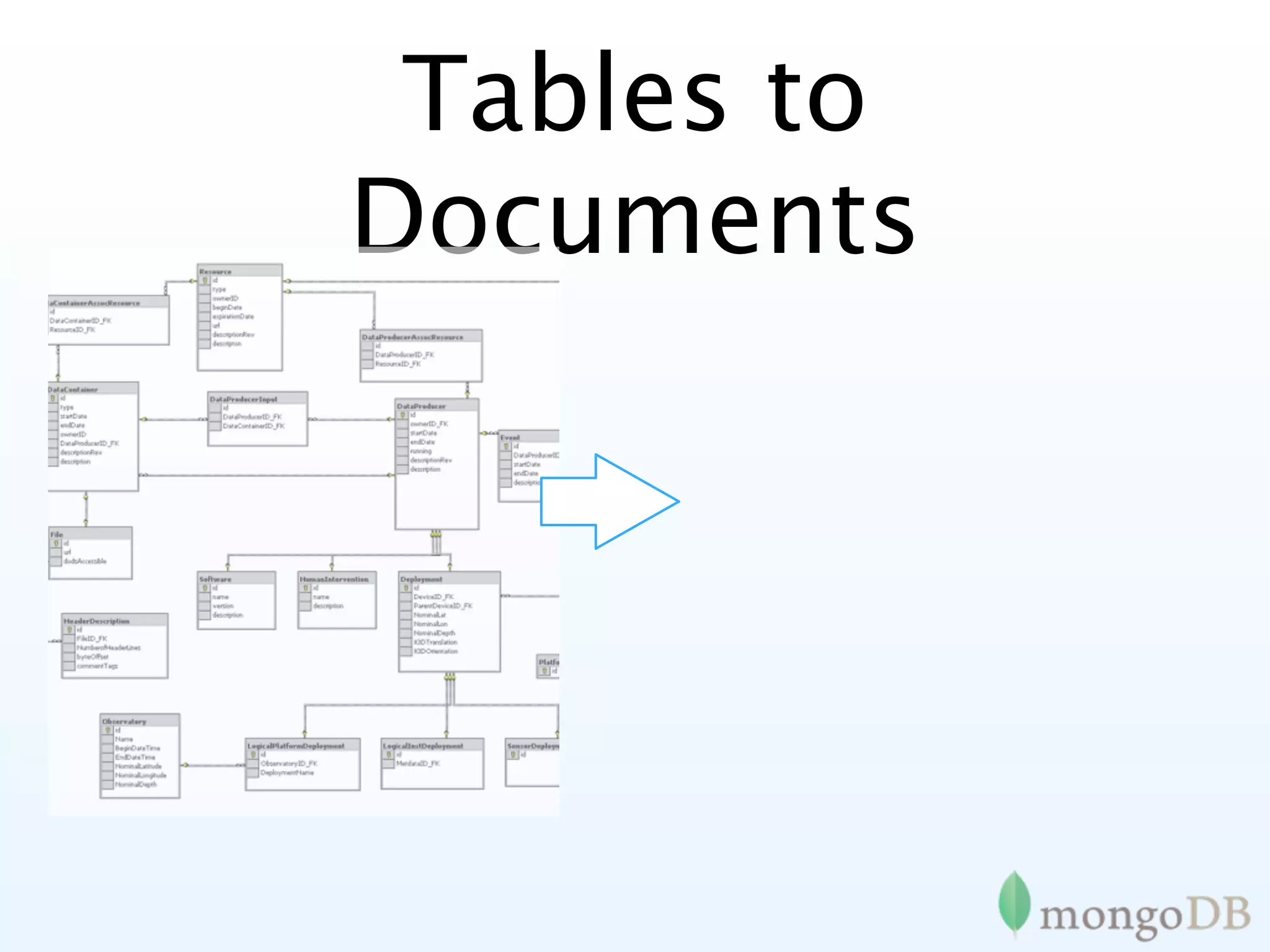
![Tables to
Documents
{
title: ‘MongoDB’,
contributors: [
{ name: ‘Eliot Horowitz’,
email: ‘eh@10gen.com’ },
{ name: ‘Dwight Merriman’,
email: ‘dm@10gen.com’ }
],
model: {
relational: false,
awesome: true
}](https://image.slidesharecdn.com/mongodb-slc2011-111020102909-phpapp01/75/MongoDB-44-2048.jpg)
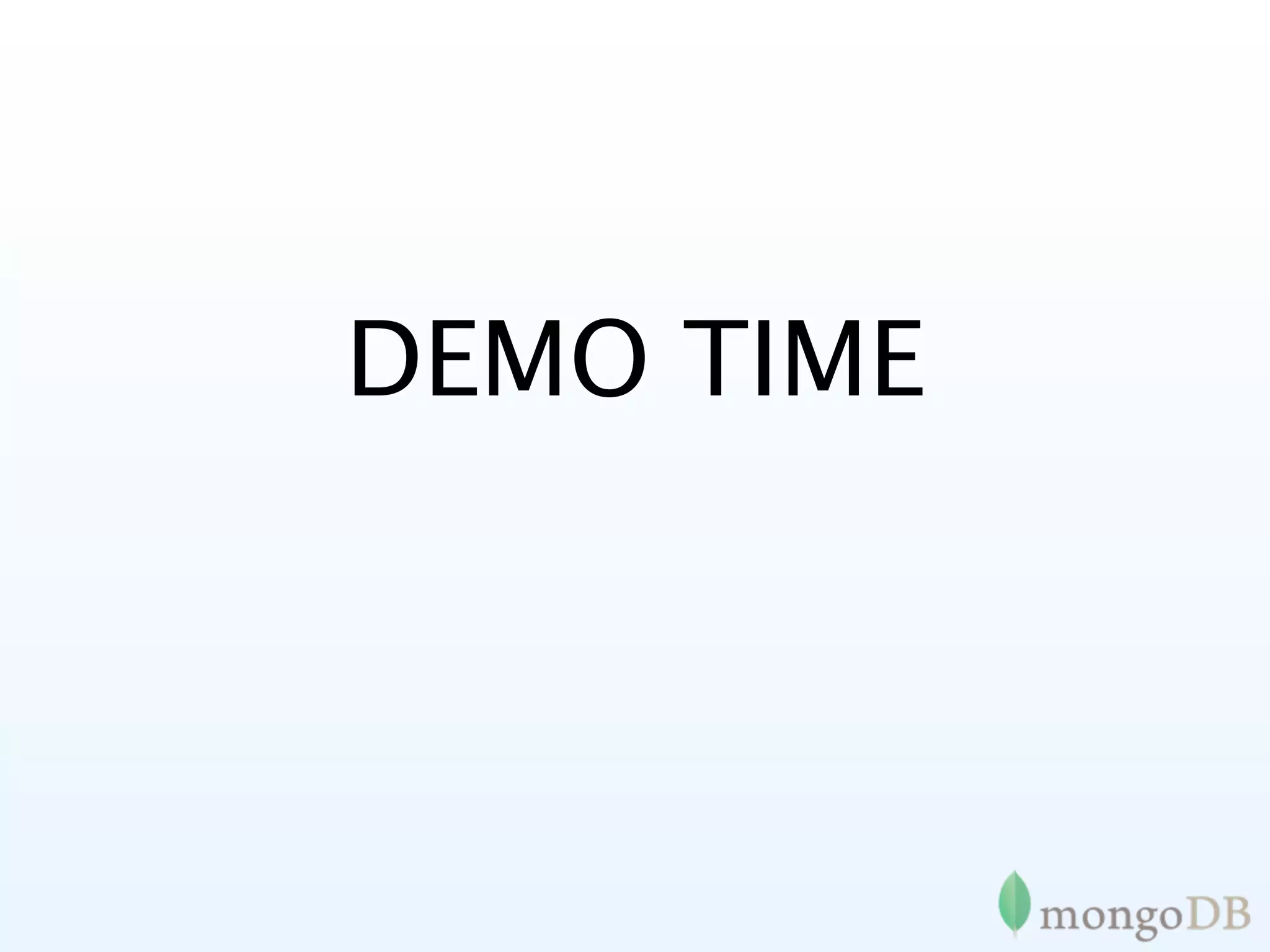
![Documents
Blog Post Document
> p = {author: “roger”,
date: new Date(),
text: “about mongoDB...”,
tags: [“tech”, “databases”]}
> db.posts.save(p)](https://image.slidesharecdn.com/mongodb-slc2011-111020102909-phpapp01/75/MongoDB-46-2048.jpg)
![Querying
> db.posts.find()
> { _id : ObjectId("4c4ba5c0672c685e5e8aabf3"),
author : "roger",
date : "Sat Jul 24 2010 19:47:11",
text : "About MongoDB...",
tags : [ "tech", "databases" ] }
Note: _id is unique, but can be
anything you’d like](https://image.slidesharecdn.com/mongodb-slc2011-111020102909-phpapp01/75/MongoDB-47-2048.jpg)
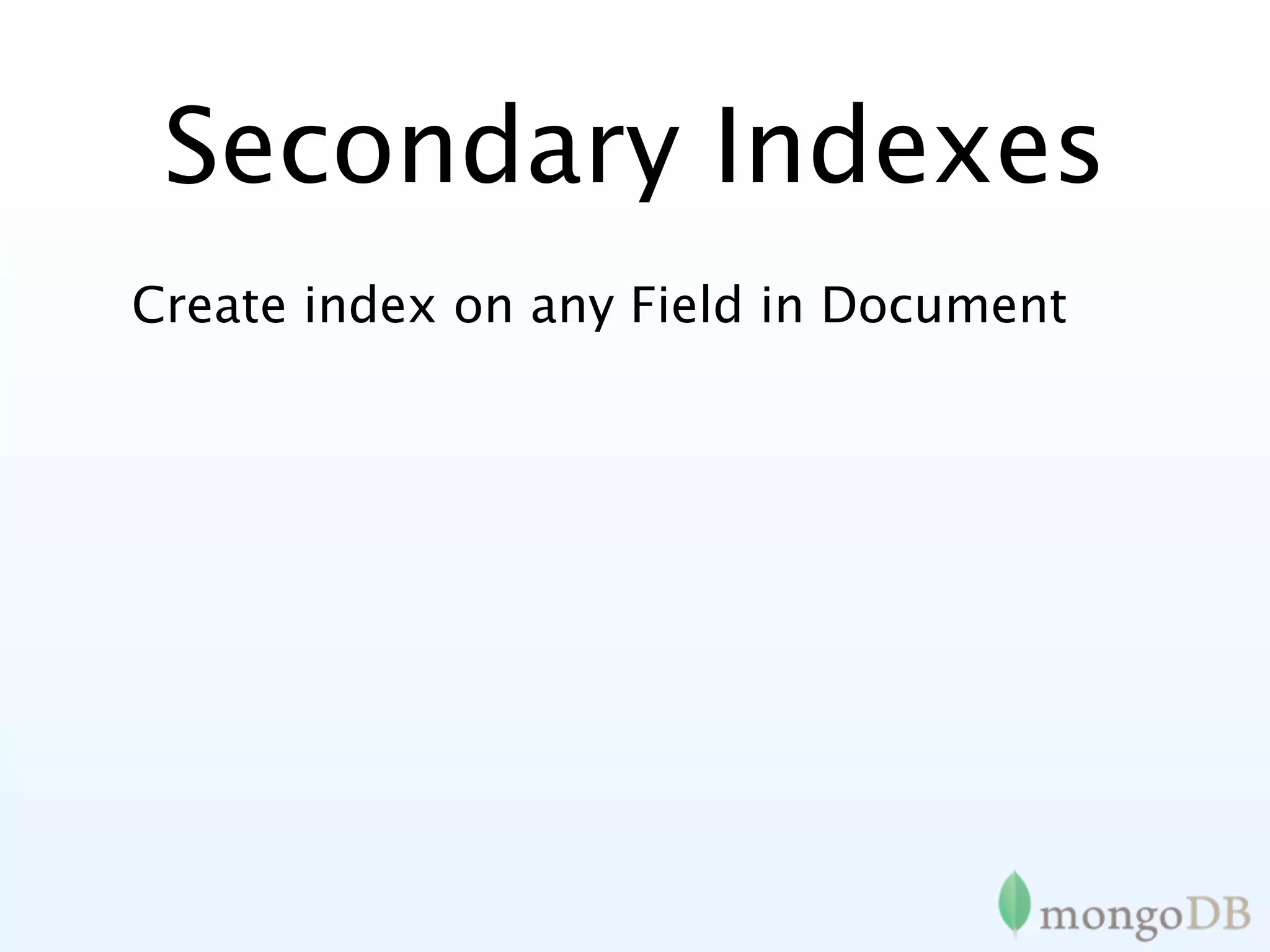
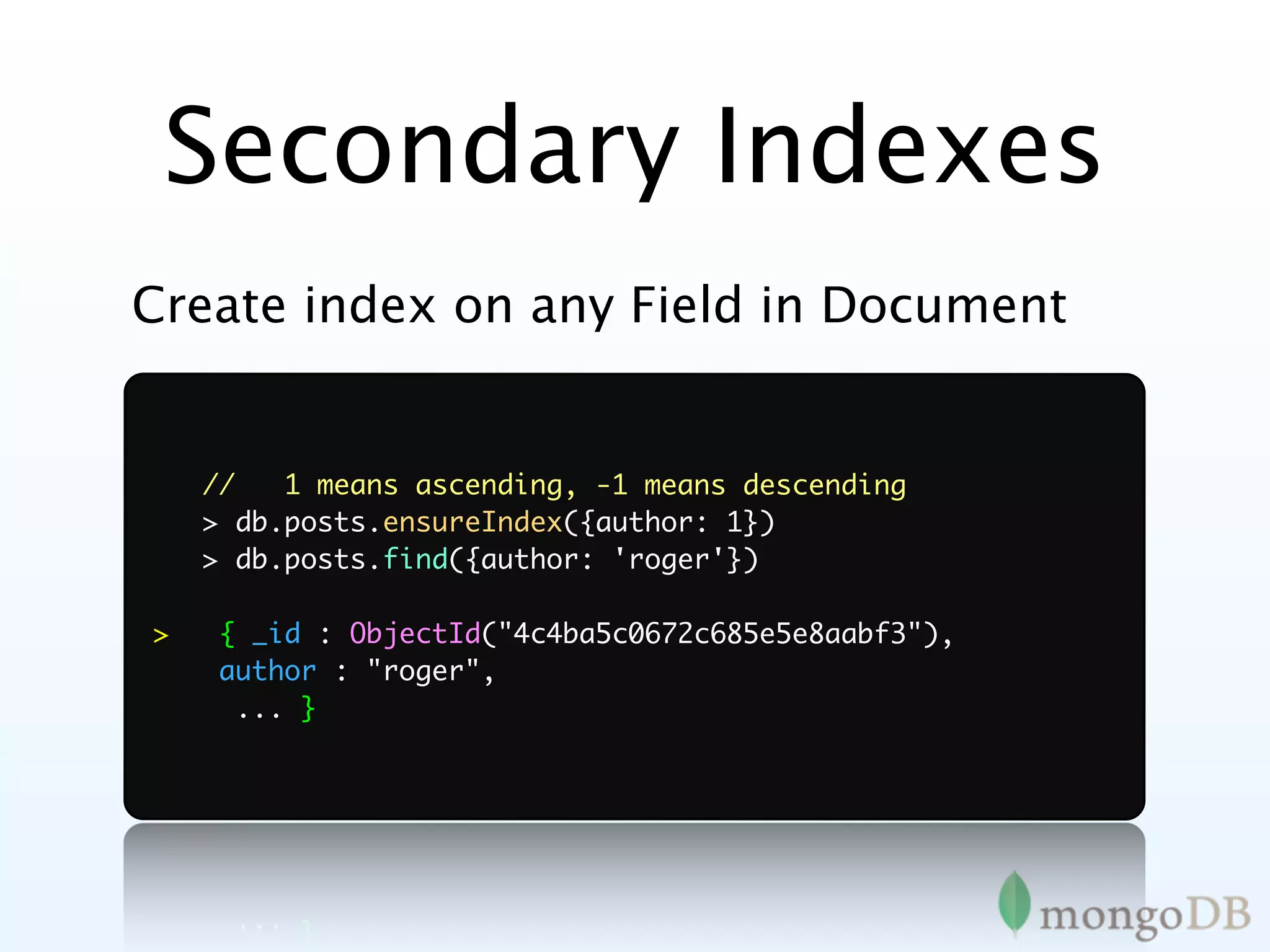
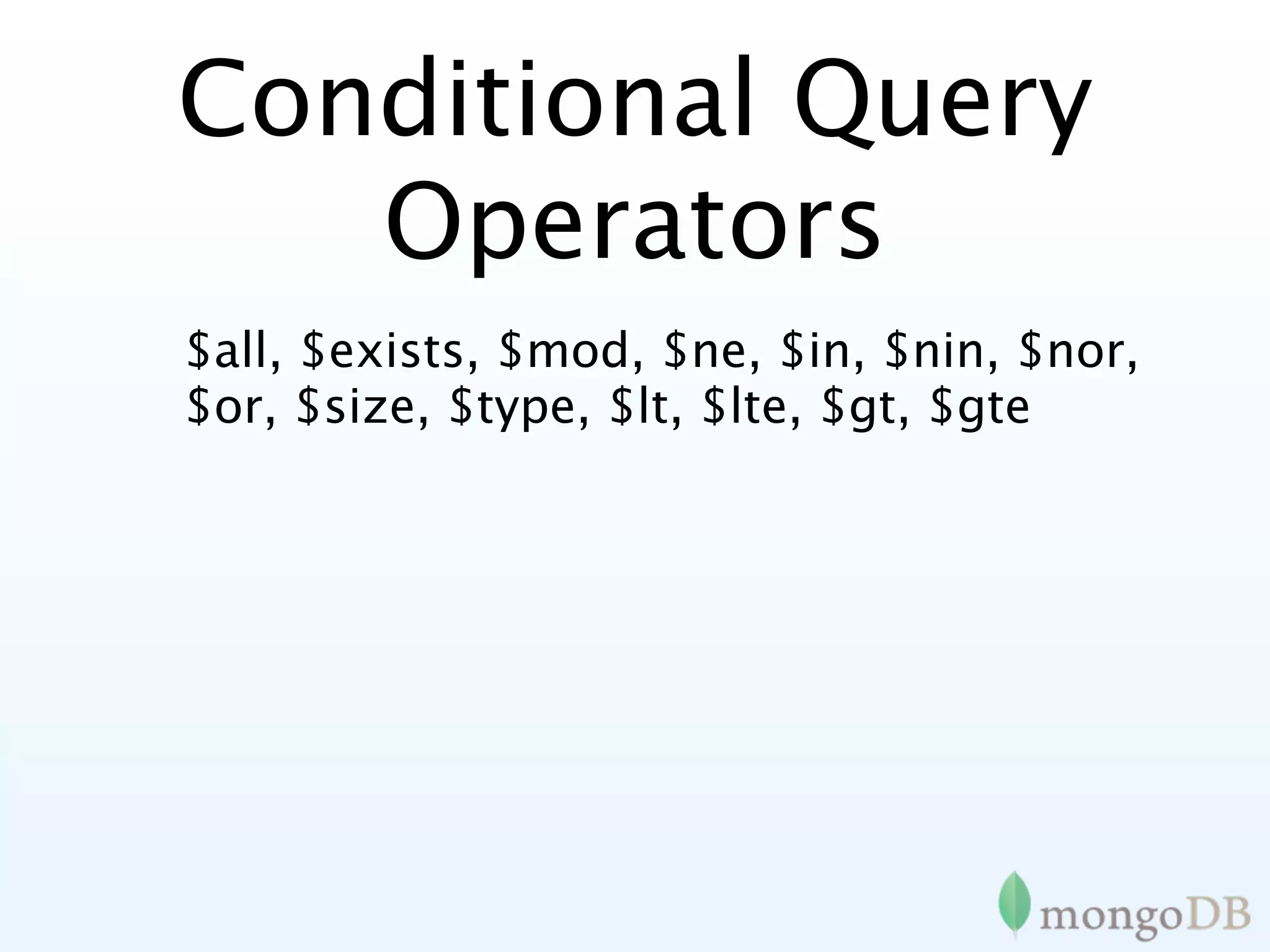
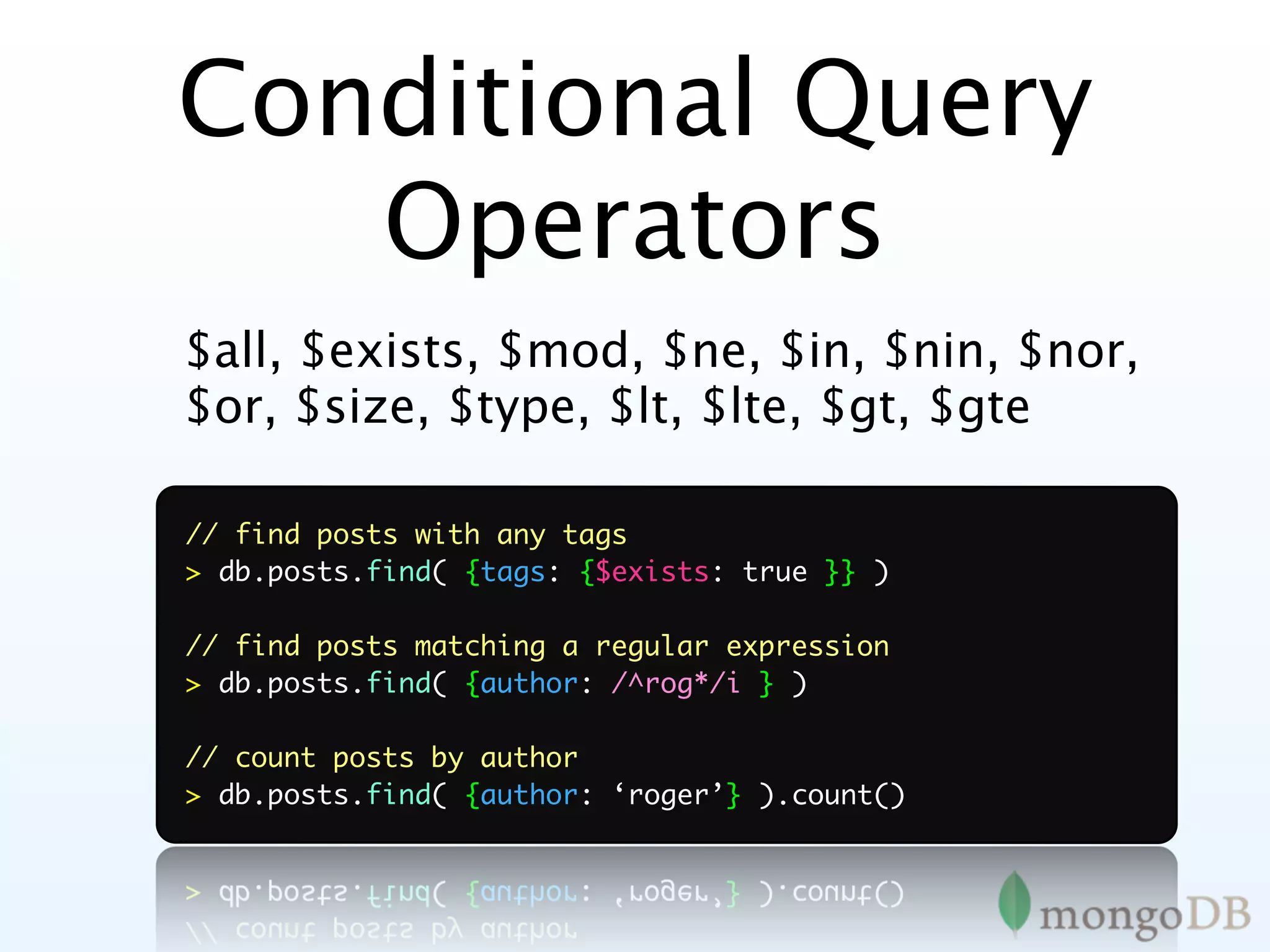

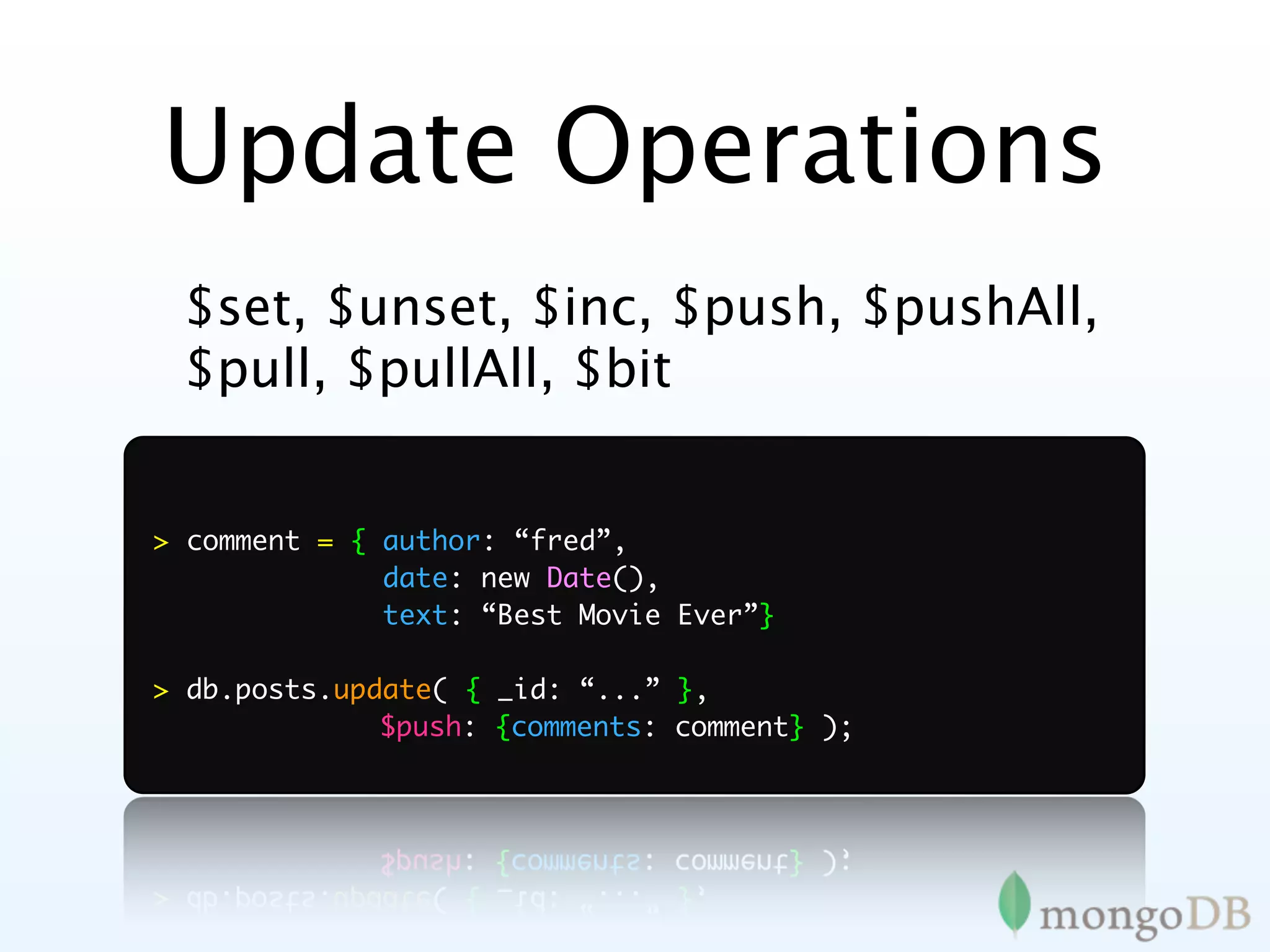
![Nested Documents
{ _id : ObjectId("4c4ba5c0672c685e5e8aabf3"),
author : "roger",
date : "Sat Apr 24 2011 19:47:11",
text : "About MongoDB...",
tags : [ "tech", "databases" ],
comments : [
{
author : "Fred",
date : "Sat Apr 25 2010 20:51:03 GMT-0700",
text : "Best Post Ever!"
}
]
}](https://image.slidesharecdn.com/mongodb-slc2011-111020102909-phpapp01/75/MongoDB-54-2048.jpg)
![Secondary Indexes
// Index nested documents
> db.posts.ensureIndex( “comments.author”: 1)
> db.posts.find({‘comments.author’:’Fred’})
// Index on tags (multi-key index)
> db.posts.ensureIndex( tags: 1)
> db.posts.find( { tags: ‘tech’ } )
// geospatial index
> db.posts.ensureIndex( “author.location”: “2d” )
> db.posts.find( “author.location”: { $near : [22,42] } )](https://image.slidesharecdn.com/mongodb-slc2011-111020102909-phpapp01/75/MongoDB-55-2048.jpg)
![Rich Documents
{ _id : ObjectId("4c4ba5c0672c685e5e8aabf3"),
line_items : [ { sku: ‘tt-123’,
name: ‘Coltrane: Impressions’ },
{ sku: ‘tt-457’,
name: ‘Davis: Kind of Blue’ } ],
address : { name: ‘Banker’,
street: ‘111 Main’,
zip: 10010 },
payment: { cc: 4567,
exp: Date(2011, 7, 7) },
subtotal: 2355
}](https://image.slidesharecdn.com/mongodb-slc2011-111020102909-phpapp01/75/MongoDB-56-2048.jpg)


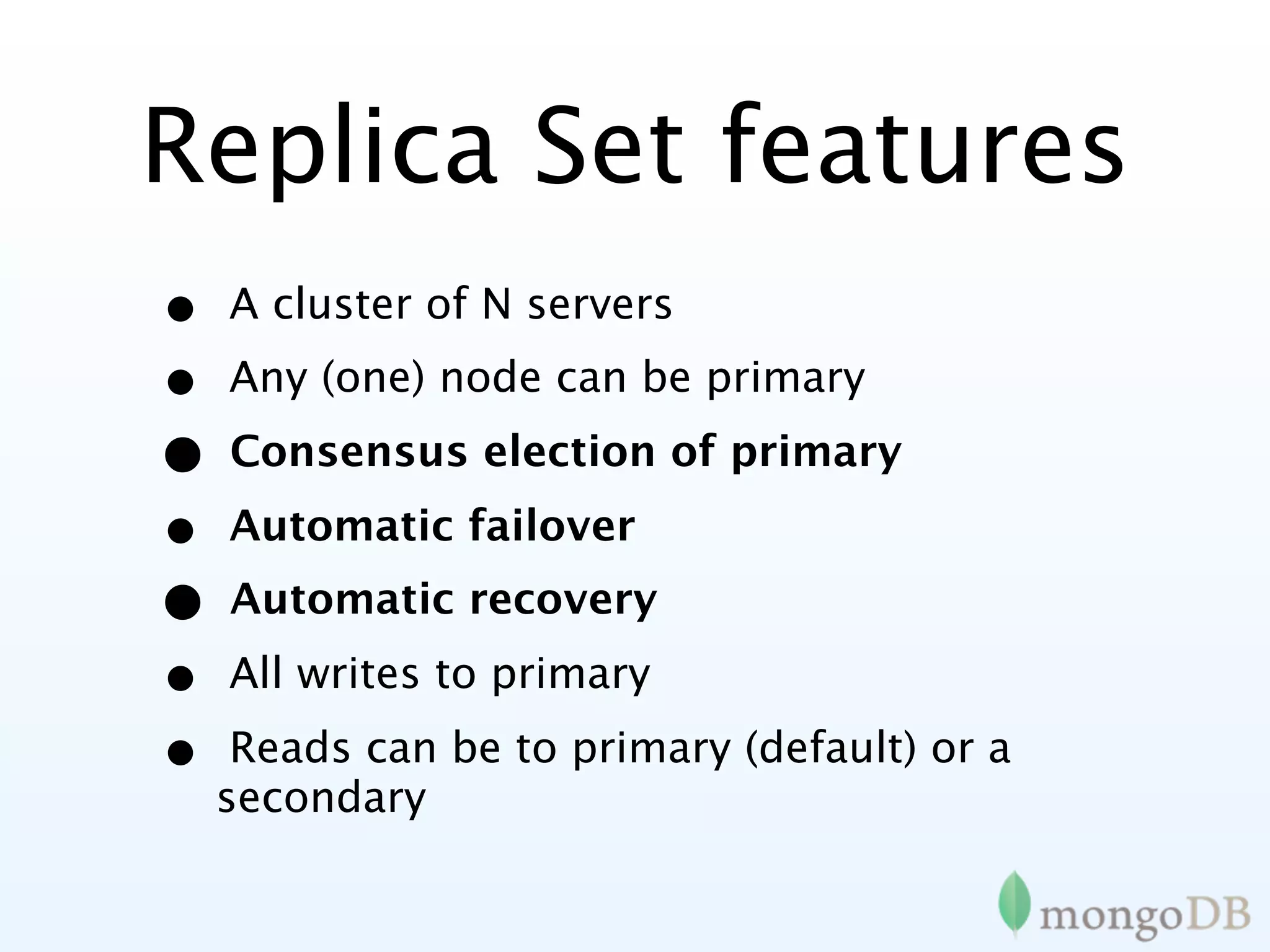
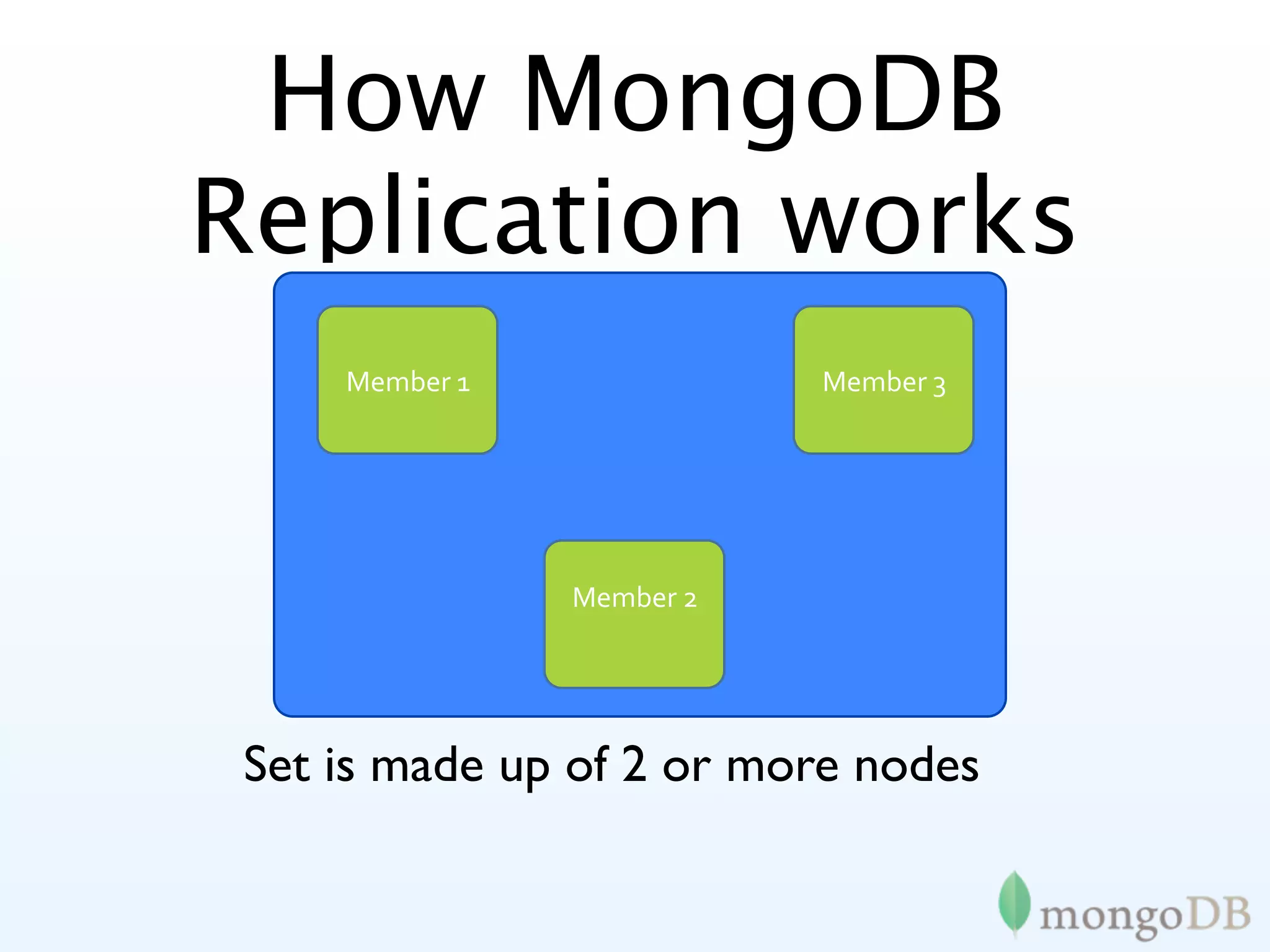
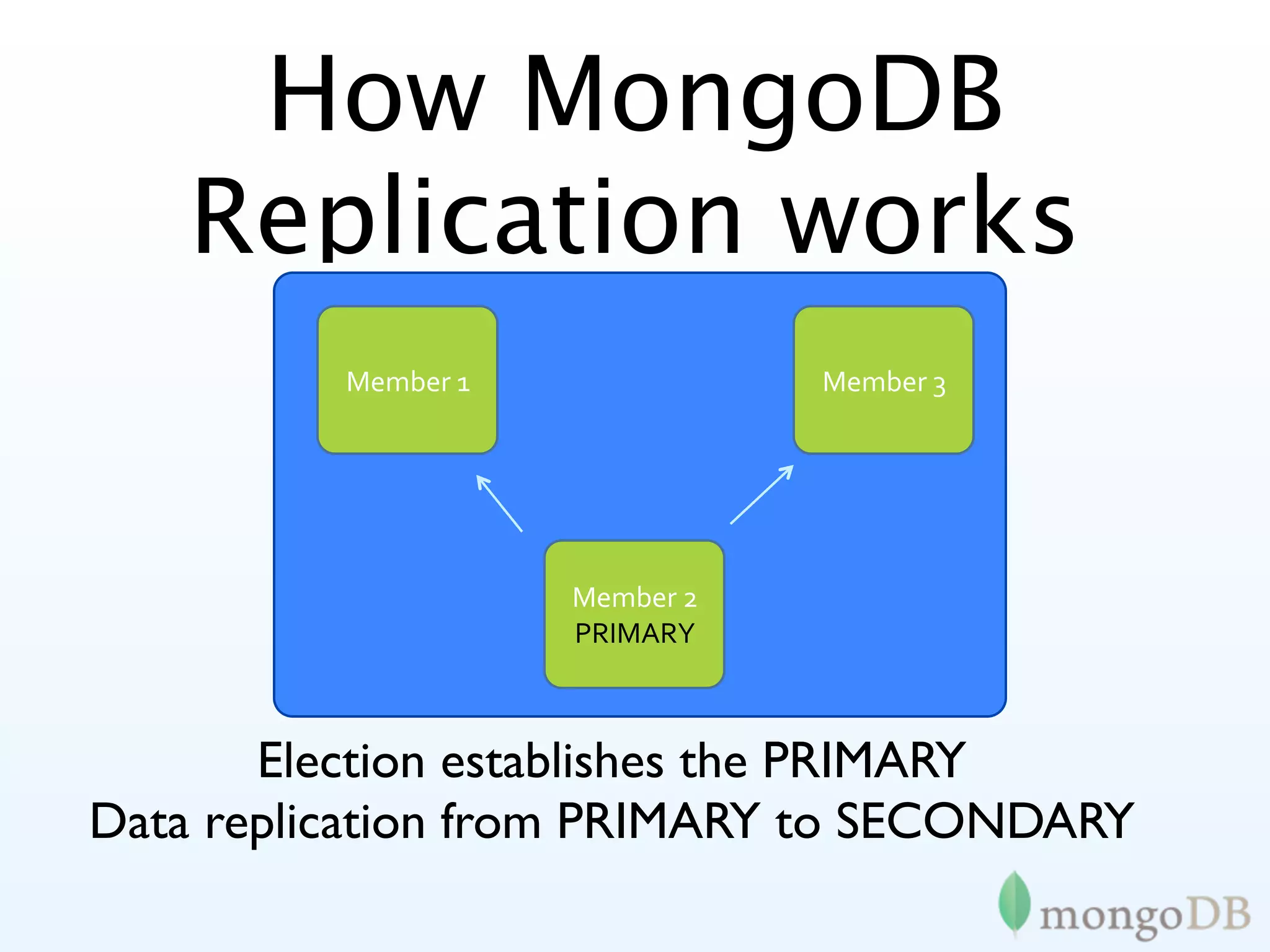

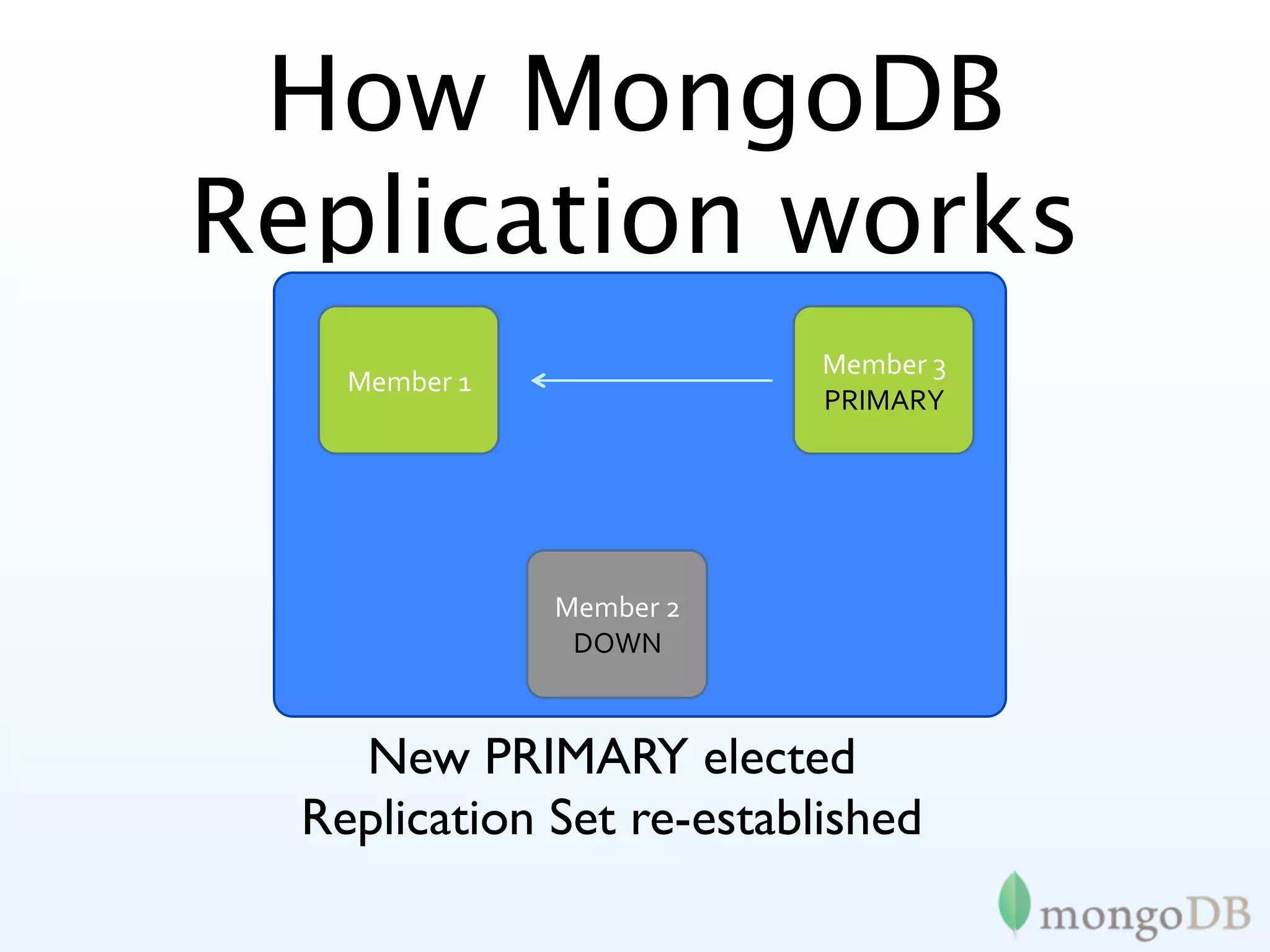
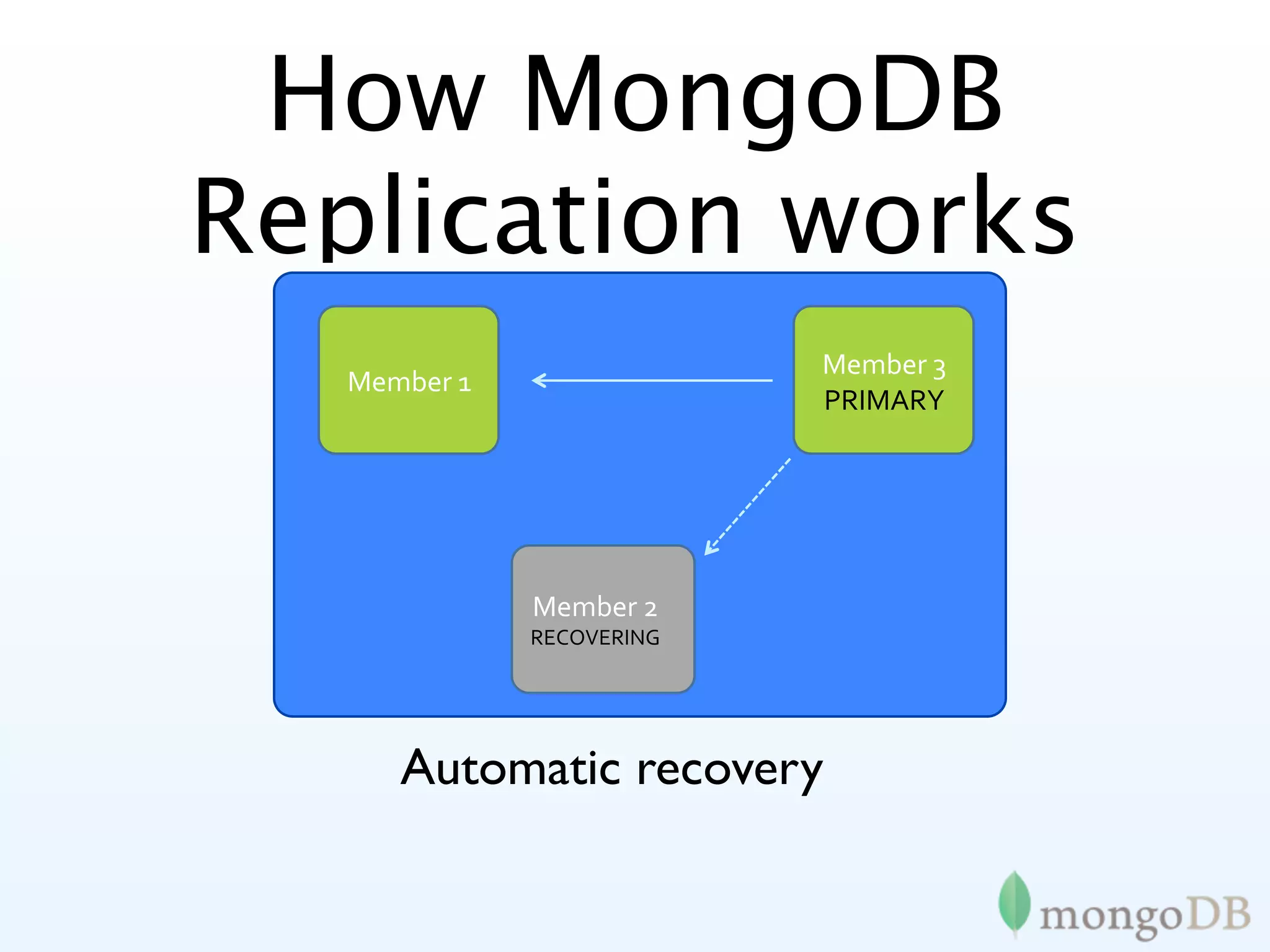
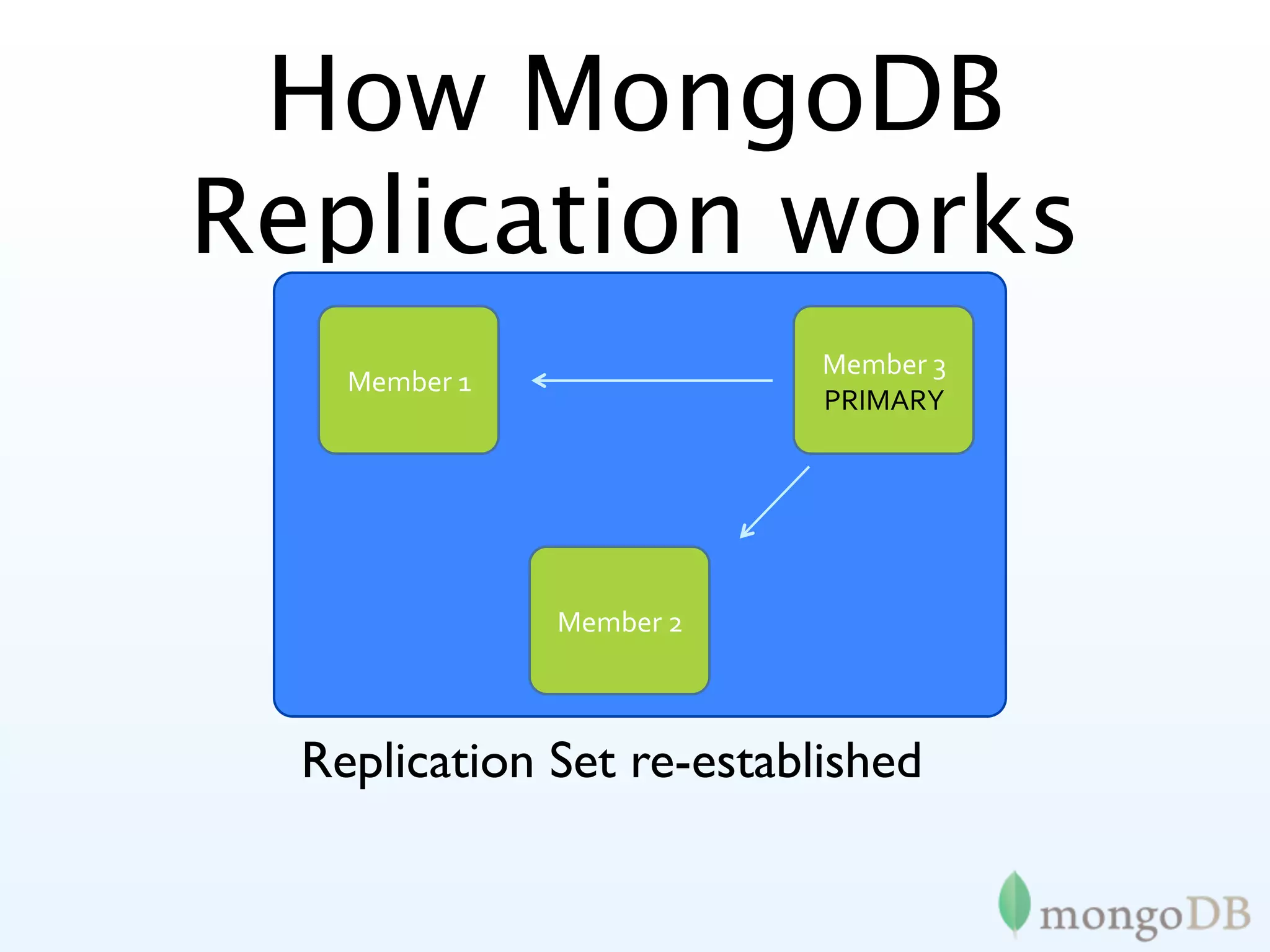
![Creating a Replica
Set
> cfg = {
_id : "acme_a",
members : [
{ _id : 0, host : "sf1.acme.com" },
{ _id : 1, host : "sf2.acme.com" },
{ _id : 2, host : "sf3.acme.com" } ] }
> use admin
> db.runCommand( { replSetInitiate : cfg } )](https://image.slidesharecdn.com/mongodb-slc2011-111020102909-phpapp01/75/MongoDB-66-2048.jpg)
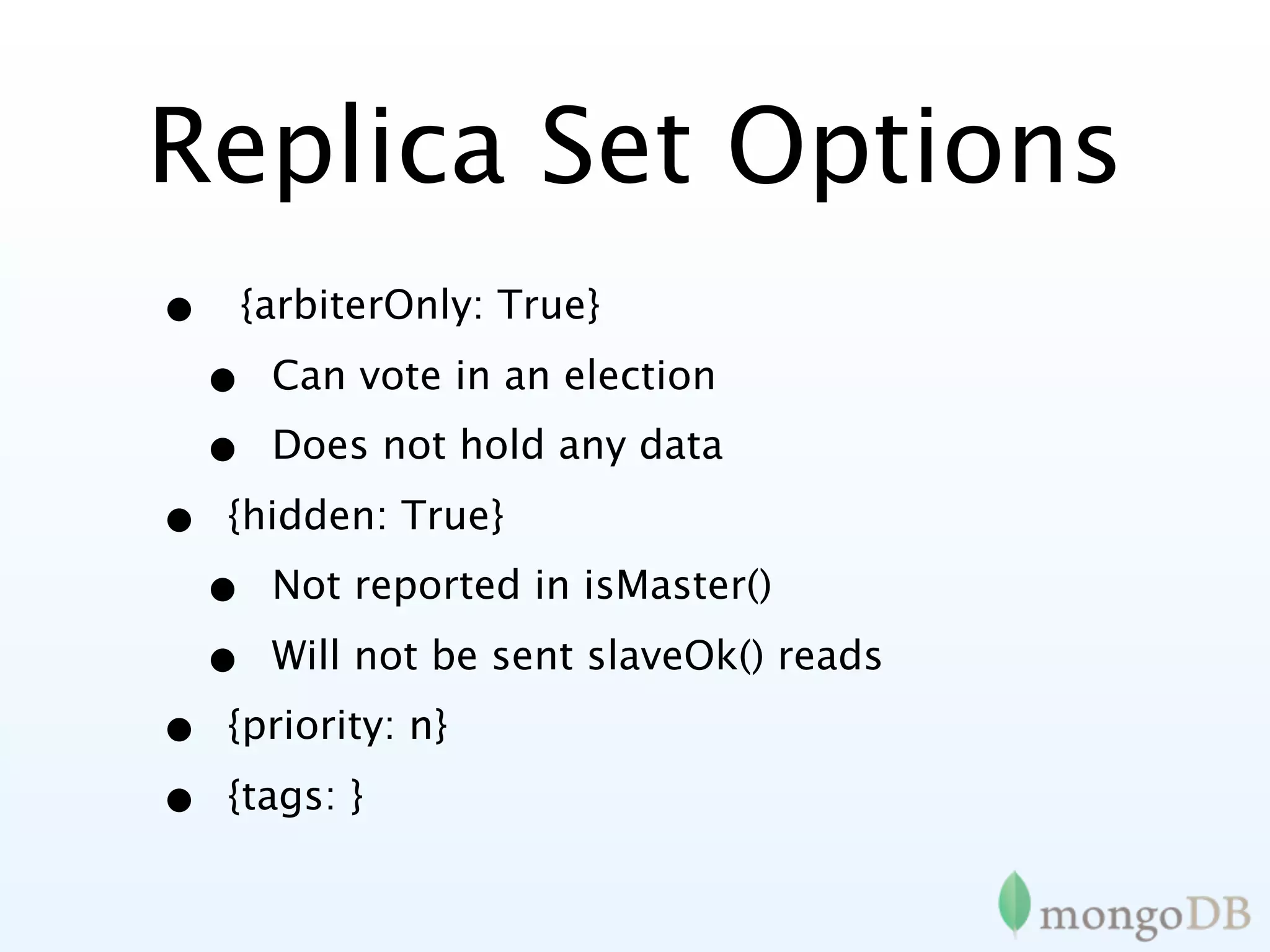
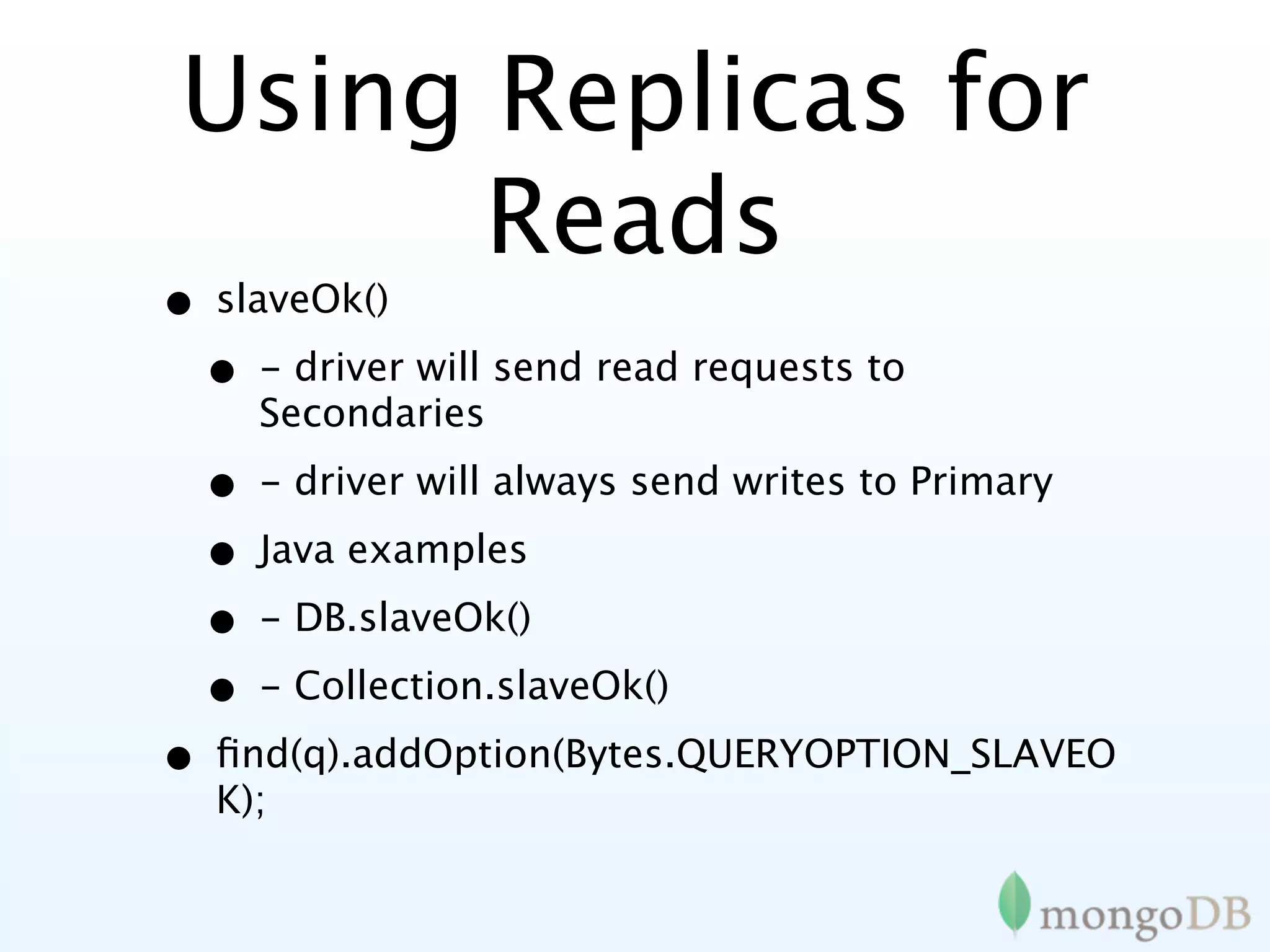
![Safe Writes
• db.runCommand({getLastError: 1, w : 1})
• - ensure write is synchronous
• - command returns after primary has written to memory
• w=n or w='majority'
• n is the number of nodes data must be replicated to
• driver will always send writes to Primary
• w='myTag' [MongoDB 2.0]
• Each member is "tagged" e.g. "US_EAST", "EMEA",
"US_WEST"
• Ensure that the write is executed in each tagged "region"](https://image.slidesharecdn.com/mongodb-slc2011-111020102909-phpapp01/75/MongoDB-69-2048.jpg)
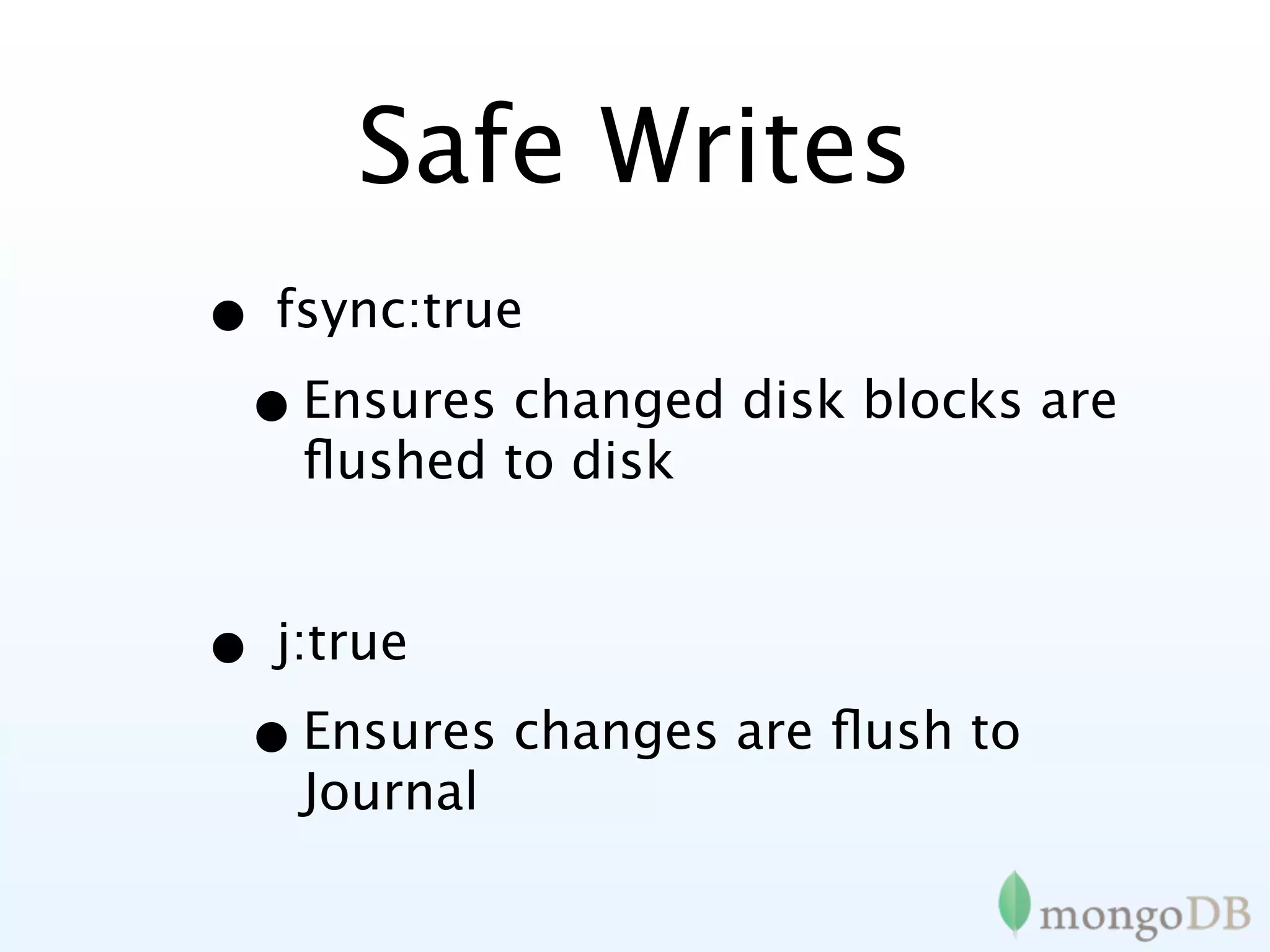

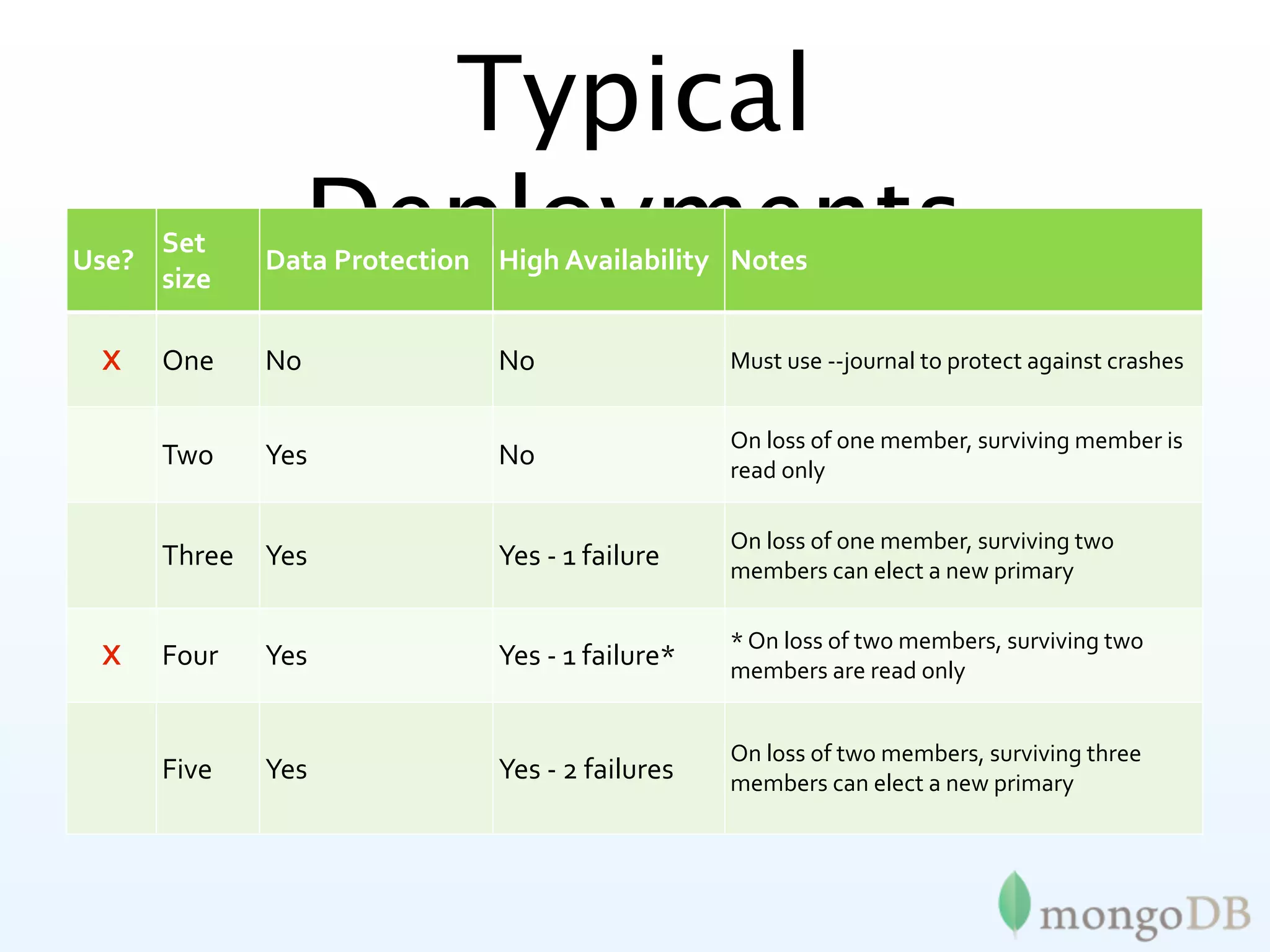
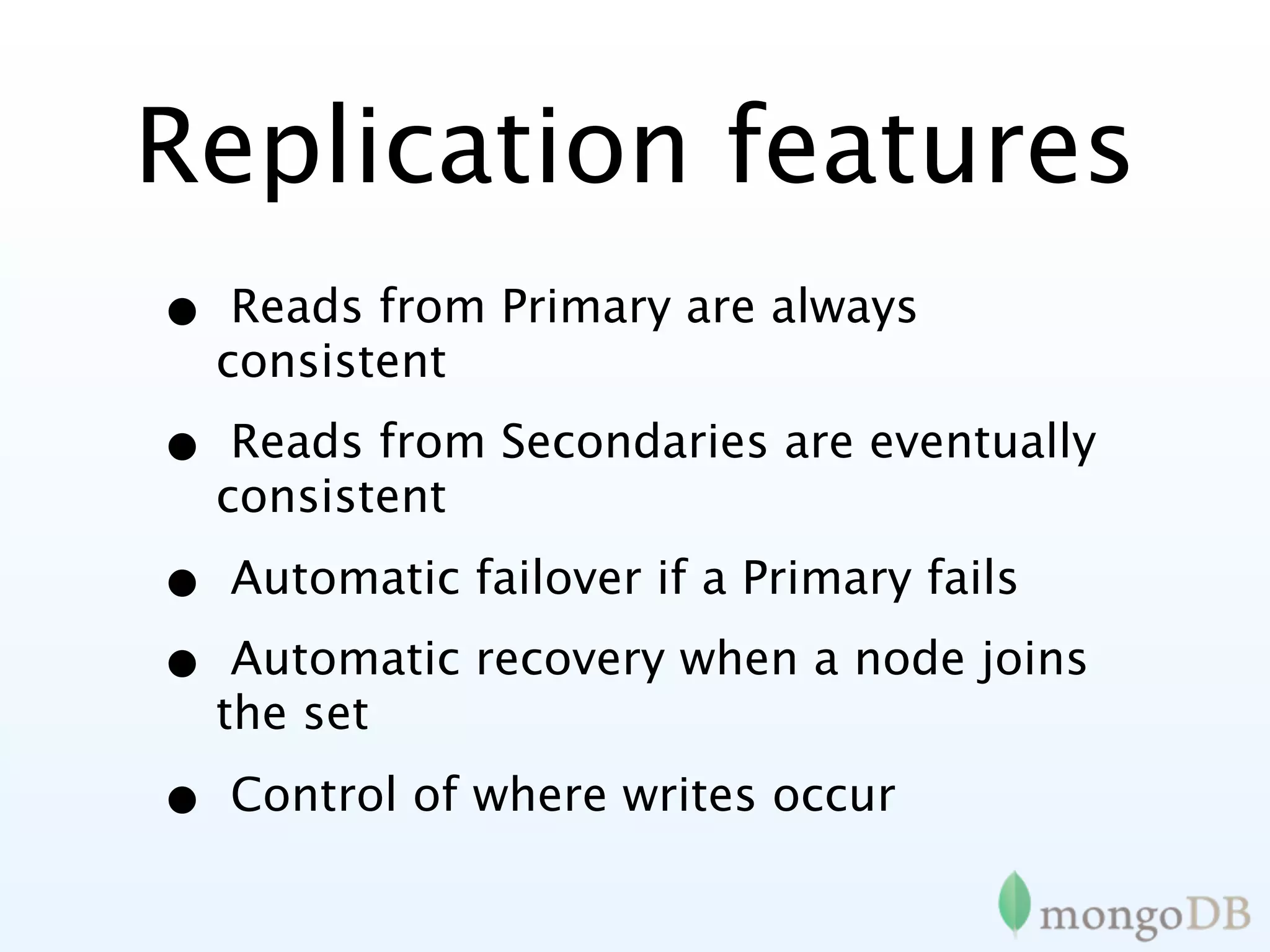

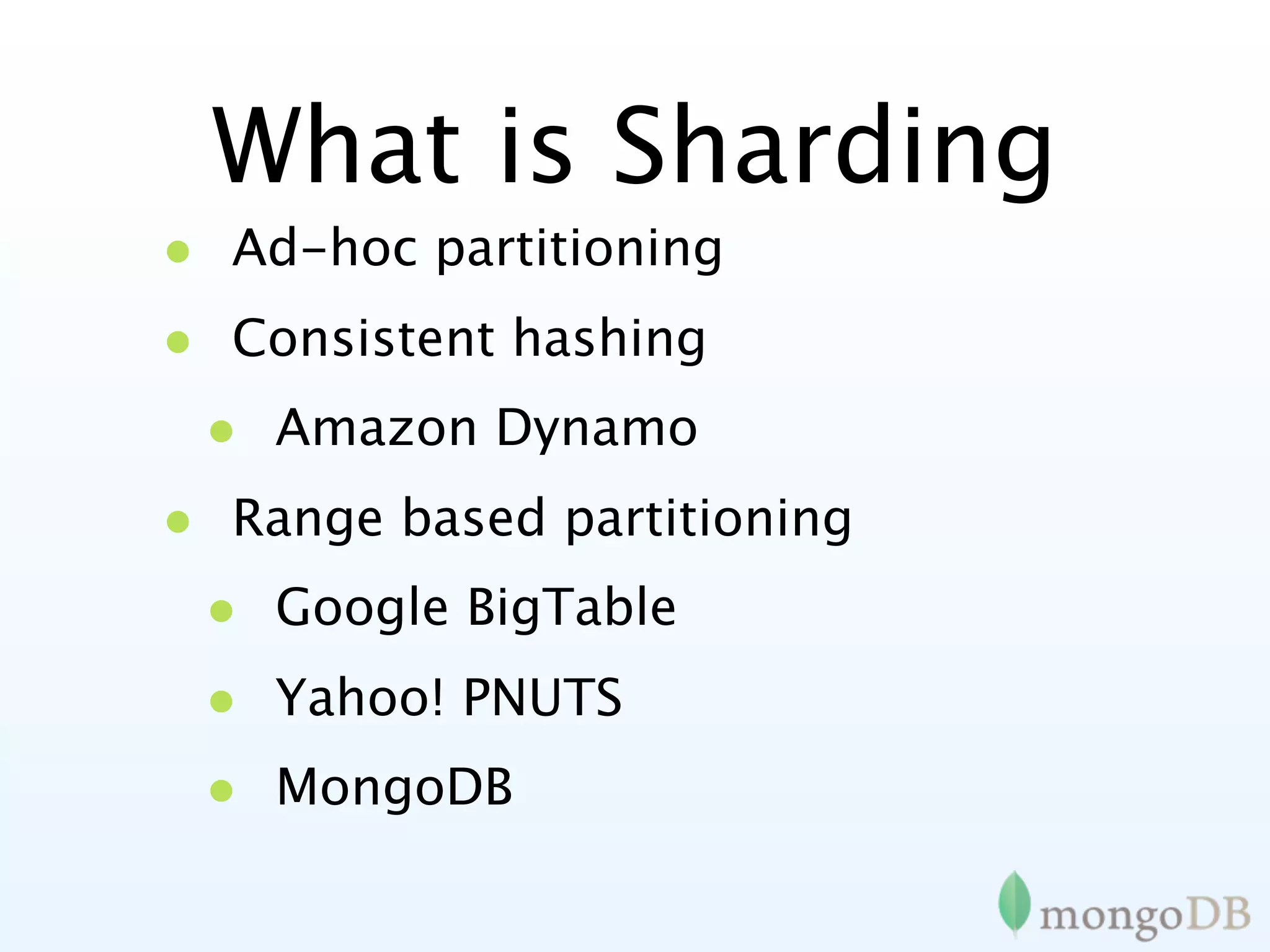
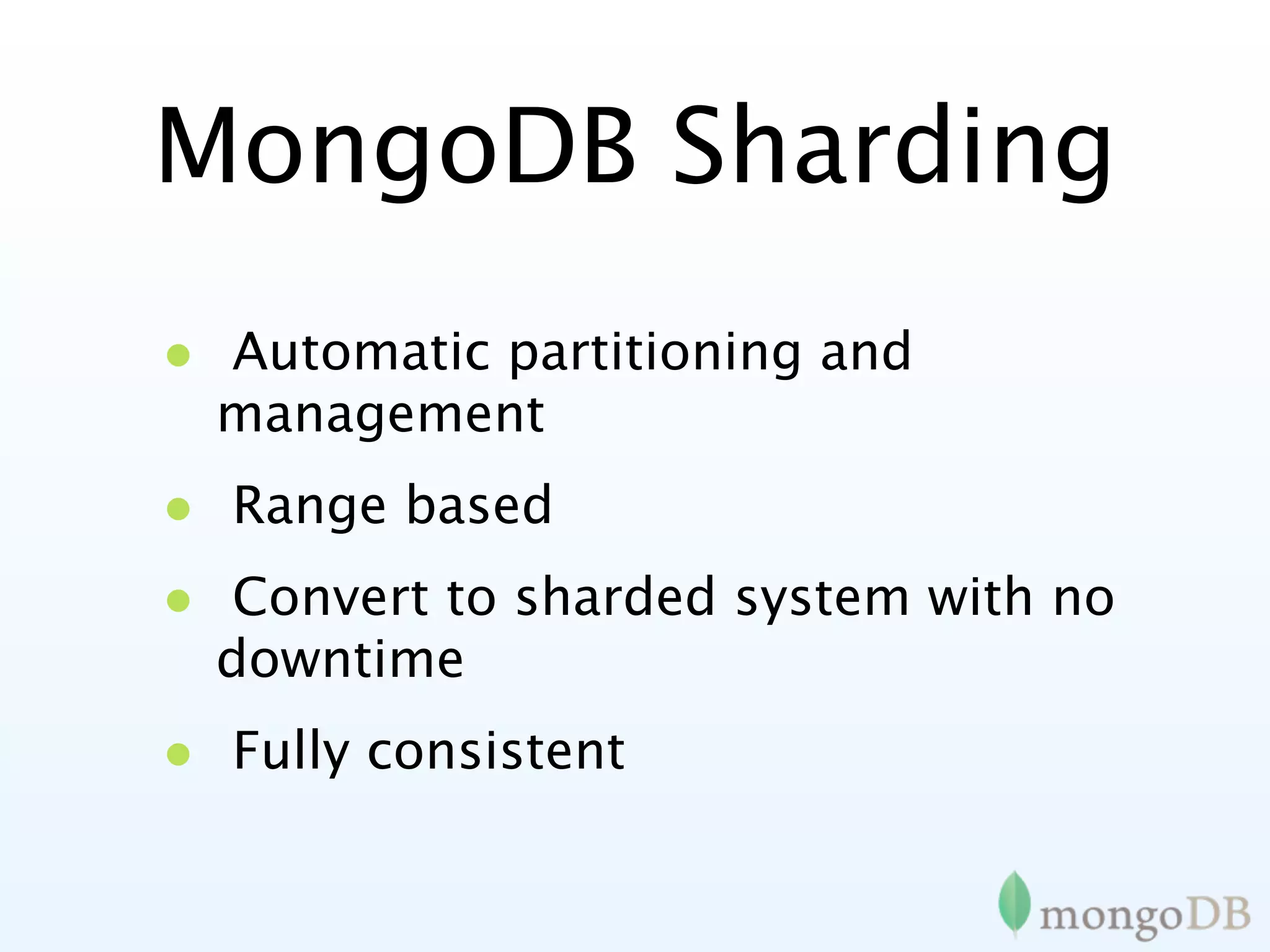
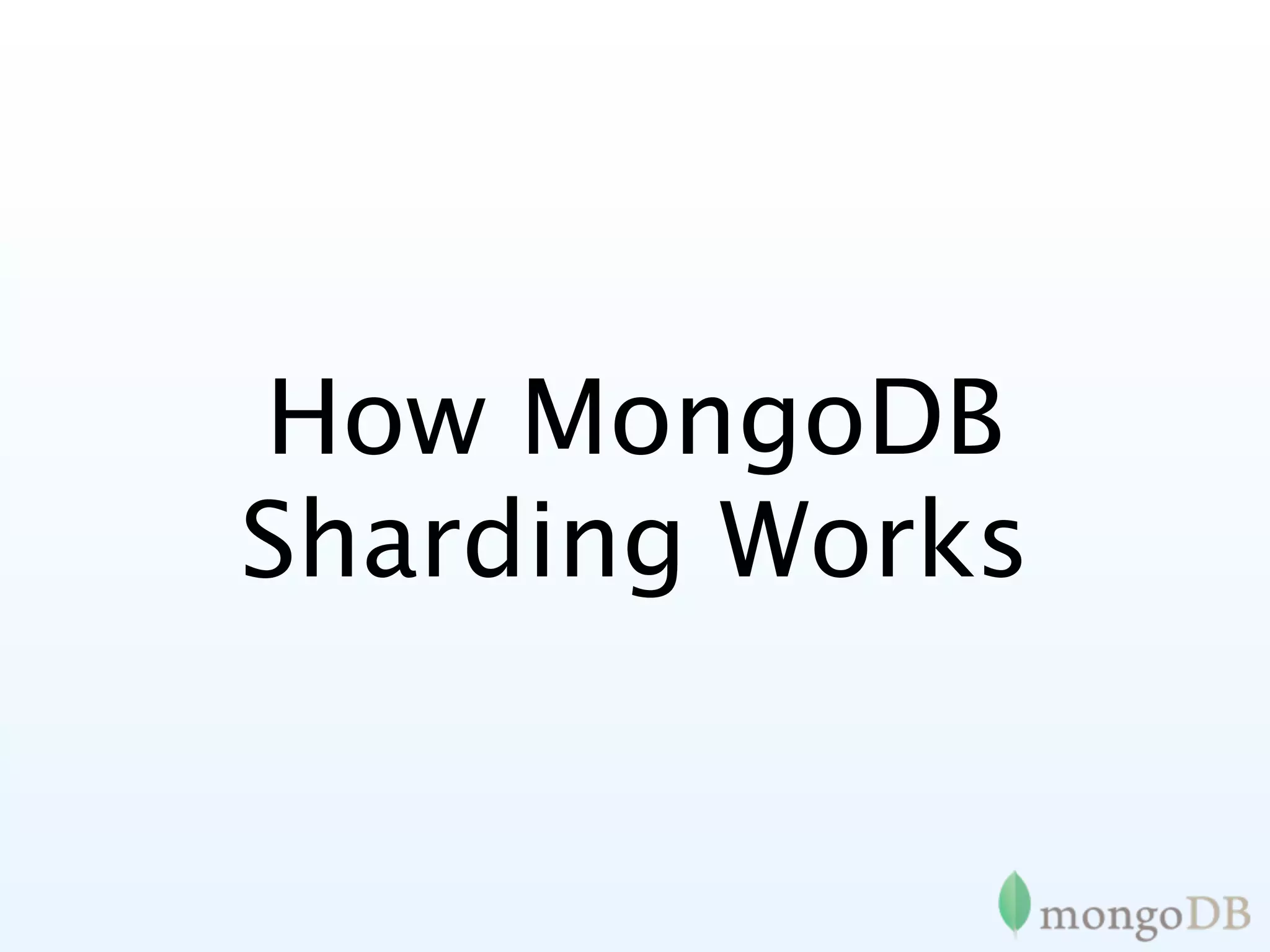
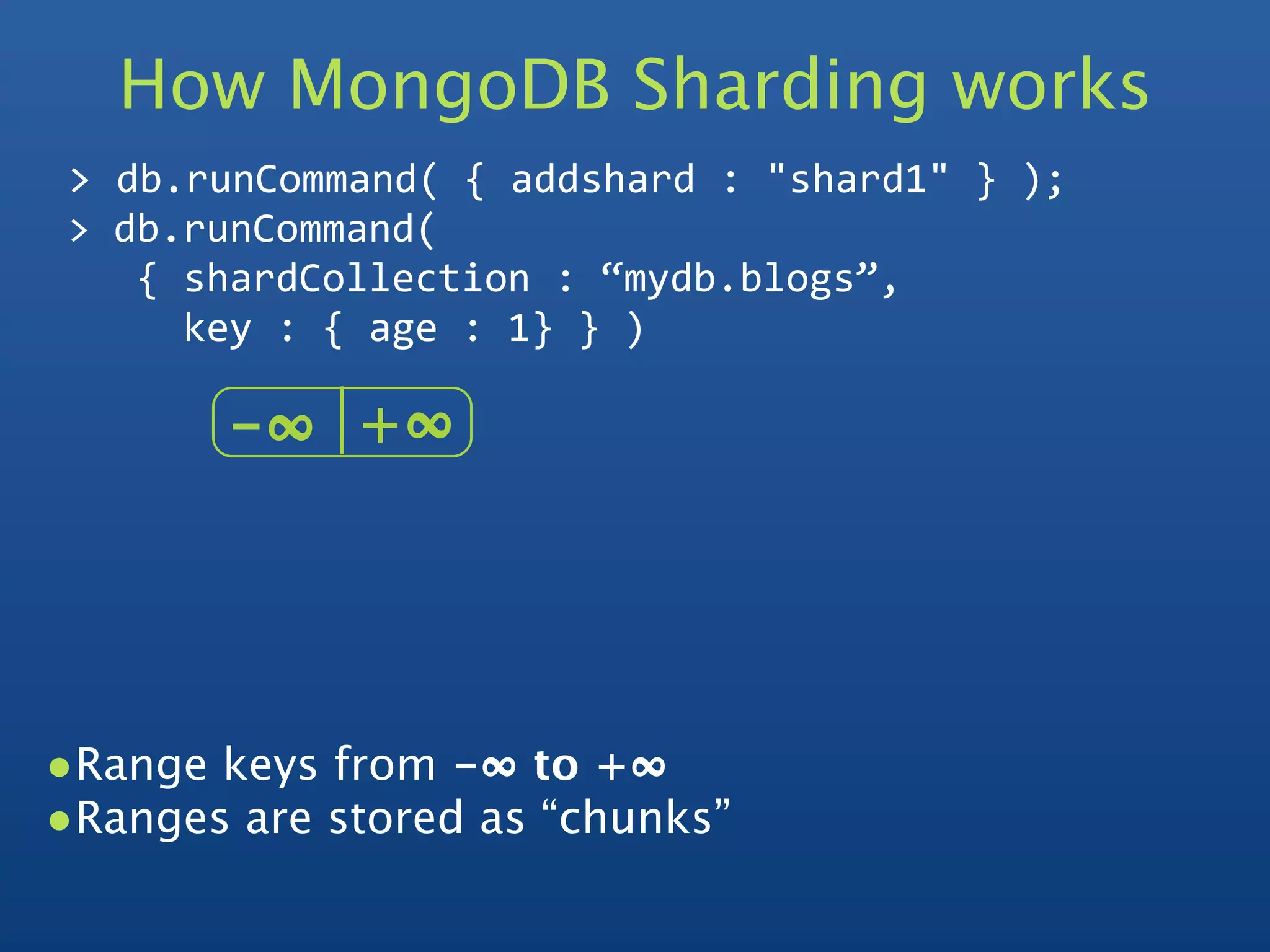

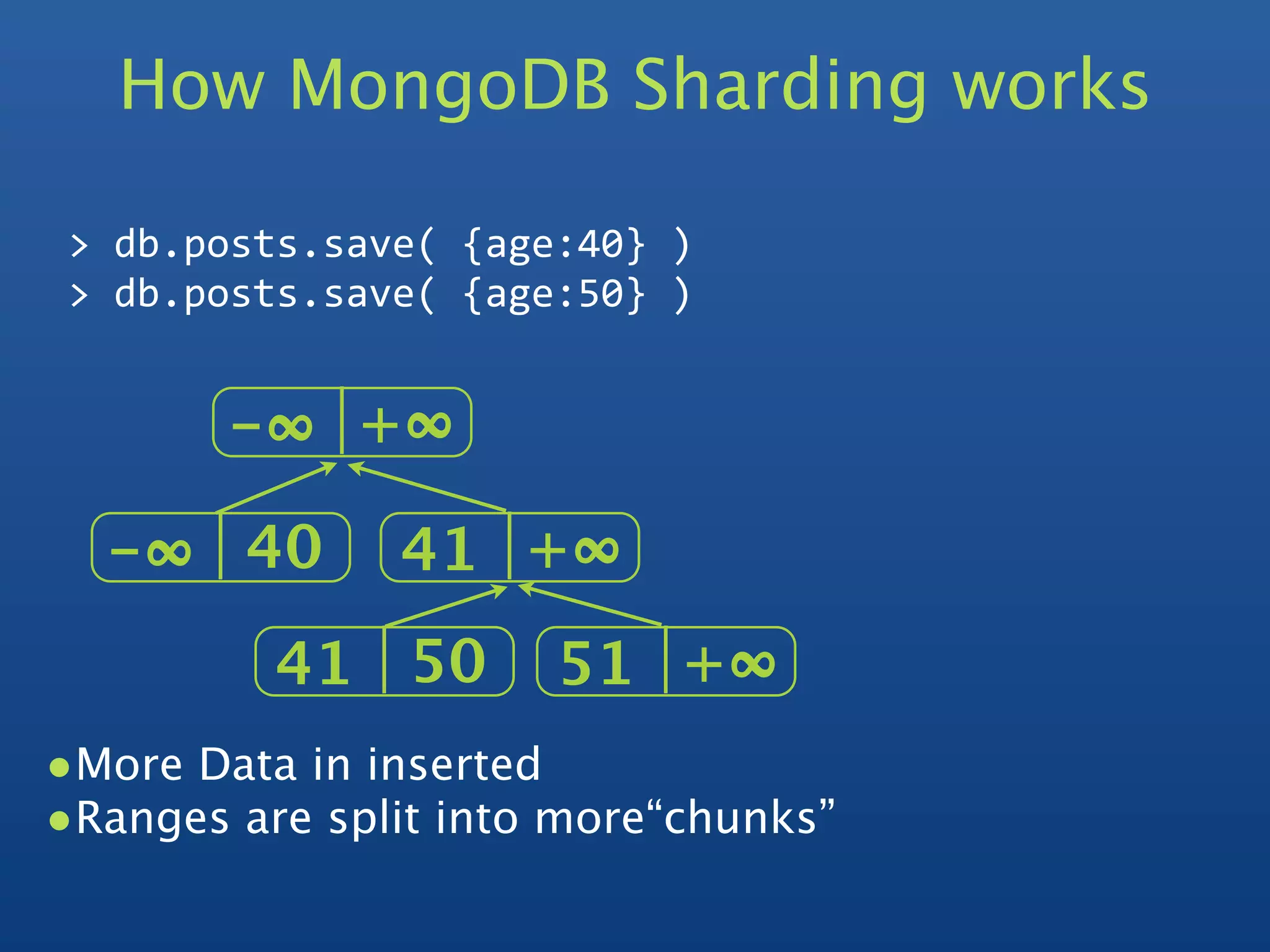
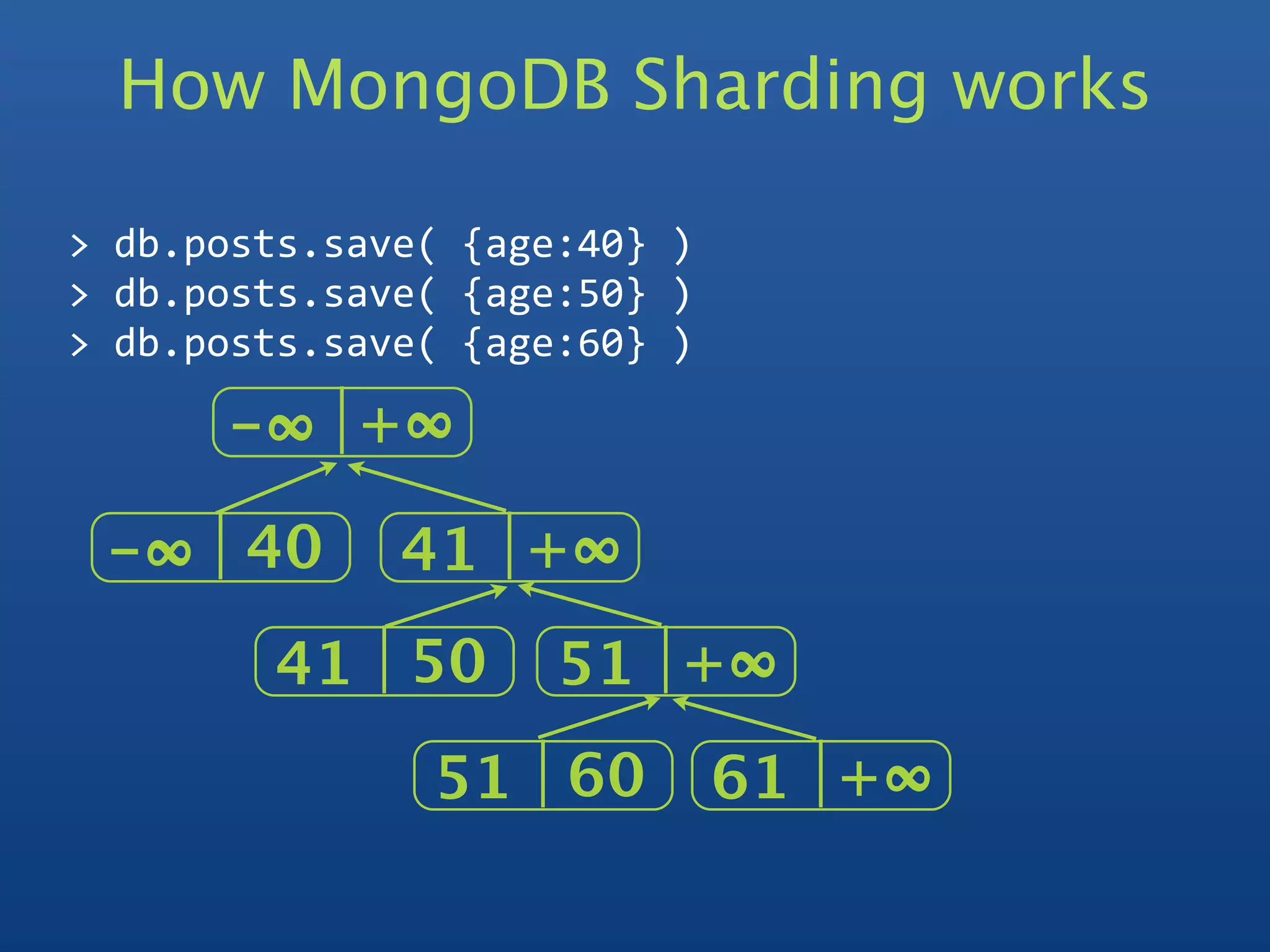
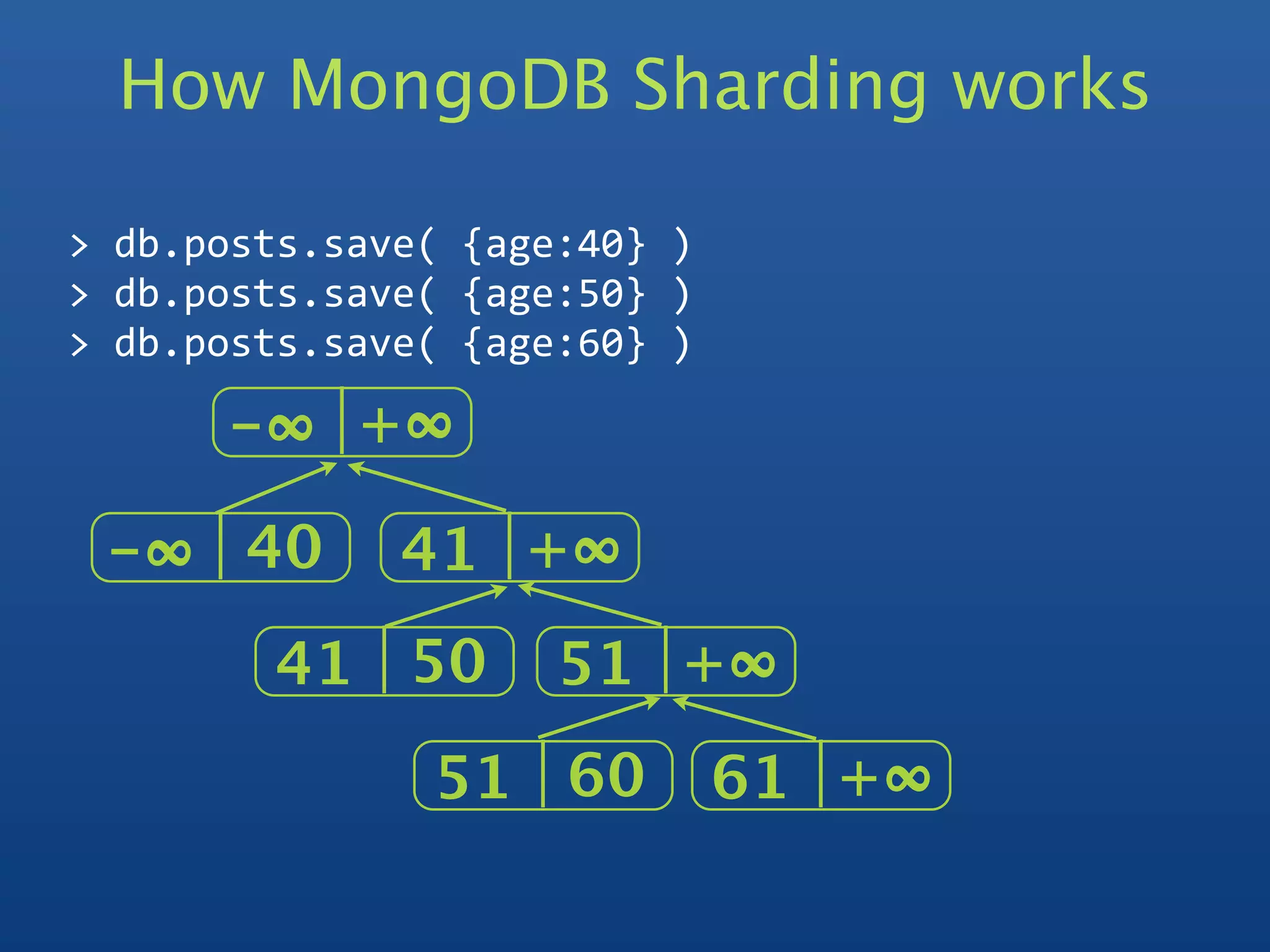
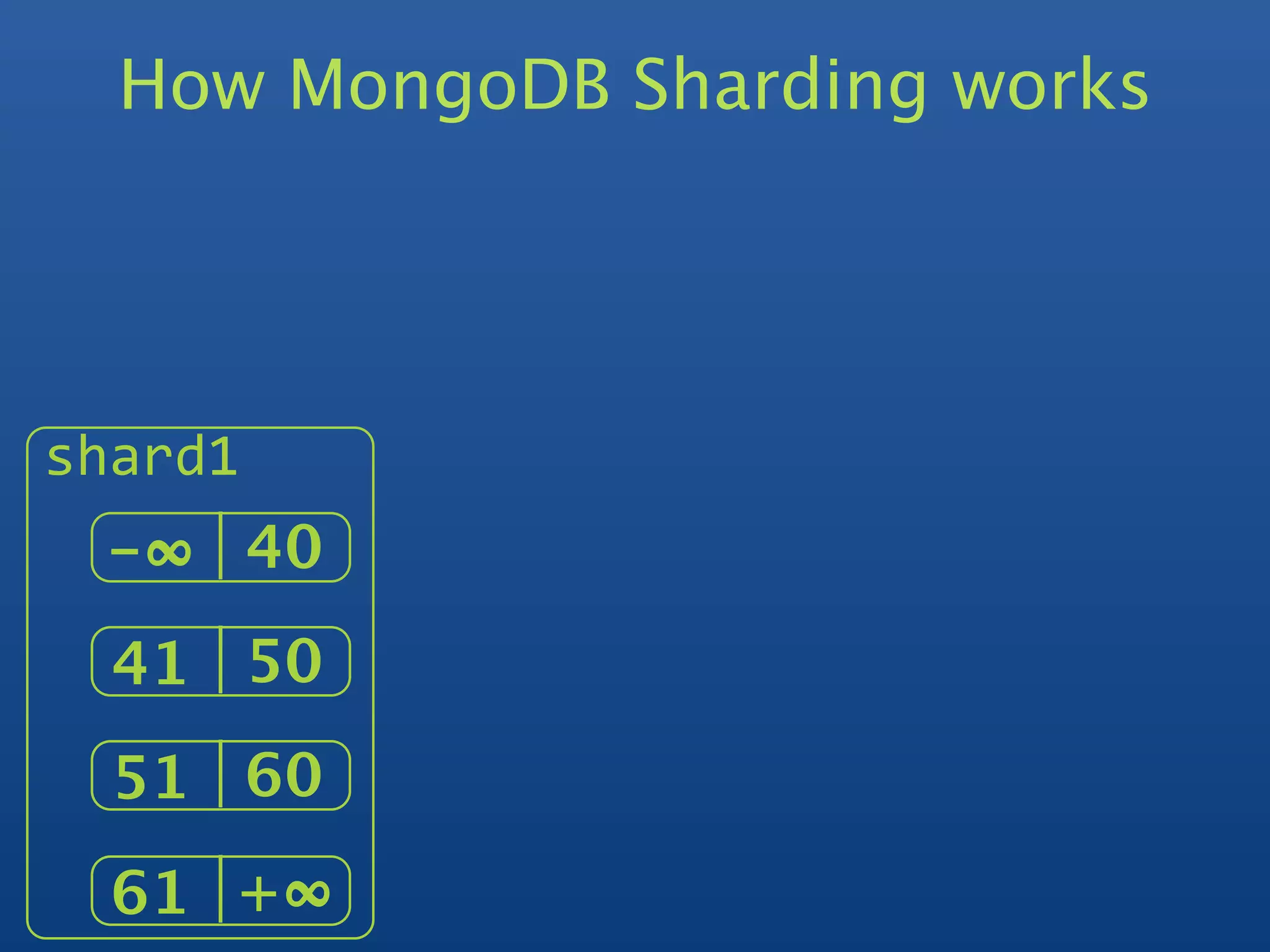
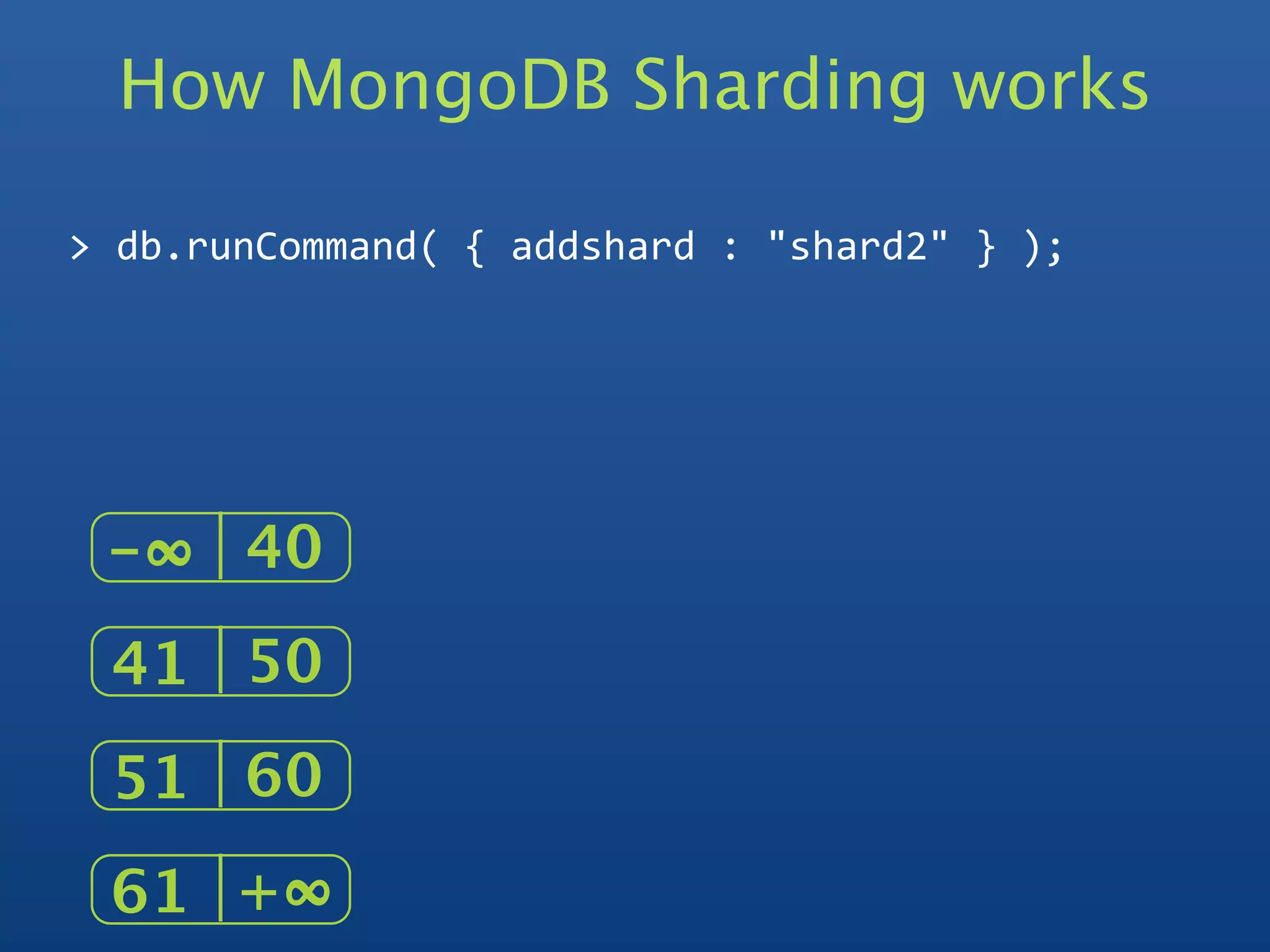

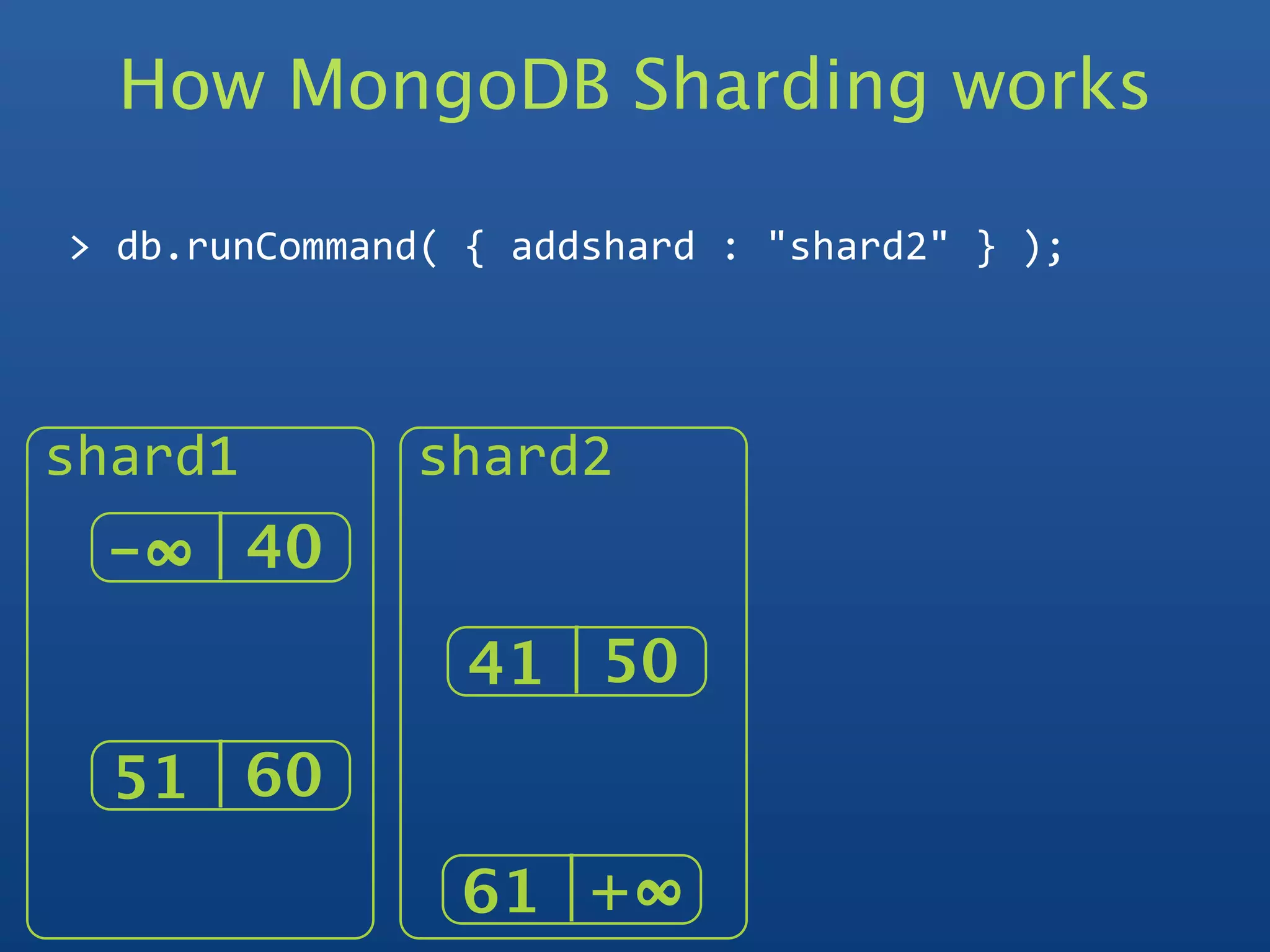
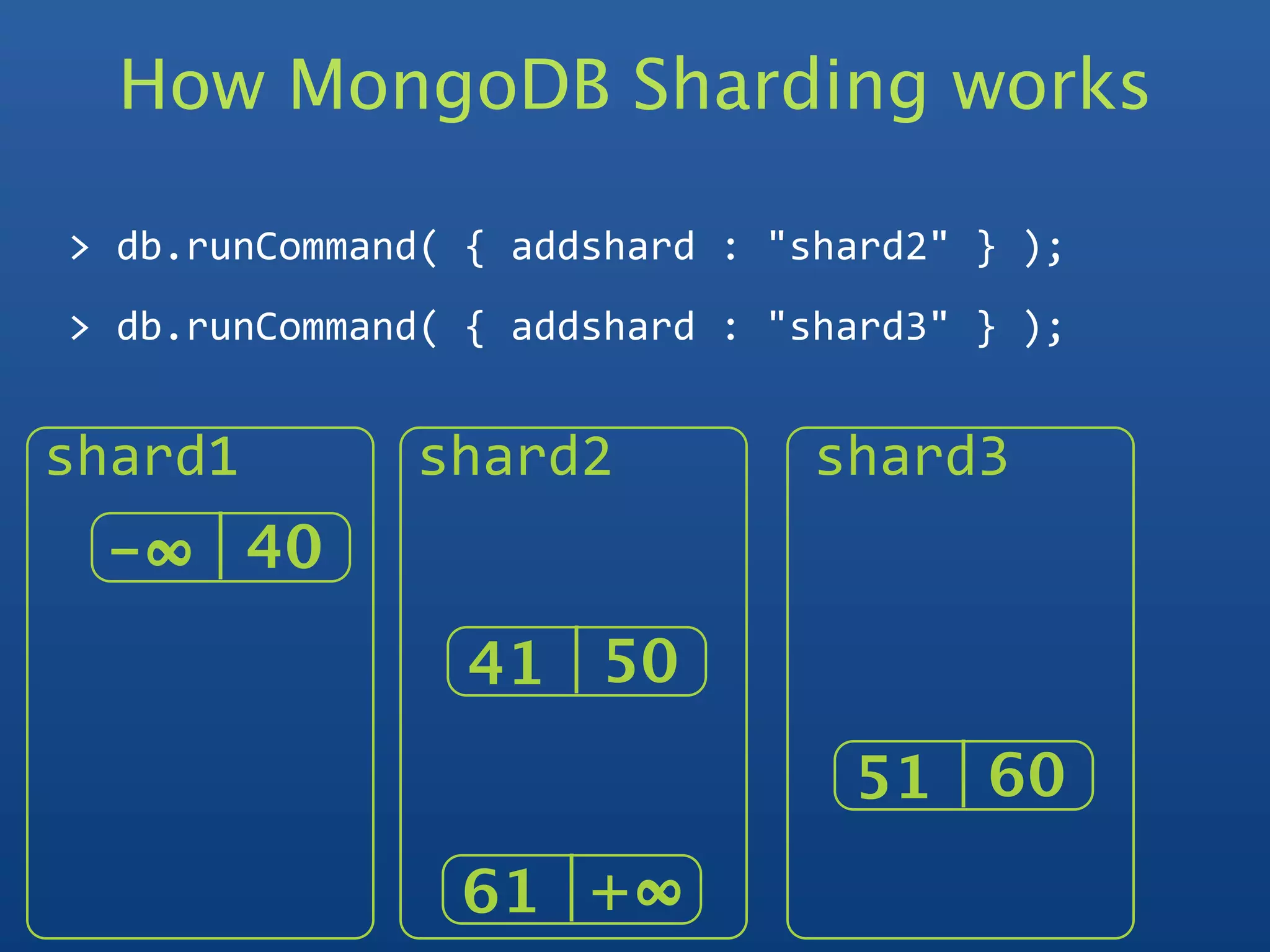
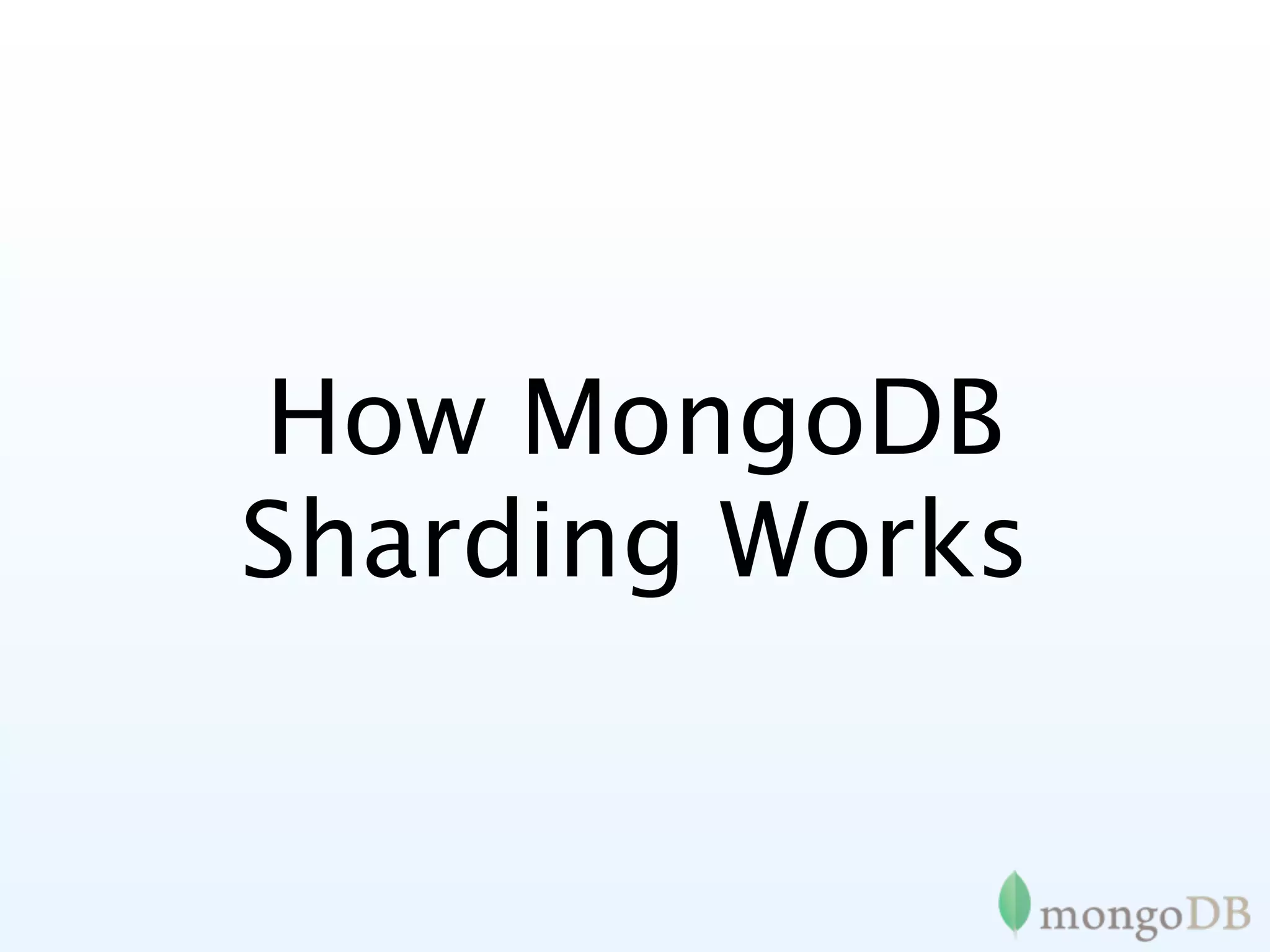
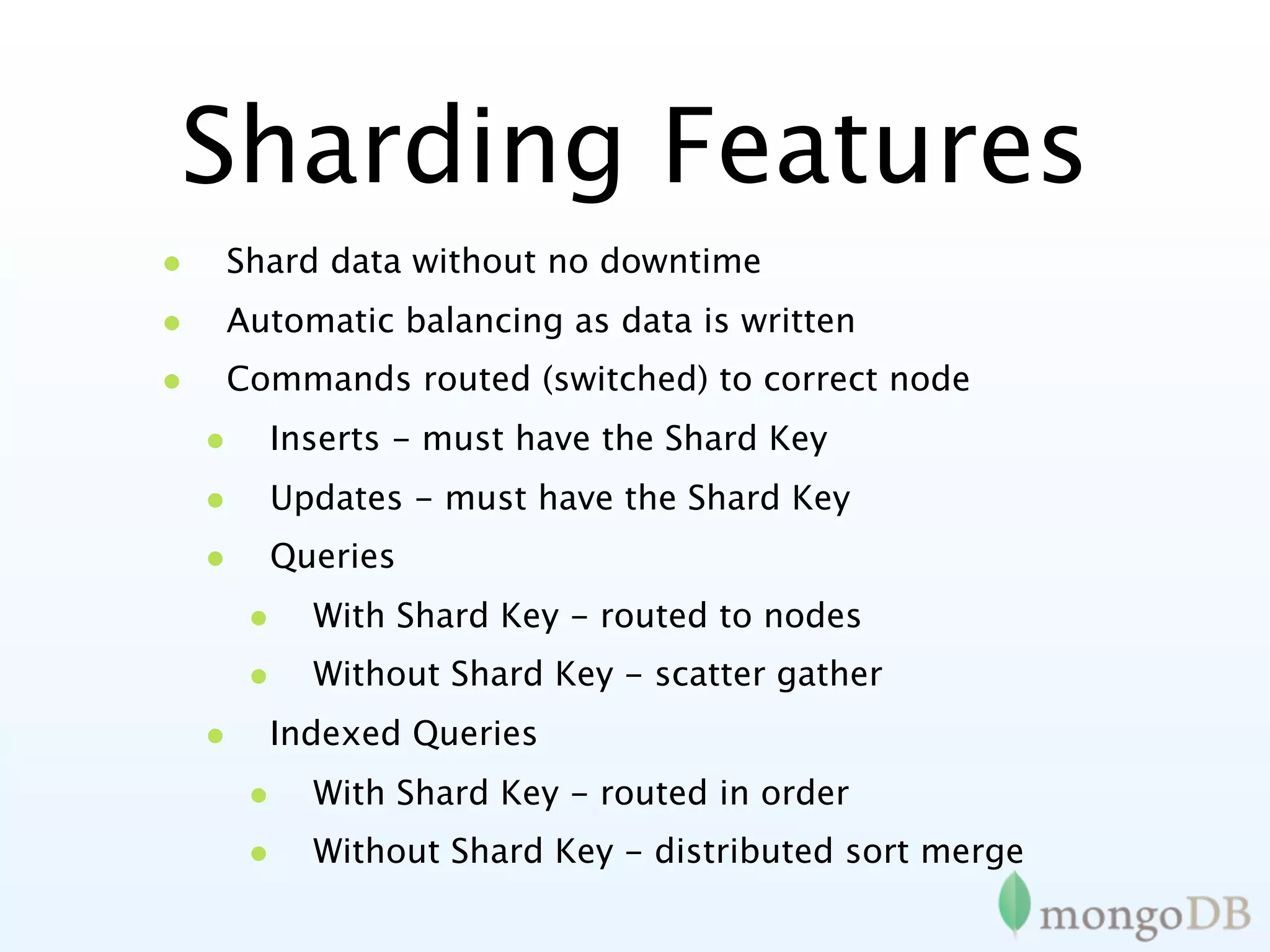

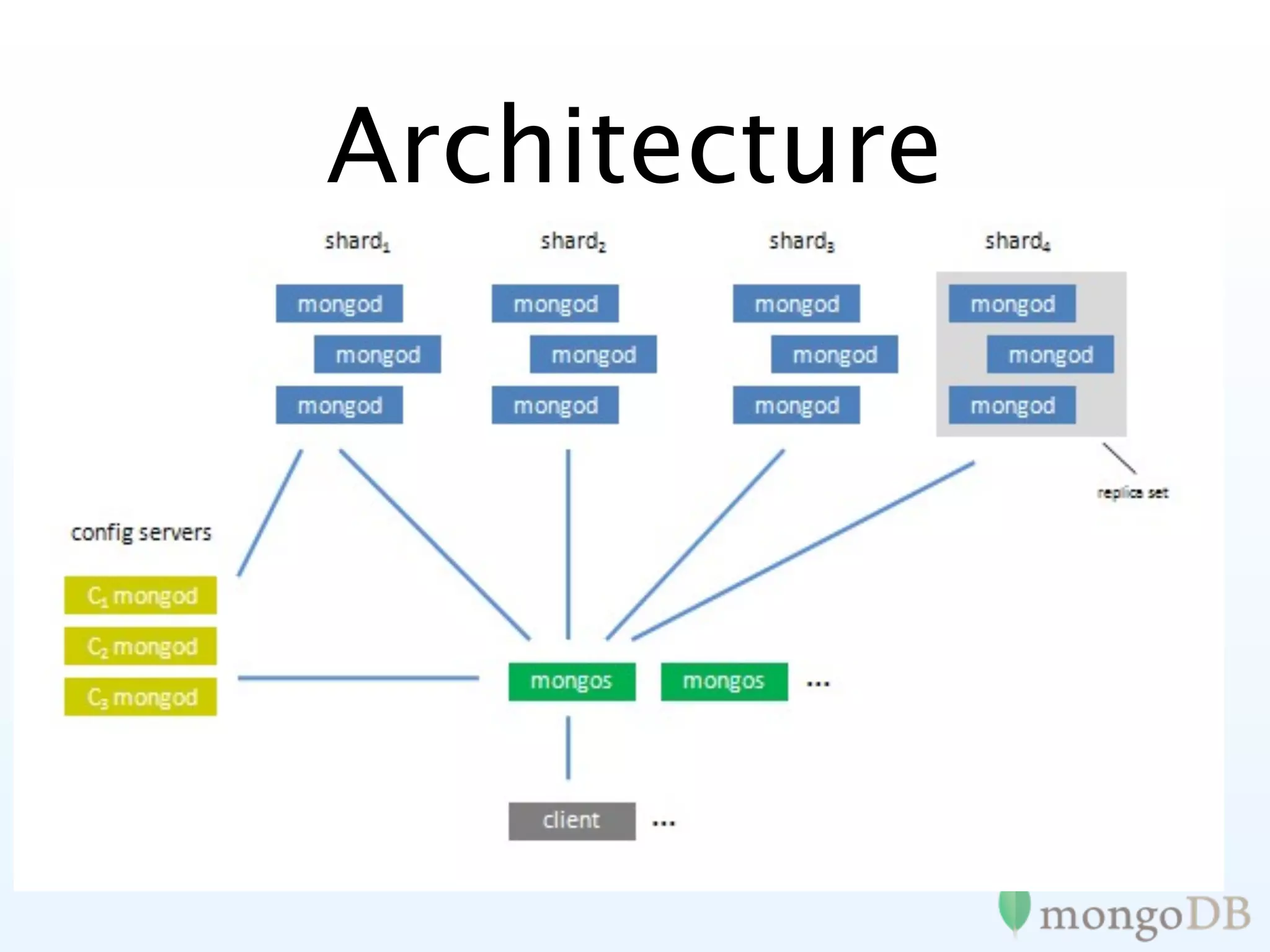

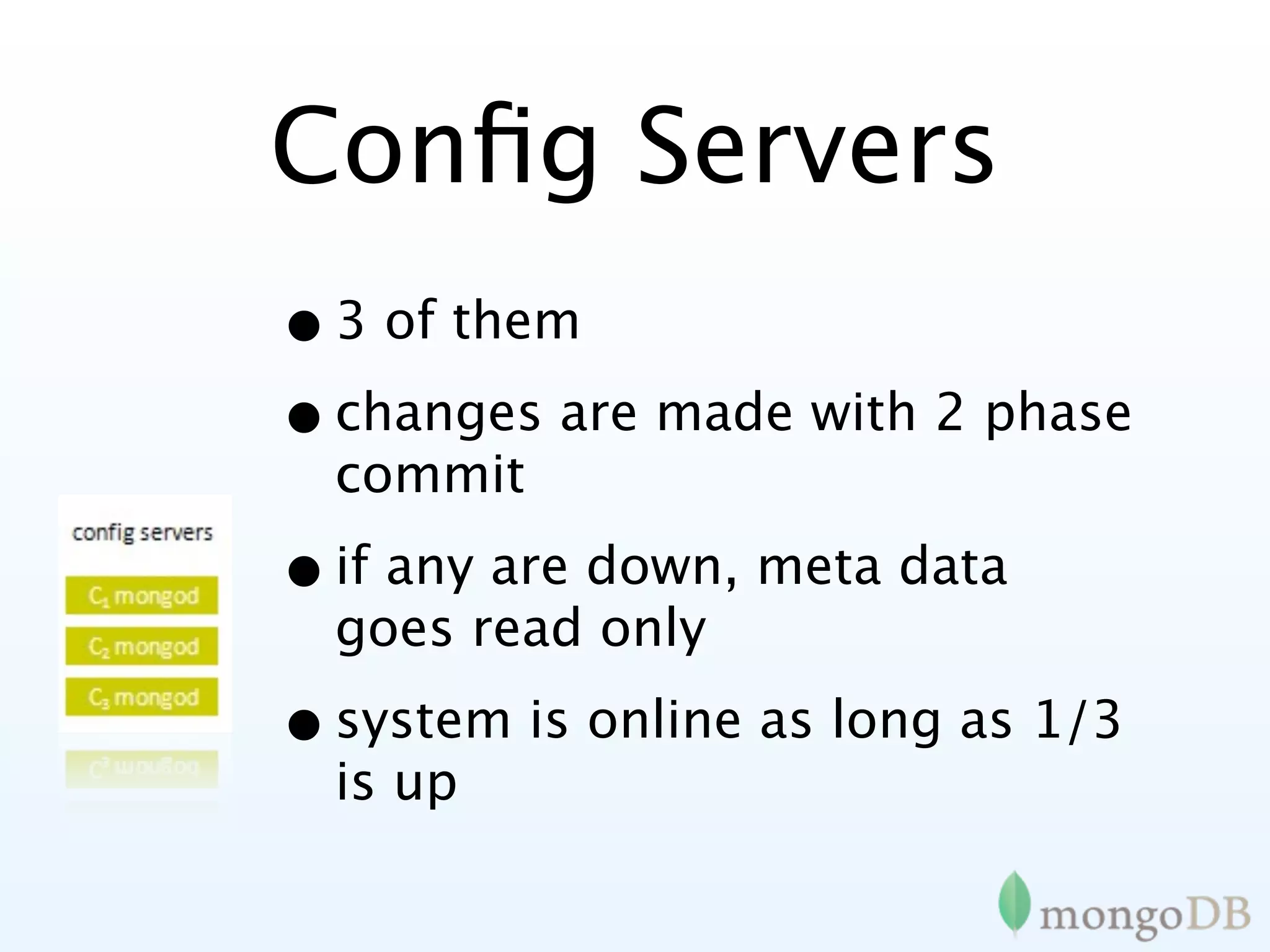
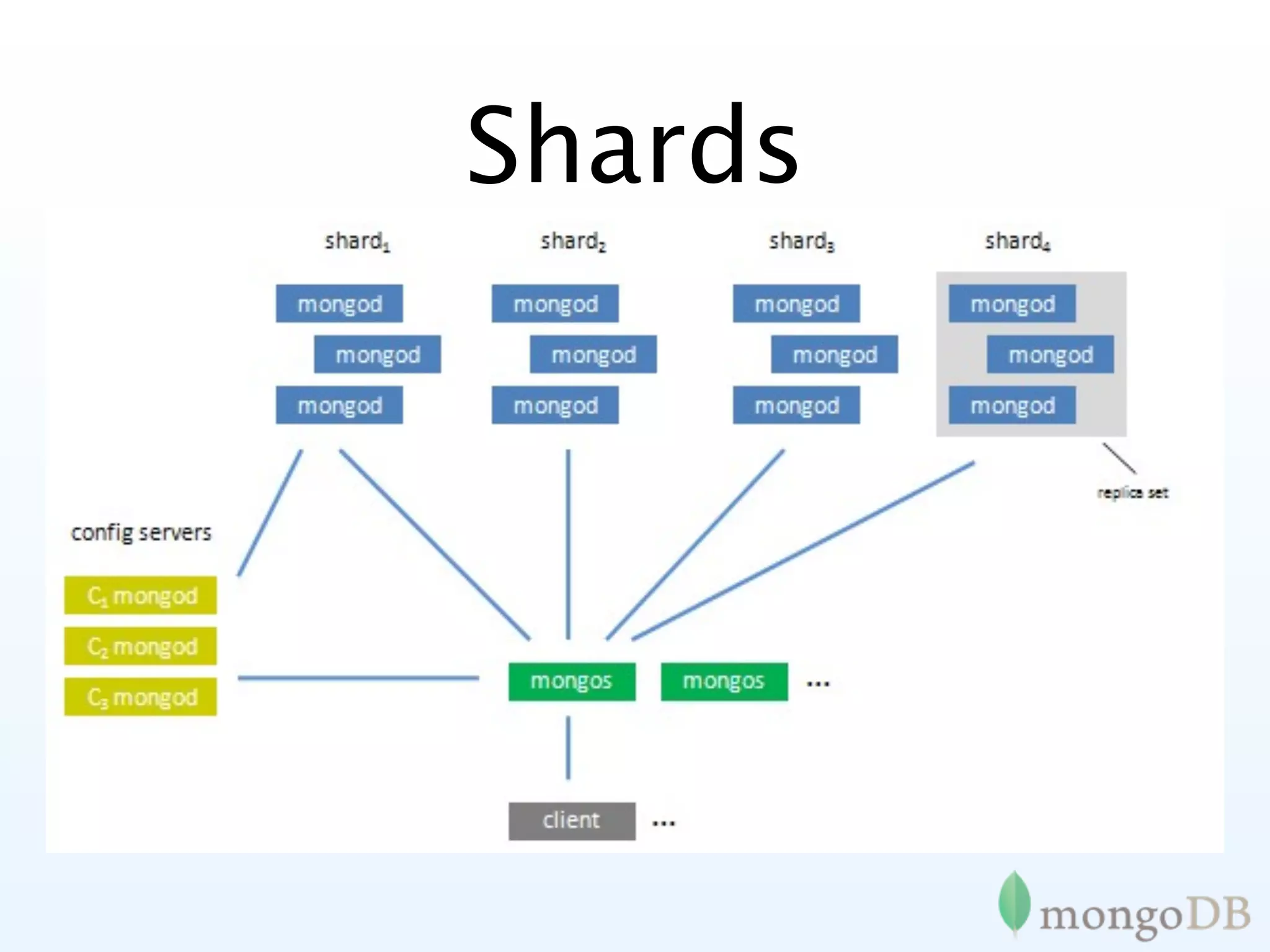
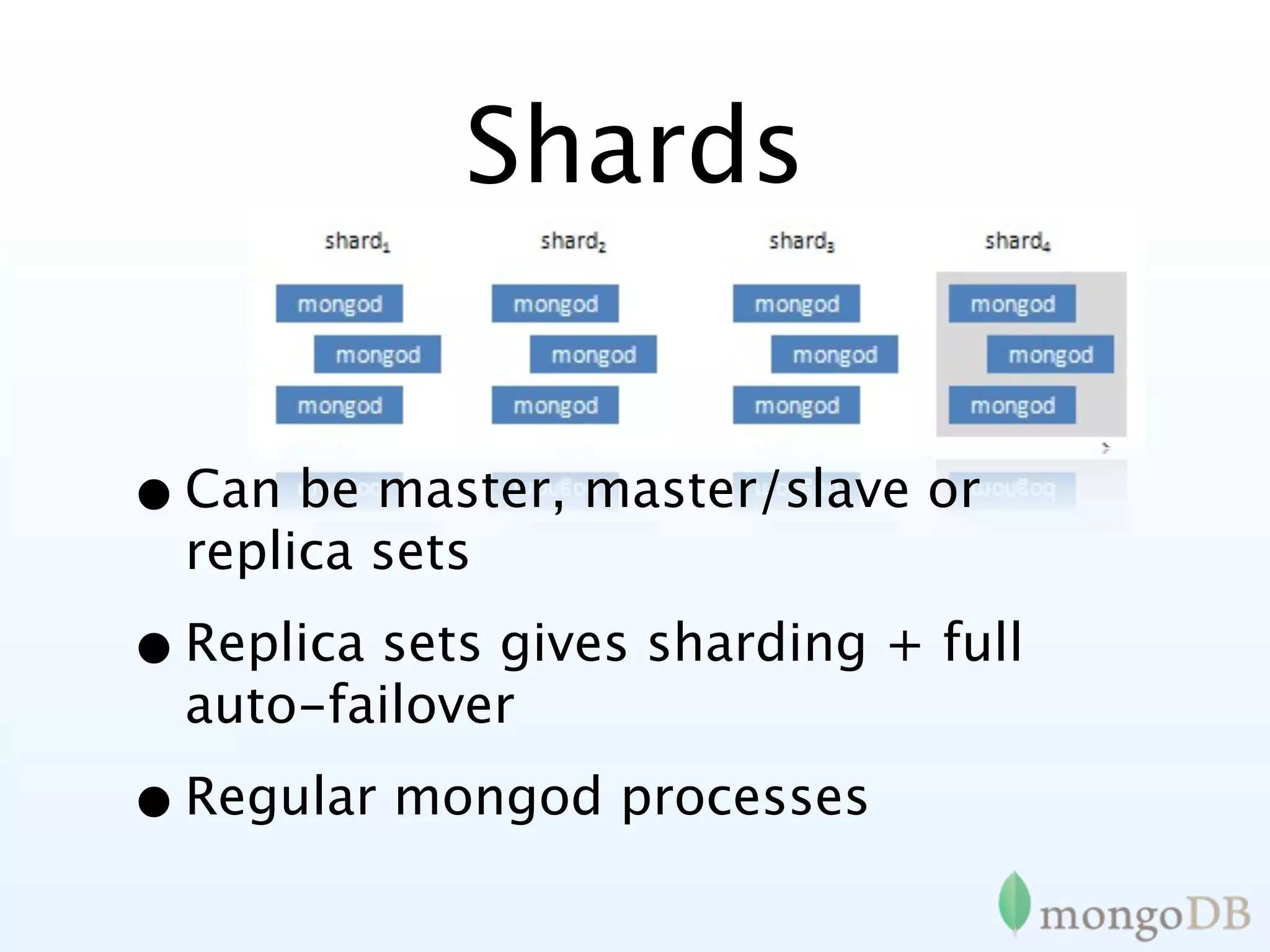
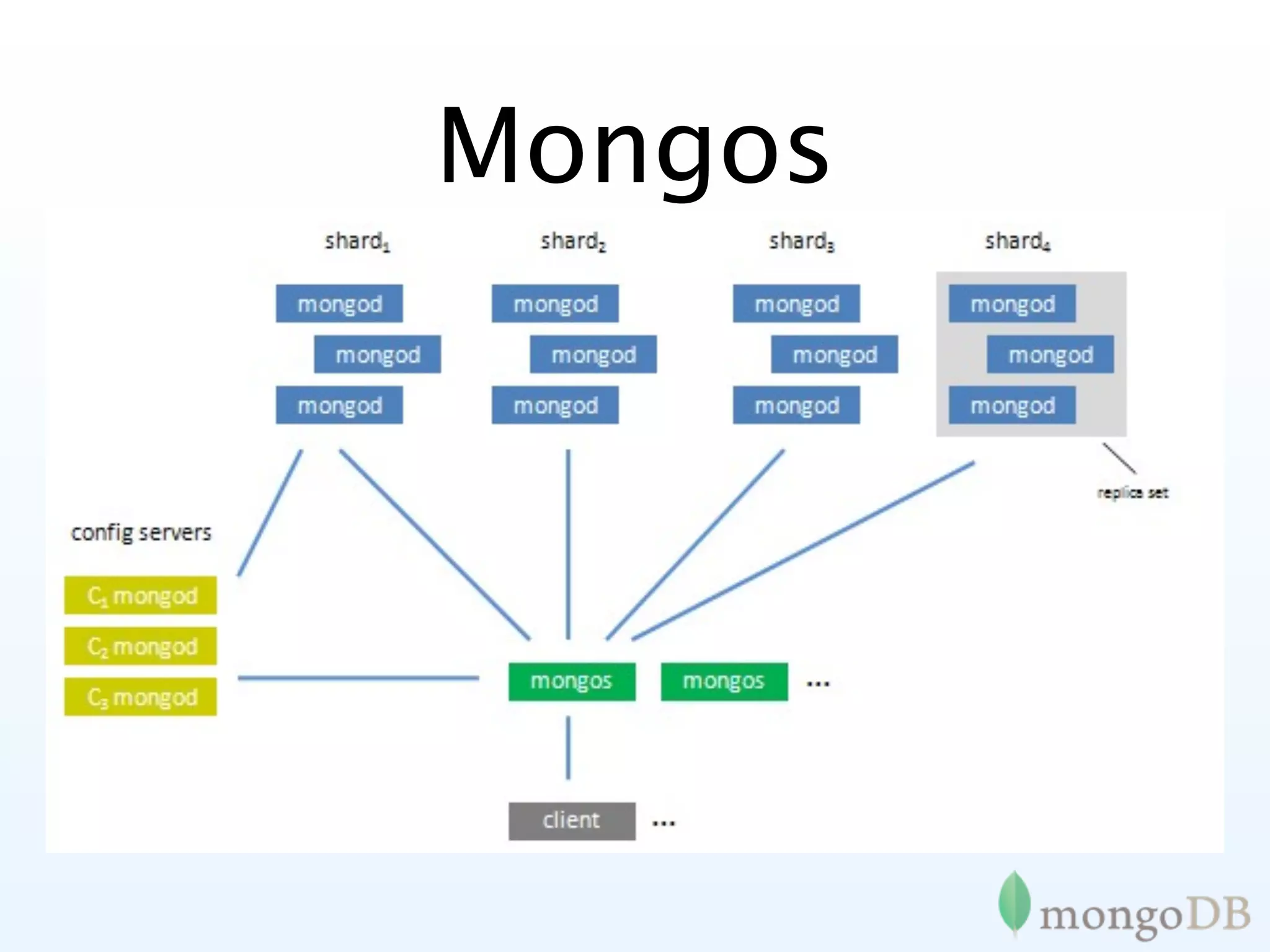
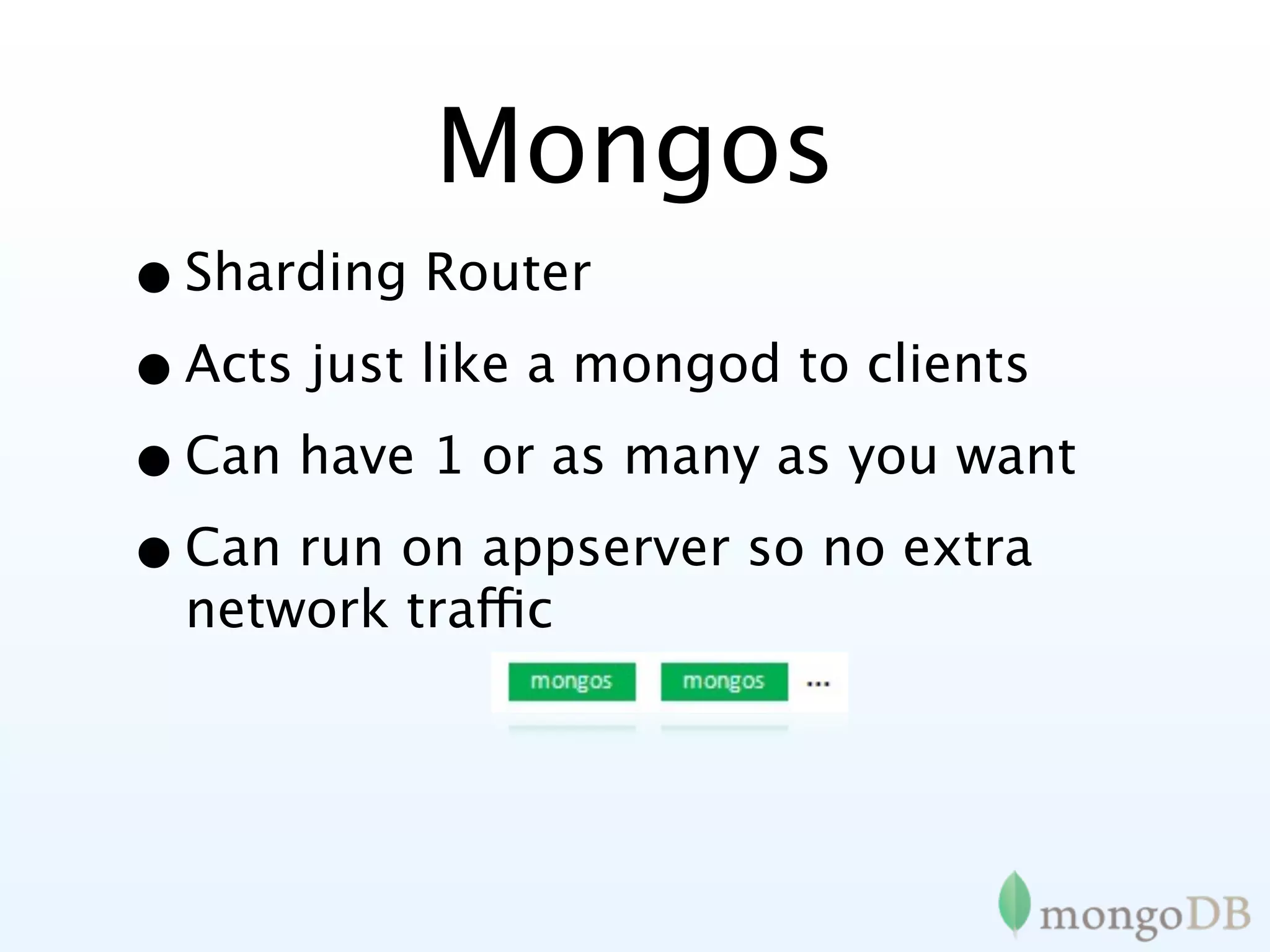

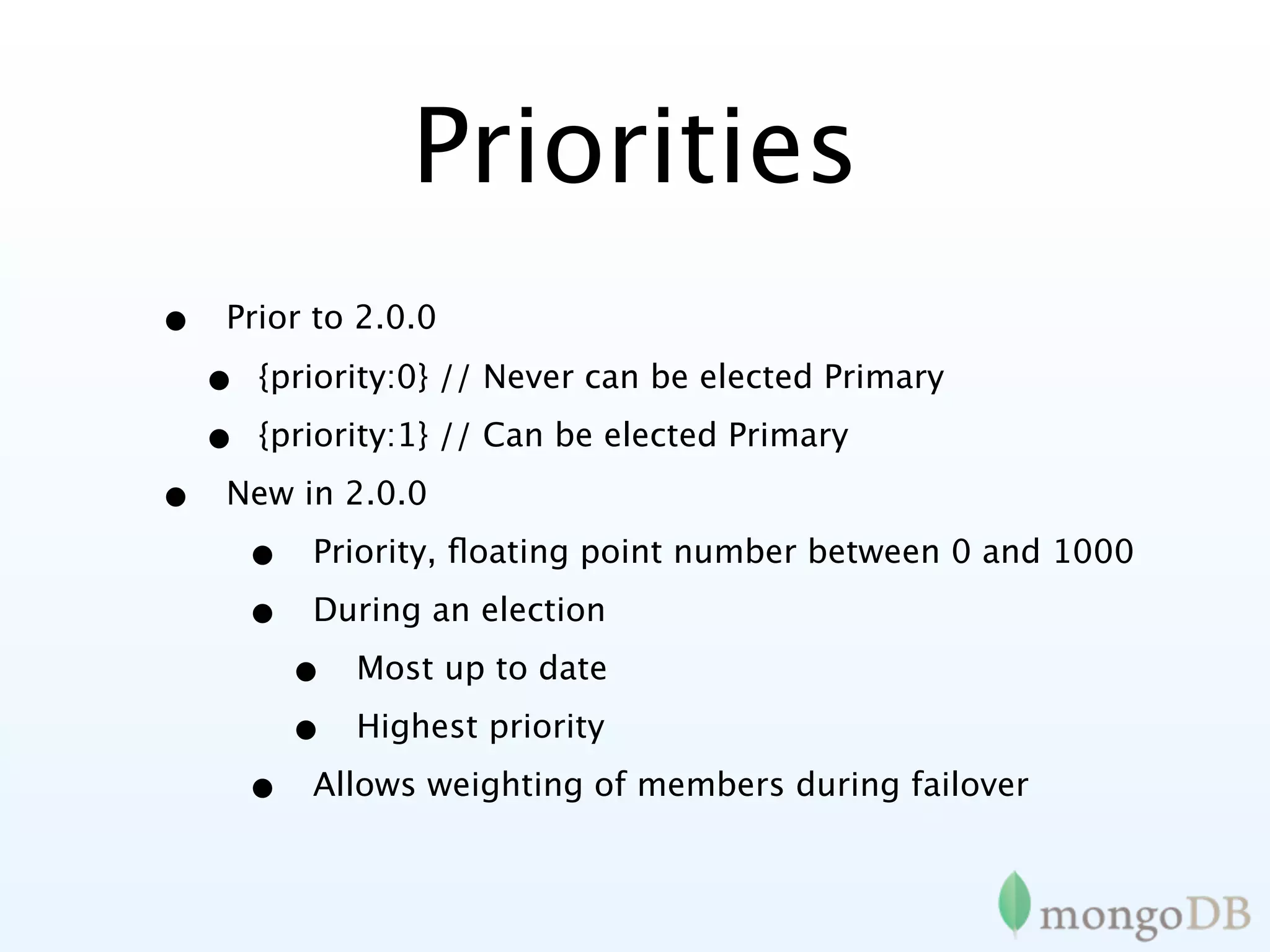
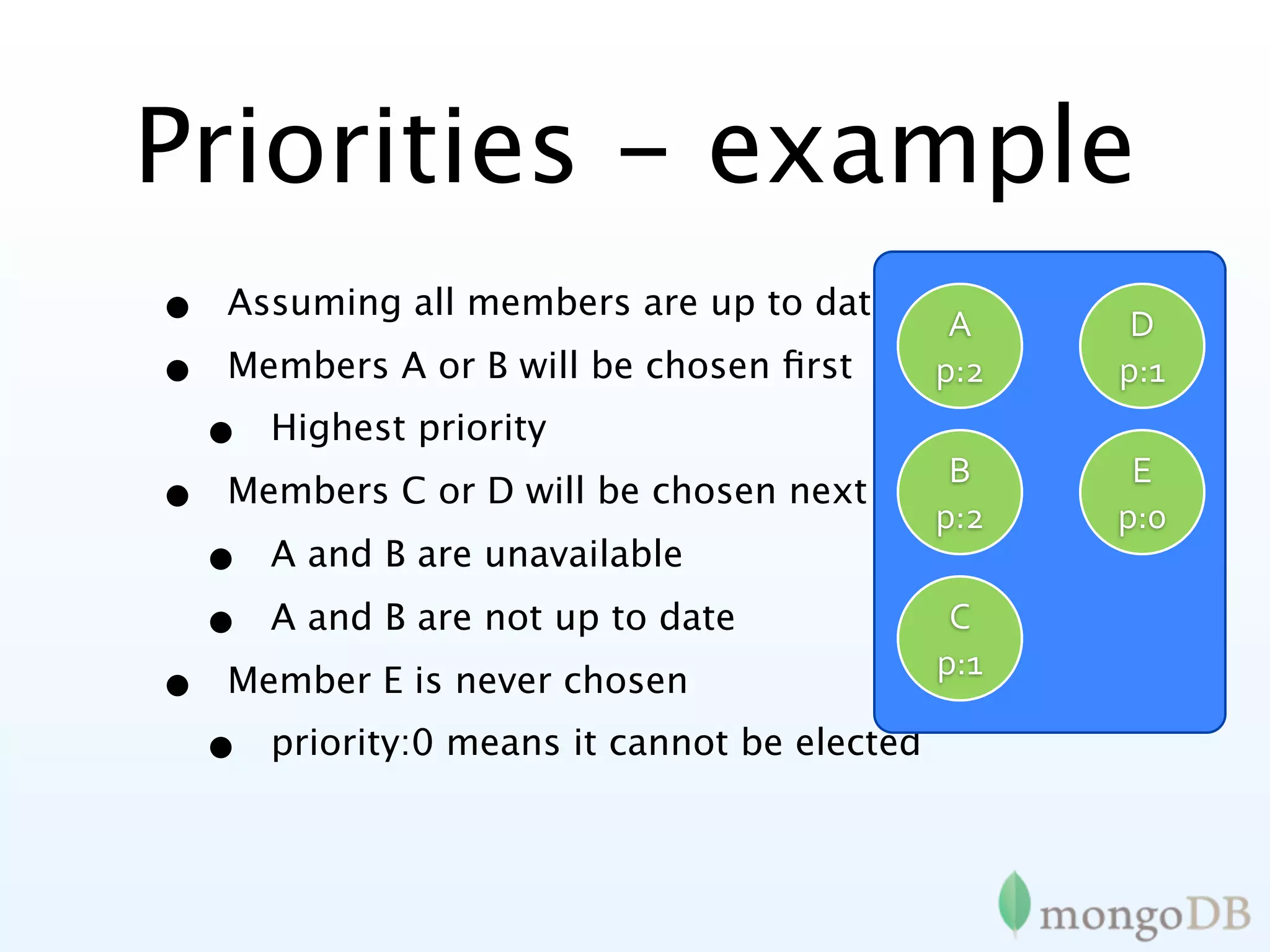

![Tagging - example
{
_id : "mySet",
members : [
{_id : 0, host : "A", tags : {"dc": "ny"}},
{_id : 1, host : "B", tags : {"dc": "ny"}},
{_id : 2, host : "C", tags : {"dc": "sf"}},
{_id : 3, host : "D", tags : {"dc": "sf"}},
{_id : 4, host : "E", tags : {"dc": "cloud"}}]
settings : {
getLastErrorModes : {
allDCs : {"dc" : 3},
someDCs : {"dc" : 2}} }
}
> db.blogs.insert({...})
> db.runCommand({getLastError : 1, w : "allDCs"})](https://image.slidesharecdn.com/mongodb-slc2011-111020102909-phpapp01/75/MongoDB-102-2048.jpg)
